Items tagged with 'Capital Region'
Capital Region economic development grants: residential conversions, sewers, Lincoln Park pool, Urban Grow Center
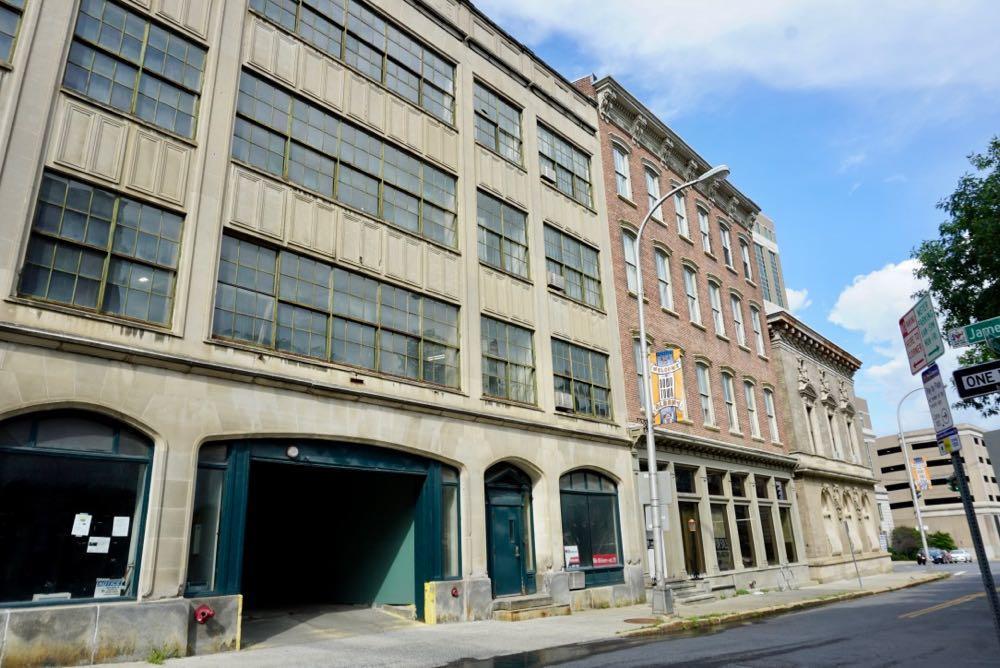
The residential conversion of the Kennedy Garage in downtown Albany is line for a $1 million grant.
The Capital Region scored $67 million in the state's annual Region Economic Development Council awards/game show/porktacular on Tuesday.
The region was not a "top performer" this year -- the awards roughly broke out into $80some million and $60some million tiers this time around. (The Capital Region had been in the higher tier the last two years.)
Here are details on the specific projects getting funding in the Capital Region are below, along with a bunch of that caught our eye. There are also region-by-region totals for the awards.
Albany winters have been getting warmer
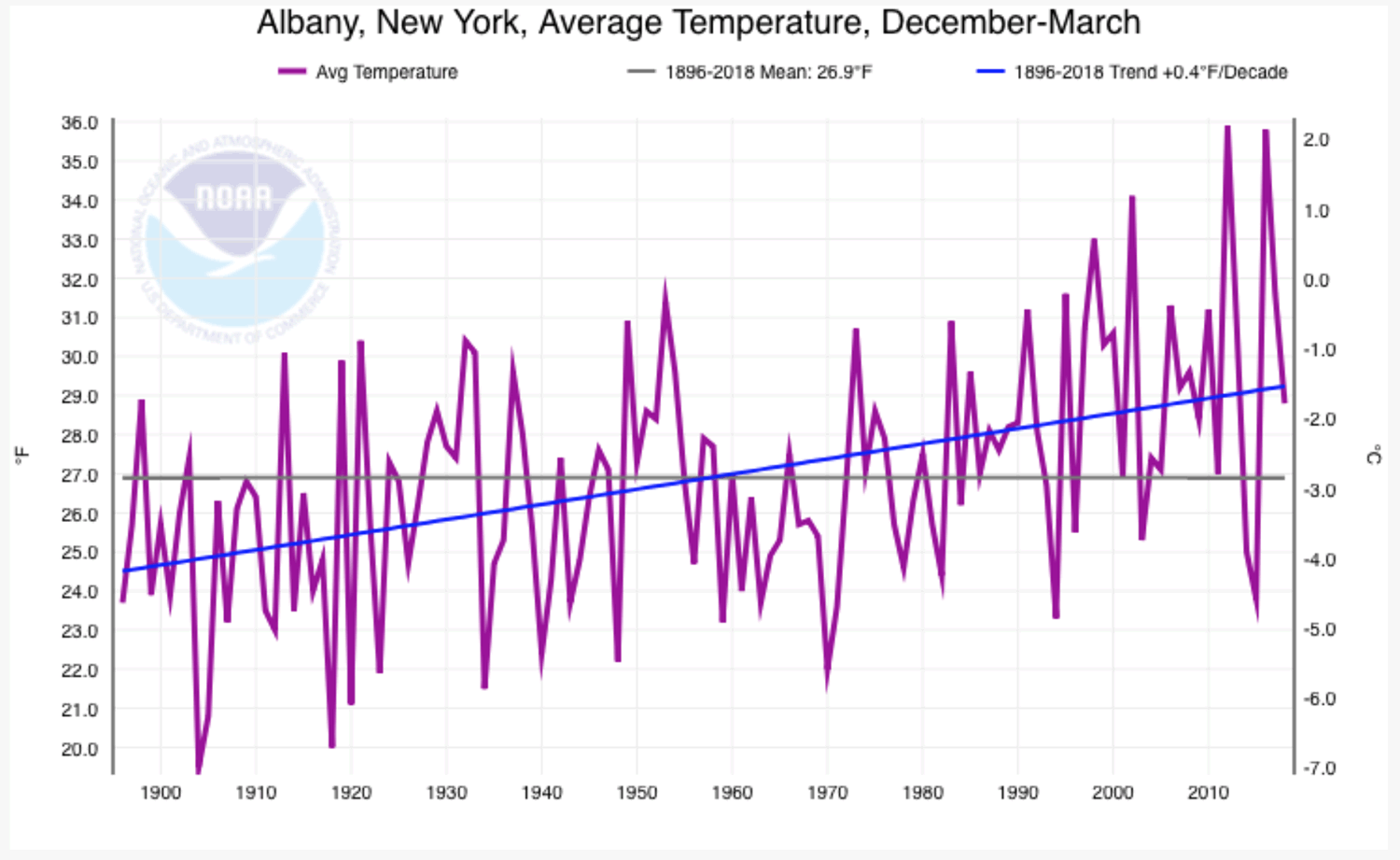
Here's a larger version.
A lot of people seemed to enjoy last week's post about when it's "actually" winter here -- that is, the part of the year here that tends to have the coldest temperatures rather than the standard definitions of the season. We looked at it two ways, and the best way (in our opinion) pegged winter in the Albany area as being from December 1 to March 20.
So here's the B side to that track: On average, winters in the Albany area have been getting warmer over the last century (plus). And not by a little -- the average December-March temperature here has been trending up by .4 degrees Fahrenheit per decade.*
That graph above was generated by an interactive tool on the website for NOAA, the federal agency. It shows the trend for average December-March temperatures in Albany between 1896 and 2018.
Here are a few more bits.
Here's when the seasons really start and end in the Albany area*
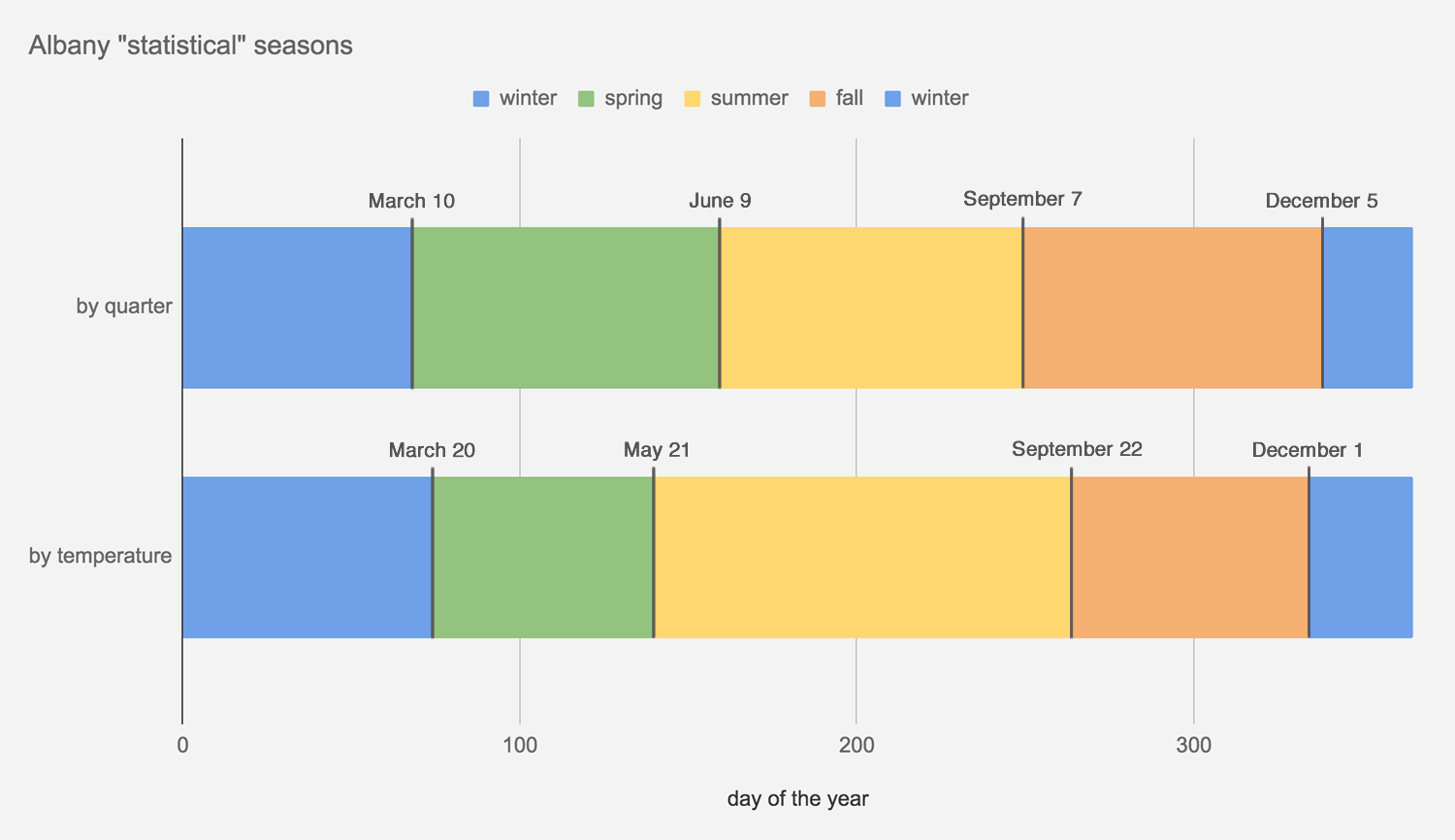
* On average. And by these definitions, which are just one or two ways of looking at this topic. Really, it's winter whenever you decide to switch to the big coat and put the shovel in the car. | Also: Here's a larger, easier-to-read version of this graph.
Winter starts December 21 -- by the astronomical definition. And it starts December 1 by -- the meteorological definition.
But when does it really start in Albany?
Inspired by a chart and discussion on Twitter today attempting to mark the start of seasons in various places around the country based on normal temperatures, we figured it'd be interesting to look at the daily temperatures in Albany in order to define what you might call the "statistical" seasons. That is, when the seasons start based on what the temperatures actually are and not what the calendar says.
Of course, you can interpret numbers all sorts of ways. And in this case we ended up doing it two ways:
+ Breaking the year up into (roughly) four quarters according to normal temperatures. Winter's the coldest 25 percent of the days each year, summer's the warmest 25 percent, and spring and fall are what's in between. Looking at it this way, winter starts December 5 and lasts until March 10.
+ Looking at the distribution of temperatures here throughout the year and defining winter and summer as the days when temperatures are either in the bottom or top 25 percent of the distribution. Spring and fall are everything in between. Looking at it this way, winter starts December 1 and lasts until March 20.
And: See resulting chartage above. Don't worry, we've included a larger version here, along with a bonus graph.
Here's a bit more explanation and weather nerding...
Friend connections across space and time
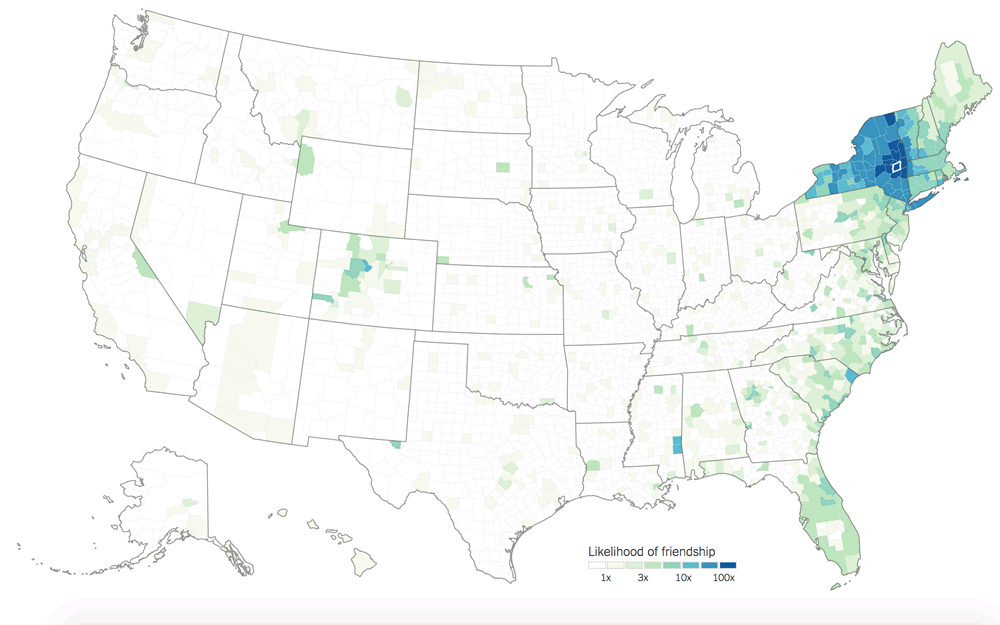
This is just a screengrab. If you head over to The Upshot, there's an interesting interactive map with sorts of info.
Over at the New York Times, The Upshot has an interesting interactive look at some research into Facebook friend links by place. Basically, the team of researchers tried to figure out how closely counties are connected by these social ties:
The darker the color, the greater the relative likelihood that any two people living in two different counties are connected on Facebook. Counties that are broadly tied to more -- and more distant -- places will color in more of the map. Counties where nearly all ties are very local will look more isolated.
That's a clip of the interactive map above selected for Albany County. A couple quick things that we noticed:
+ It's notable how East Coast-heavy the connections are for the Capital Region core counties -- not just eastern United States, but the actual coastal area. (Though Saratoga County's connections are a bit more widespread nationally.)
+ Maybe you noticed those two counties in Mississippi that stick out as having a relatively high number of connections to Albany County? They're Wayne County and Clarke County. And if you click on Clarke County in the NYT's interactive, Albany County pops up as a highly-connected place for it. The reason, we suspect, is history: Shubuta, Mississippi is in Clarke County. And it was from the Shubuta area that many families made their way from Mississippi to Albany during the Great Migration, first settling in the South End, with some families later moving to the Pine Bush.
There's a whole lot more at The Upshot about some of the patterns that emerged in the research about the effect of things like state lines. And there's even some new fuel for the ongoing "Where is Upstate?" discussion.
Mapping out the future for an alternative transportation network in the Capital District

The Capital Region already has a handful of popular biking and walking trails, but if you zoom out a little bit and look at the whole picture you can the see the outline of something a lot bigger.
That something is what Jennifer Ceponis, a senior transportation planner for the Capital District Transportation Committee, describes as an alternative transportation network: "Much like we have a highway system for cars -- with supporting roads and arterials that feed into that -- we want people to be thinking that the region can have a similar system but for bicycling, walking, and other recreational activities."
Toward that goal, the planning org has put together the Capital District Trails Plan, a map toward a future in which you might be able to ride a bike from, say, Voorheesville to Saratoga Springs and beyond on a network of paths.
Here are a few highlights.
Where the Capital Region's younger adults live
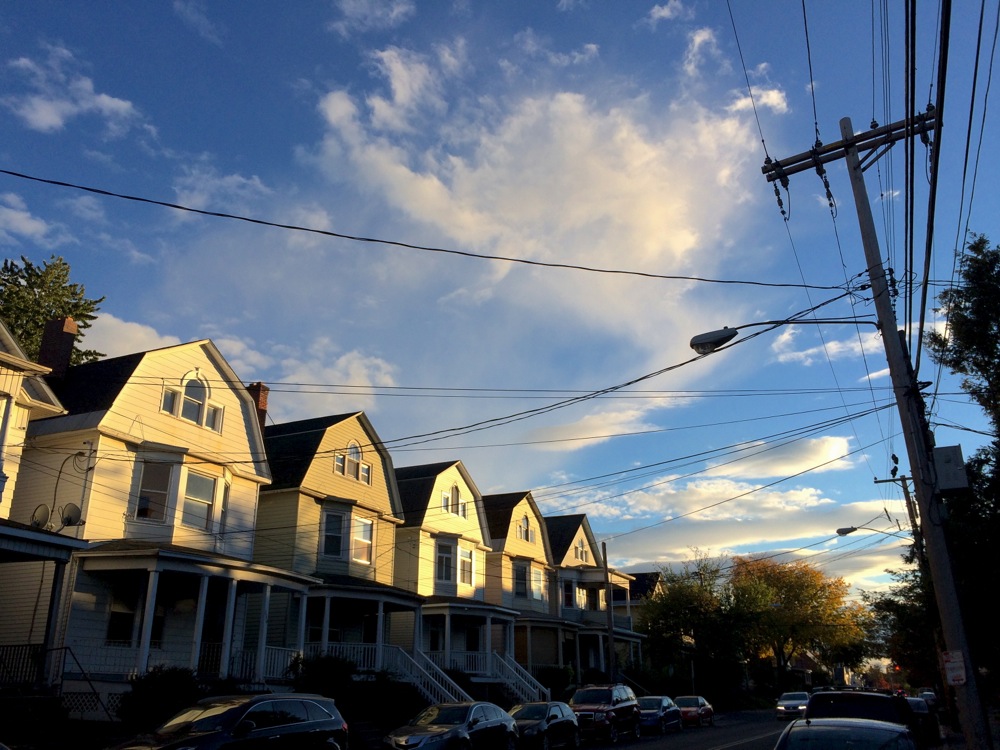
Maybe you saw that new list this week that ranked a ZIP code in Guilderland as the "best" neighborhood in Upstate New York for young adults.
The ranking was the result of some crunching by Buffalo Business First of Census numbers related to population, education, employment, businesses, housing, and income. That link includes an explanation of the methodology.
That a ZIP code in Guilderland would take the top spot in this sort of ranking raised some eyebrows. And we'd argue the list's methodology is basically a way of filtering for upper income people in their 20s and 30s.
Also: "Best" for whom? People in their 20s and 30s are a huge, diverse population group. Using a word like best is probably an overreach.
Anyway, the list got us curious about neighborhoods in the Capital Region that do have a lot of people 40 and under. So we rolled together some of our own clickable maps...
A pro soccer team for the Capital Region? Sure, in some form, why not?

FC Cincinnati -- and its big fanbase -- is making the jump from USL to MLS next season. / photo: Flickr user Hayden Schiff (CC BY 2.0)
Every now and then we see the idea of the Albany area getting a pro soccer team pop up during a discussion.
And, yeah, that could be a lot of fun.
Of course, when most people think "pro soccer" for the United States, they think MLS. And that... well, that's not going to happen in the Capital Region anytime soon (if ever).
Here's why, along with some other options for pro soccer that look a lot more likely.
How the Albany metro area compares favorably to places such as Boston, DC, and Austin
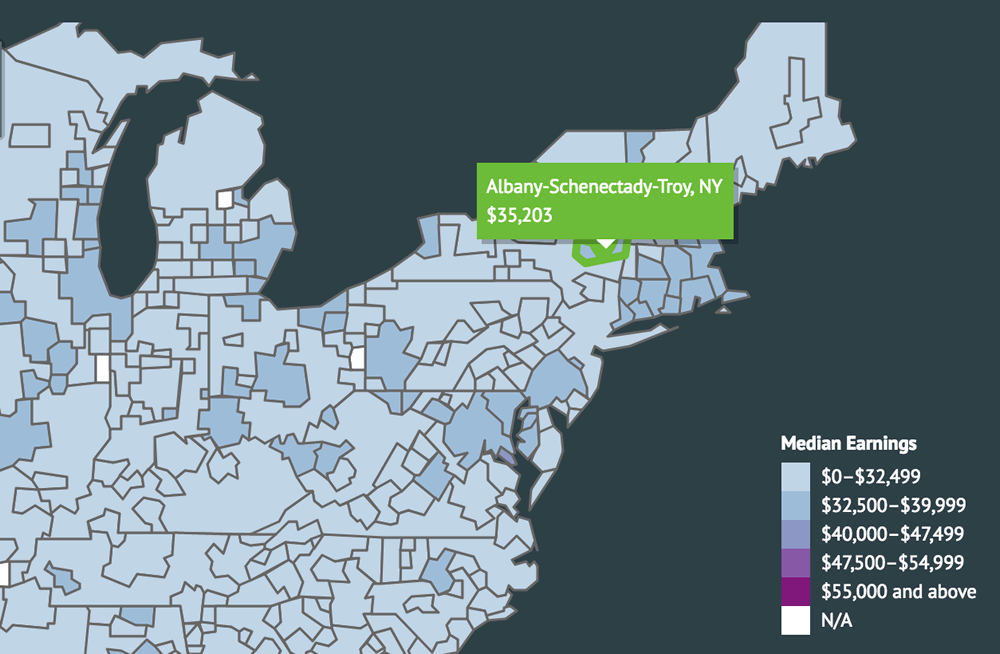
This is a screengrab from the Hamilton Project interactive visualization.
We were having a conversation the other day with someone about some of the things people who don't live here -- especially people from larger metros -- might not understand or appreciate about the quality of life here.
And one thing that immediately sprang to mind: There are (relatively) good job opportunities in the Albany metro area, and the (relatively) low cost of living means you can live here (relatively) comfortably without having to scrape like you would in a lot of big/coastal metros.*
That point is illustrated by this interesting interactive data visualization from The Hamilton Project at Brookings -- it depicts median income by occupation and age across the nation's 300some metro areas. (It's attached to an analysis aptly titled "Where Work Pays: How Does Where You Live Matter for Your Earnings?")
And here's the important thing: it gives you the option to adjust for cost of living and taxes.
So how's that work out for Albany?
Here are the most popular drop-off spots for Uber and Lyft in this area
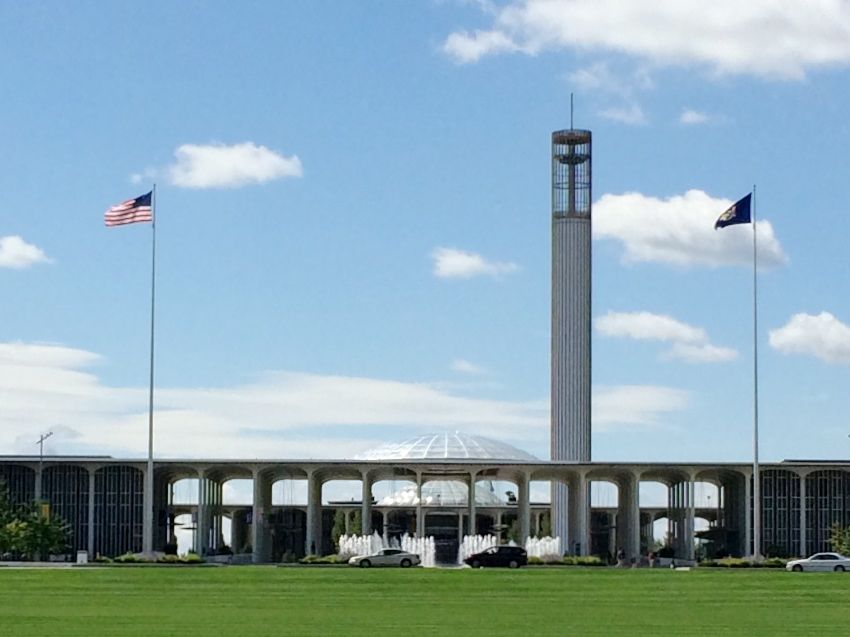
A popular spot for both Uber and Lyft.
It's now been a year since ride-hailing services such as Uber and Lyft have been allowed to operate across New York State.
And this week the two companies shared lists of their most popular drop-off destinations in the Capital Region.
Let's have a look.
The Capital Region's home ownership rate ticked upward last year for the first time in a while
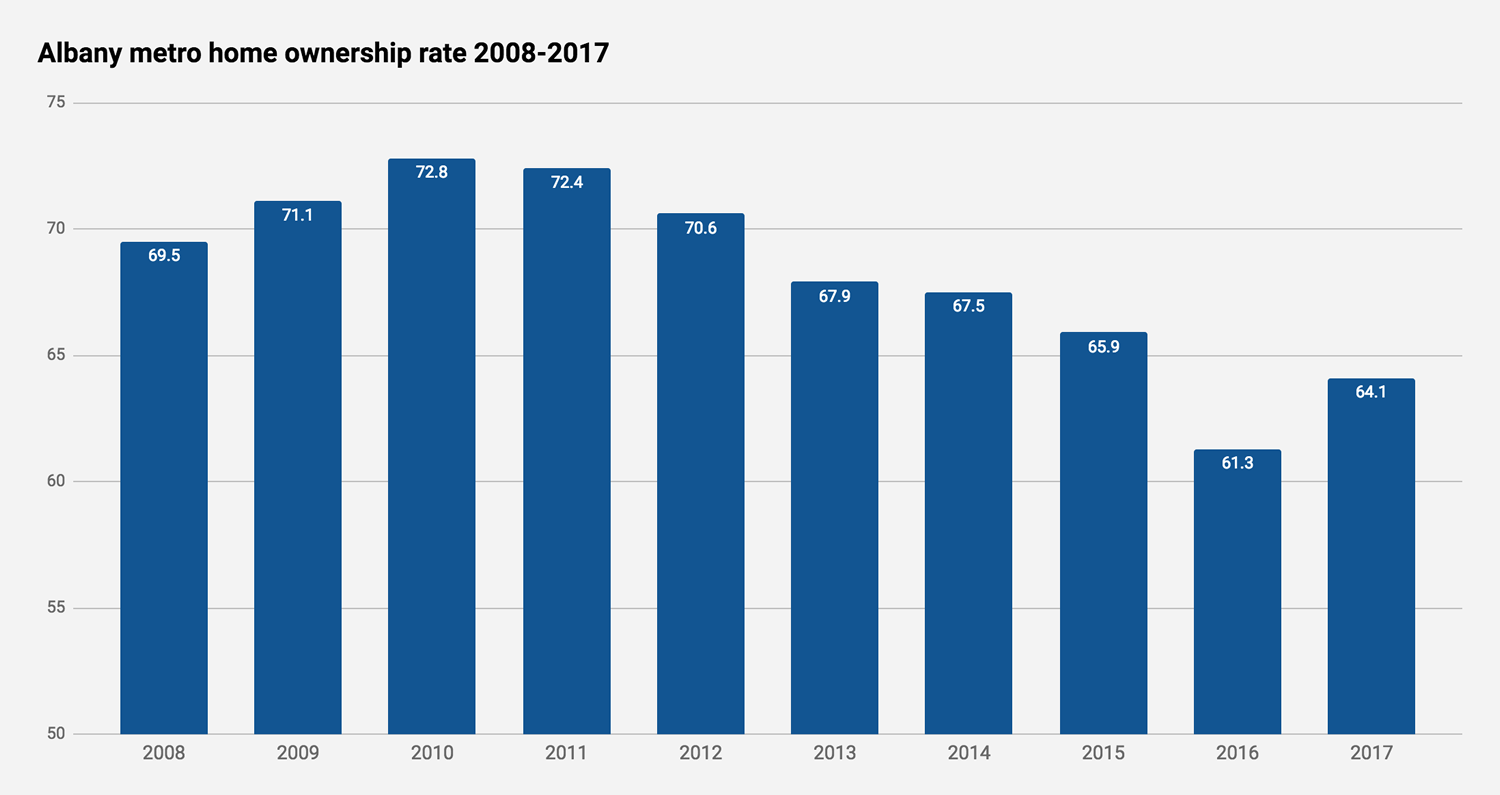
The Capital Region's home ownership's most recent peak was in 2010. It ticked up for the first time since then in 2017. Do note that the scale for the rate starts at 50. There's a chart with a from-0 scale inside. / data via US Census Bureau
Another few bits for the apartments / rents discussion...
The home ownership rate in the Albany-Schenectady-Troy metro area ticked upward for the first time since 2010 last year.
The Albany metro's rate was 64.1 percent, according to the Census Bureau. That was up from 61.3 the year before.
That's interesting, in part, because there's evidence that the upswing in rents in the Capital Region also flattened out last year. Maybe it's a matter of demographics as the population peak of Millenials grows older. Maybe rents have just risen to a point where it makes more financial sense to buy a house. (As with any complicated topic, it's probably some of those things and a bunch of other stuff, too.)
Anyway, you know that we have an additional chartage, because of course...
All the Capital Region's sidewalks
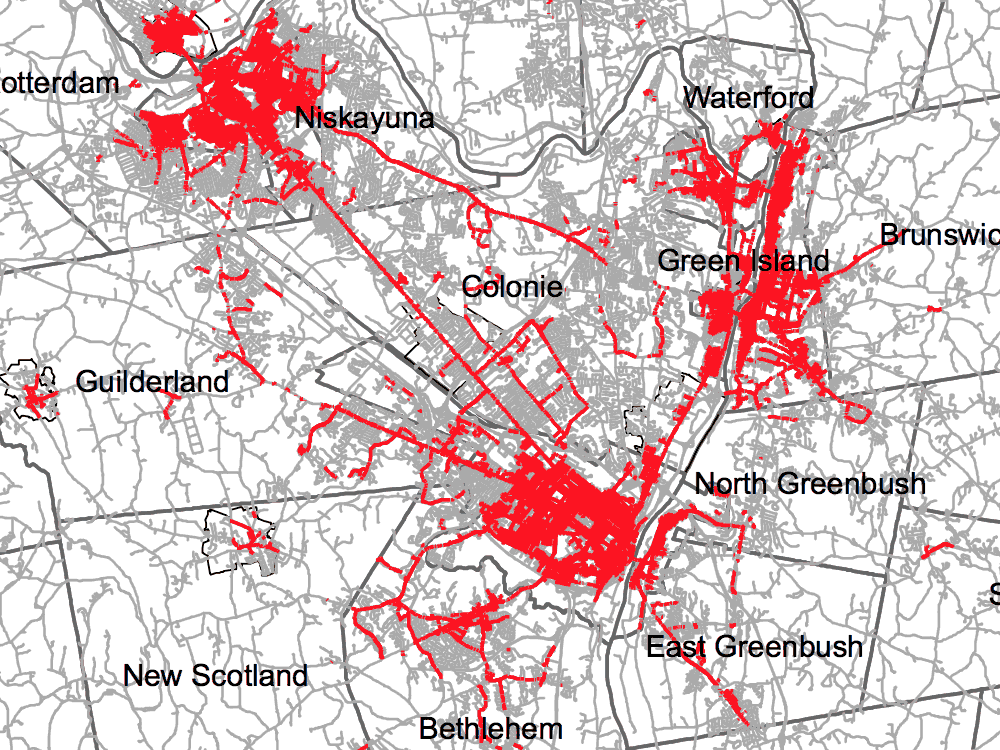
We enjoy both maps and sidewalks.
So, not surprisingly, we were interested in this new map of all the sidewalks in the Capital Region. That's some 1,225 miles of sidewalk.
The map is the the product of three years of work by the Capital Region Transportation Committee. It was created primarily for compliance work for the Americans with Disabilities Act, and also to assist with planning for pedestrian infrastructure.
Also: It's a map of all the sidewalks.
Here's the full map and a few bits...
Maybe all those new apartments are starting to have some effect on rents
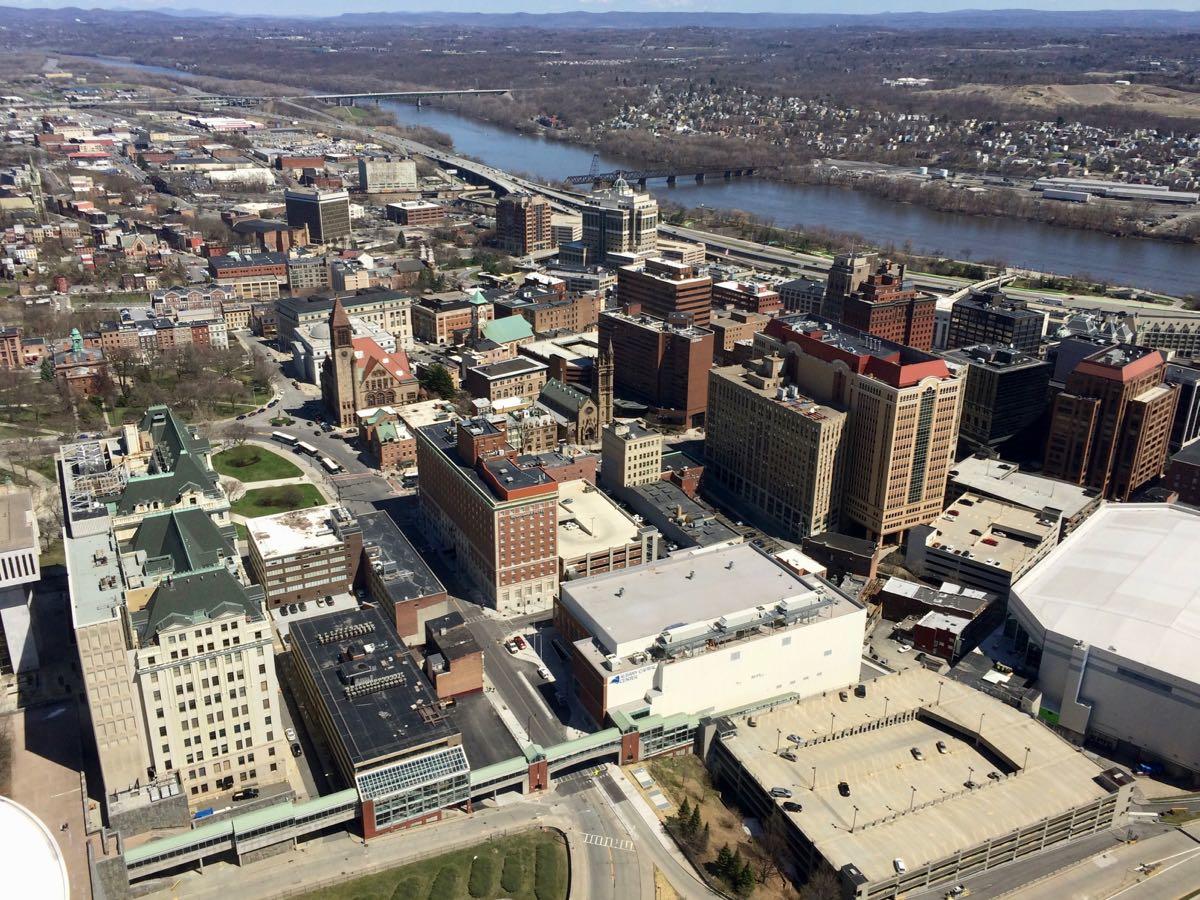
Downtown Albany has been hot spot for new apartments in recent years.
A sort-of follow-up to the recent post about all the apartments the Capital Region has been adding the last few years (with many more in the pipeline)...
Capital Region rents have been on an upswing during the past half decade, but that increase appears to have flattened during the last year. That's one of the bits from the new Capital Region multi-family market report published by Sunrise Management & Consulting.
Sunrise president Jesse Holland in a press release: "The data indicates that the market is getting saturated ... Everyone wants to know if the time to build more apartments is over, or if the economy is going to take off."
A chart (because of course) and a few more interesting bits from the report...
Apartments, apartments, and more apartments
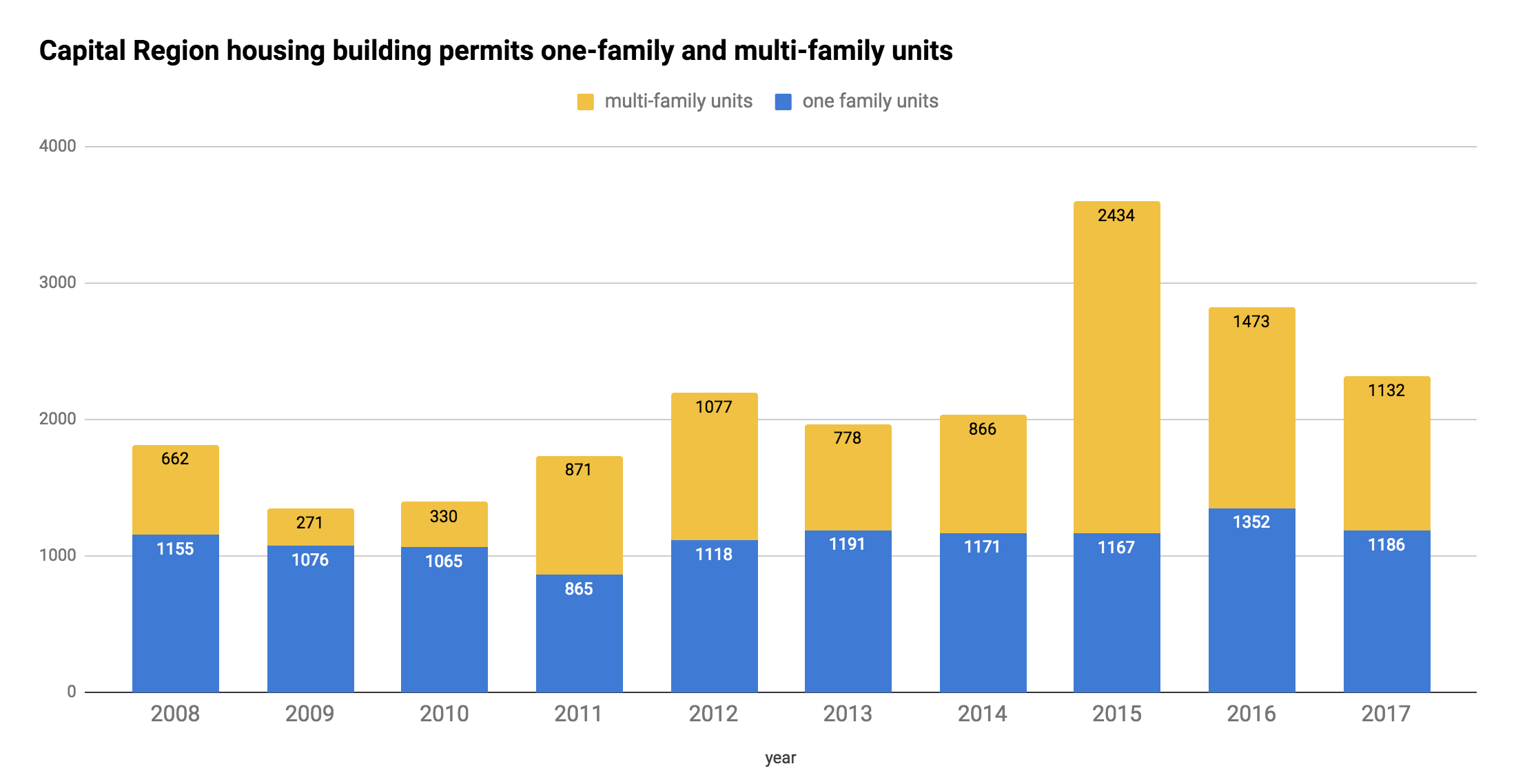
Capital Region building permits for residential units over the last decade -- for single family homes and units in multi-family buildings.
Sometimes during episodes of Exciting Tales of the Albany Planning Board and related whatnot, we refer to the apartment building boomlet that's been going in Albany and around the Capital Region.
Right, so about the specifics of that boomlet... The Census Bureau collects data on the number of building permits for housing units issued each year in each municipality. And those numbers help draw the outline of this trend.
For example: The chart above shows the number of overall units covered by building permits issued for the four core Capital Region counties over the last decade -- along with how many of those units were in multi-family buildings (yellow). And as you can see, there's been an upswing in multi-family units in that time, especially the last few years.
More context? More details? OK, let's have a look...
Must-do Albany/Troy activities for new arrivals to the Capital Region?
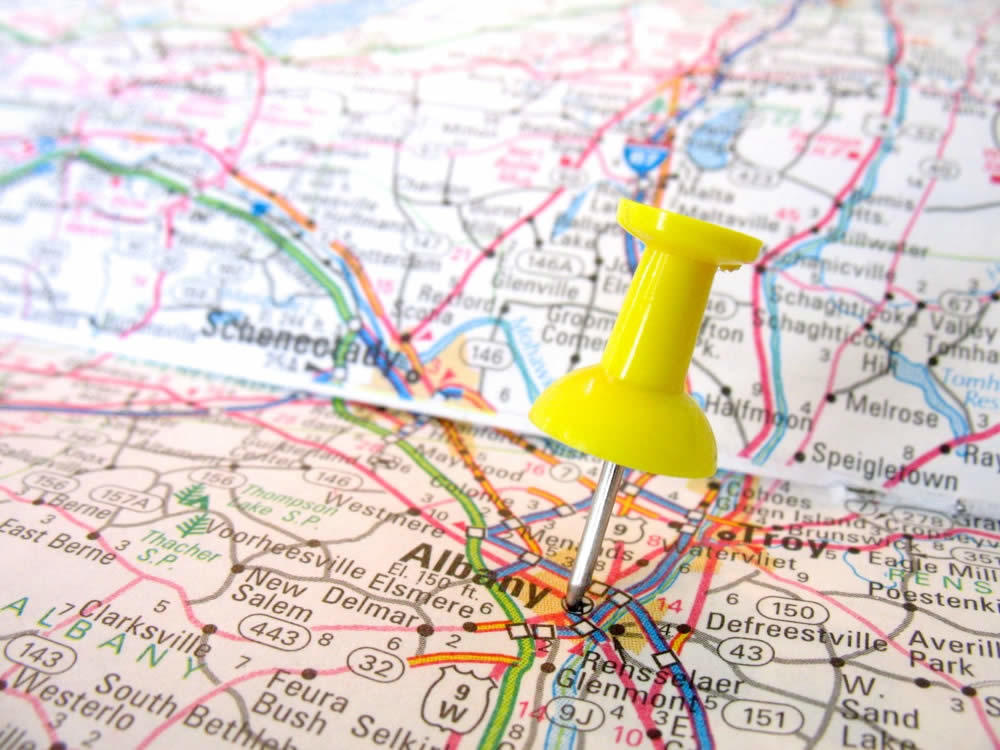
Lindsay emails:
Some long-time friends of mine will be moving to the Capital Region in June, and I was looking for some expert/crowd-sourced advice on must-do Albany/Troy/etc activities for Capitol Region neophytes, anywhere from the mundane-- signing up for Price Chopper rewards cards-- to fun things, like attending a concert at SPAC.
We know there are more than a few people in the AOA crowd have moved to this area from somewhere else. And we're guessing you might have some good ideas. On the flip side, if you've lived here all your life, we bet you might have a few things in mind that someone would now only only from maybe living here most of their life.
So, got a suggestion for Linday's friends? Please share! And a sentence or two explaining your suggestion can be helpful.
Earlier on AOA: You're New Here
Amazon Town
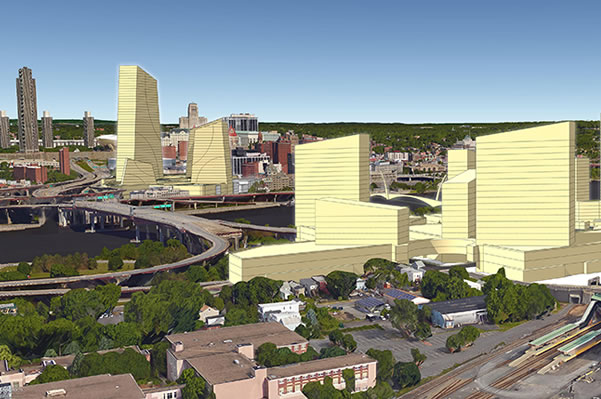
One of the renderings from the Capital Region's Amazon HQ2 bid.
You might recall that episode back in October when the Capital Region joined the mad rush to be colonized by Amazon -- there was pitching, there was laughing, and Albany experienced one of its regular cycles of self hatred. (Here are the 20 metros that made the cut as finalists.)
Well, now the Capital Region's full bid is out thanks to Jon Campbell and the crew at the USA Today Network. They FOILed the bids for the Buffalo, Rochester, Syracuse, and Albany metros from Empire State Development and posted them online. Here's the Capital Region bid.
On initial scan, it's pretty much what you'd expect from the summary released last year. But there were a few things that caught our eye...
Capital District Trails Plan

The Helderberg Hudson Rail Trail
One multi-use trail for walking and biking is good. Two is better. But a network of interconnected trails is best.
Toward that goal, the Capital District Transportation Committee is working to develop a Capital District Trails Plan, and it's looking for public input:
The Capital District Trails Plan is a strategy to link together the various multi-use trails in Albany, Schenectady, Rensselaer and Saratoga counties into a single connected network of trails for everyone in the region to enjoy. This planning effort will identify existing trail locations throughout the region and work with local communities to envision potential new trail routes which will infill missing segments, connecting to each other and to key points of interest. This plan, sponsored by The Capital District Transportation Committee (CDTC), will involve the input from residents, community leaders and stakeholders through different public meetings, workshops and surveys as they are scheduled throughout the coming year. The goal is to develop a vision for a connected, regional network of multi-use trails that is accessible to all Capital Region residents.
Here are a few ways to offer input, whether it's a public meetings*, a survey, or a crowd-sourced map (check out the "trail concept" for a loop through Albany off the Helderberg-Hudson Rail Trail).
Paths such as the Mohawk Hudson Bike-Hike Trail and Albany County Helderberg-Hudson Rail Trail are already popular. And there are some interesting projects like the Albany Waterfront Connector and the Albany-Hudson Electric Trail in the works. From our perspective, one of the challenges/opportunities now is figuring out ways to connect local neighborhood routes to these paths so they can be more useful as transportation corridors and just offer more general access.
* Maybe these meetings could have been scheduled at times that would have made it easier for people to attend. Update: We hear these meetings are primarily for trail groups, planners, and public officials.
That long awaited report about the future of 787 is almost ready and there's a chance coming up to learn more and make your voice heard

The formal process for thinking about the future of 787 -- the I-787/Hudson Waterfront Corridor Study -- has been in progress for years. And now it looks like there's a product.
There's a public meeting to discuss the study report March 13 at the Albany Public Library Washington Ave branch. Event blurbage:
Learn about the study findings, progressed and potential strategies, and provide your thoughts on the study's report. This public open house will exhibit informational boards, invite your input on the report, and provide a presentation about the study findings by the project team at 4:30 p.m. and 6:30 p.m. on Tuesday, March 13th. The content of each presentation will be the same.
The open house is from 4-7:30 pm in the auditorium toward the rear of the APL branch.
This report -- headed up by the Capital District Transportation Committee, in collaboration with the state Department of Transportation and the city of Albany -- is the culmination of a process that started in 2014 and has moved slower than originally expected.
A transit-centric map of the Capital Region
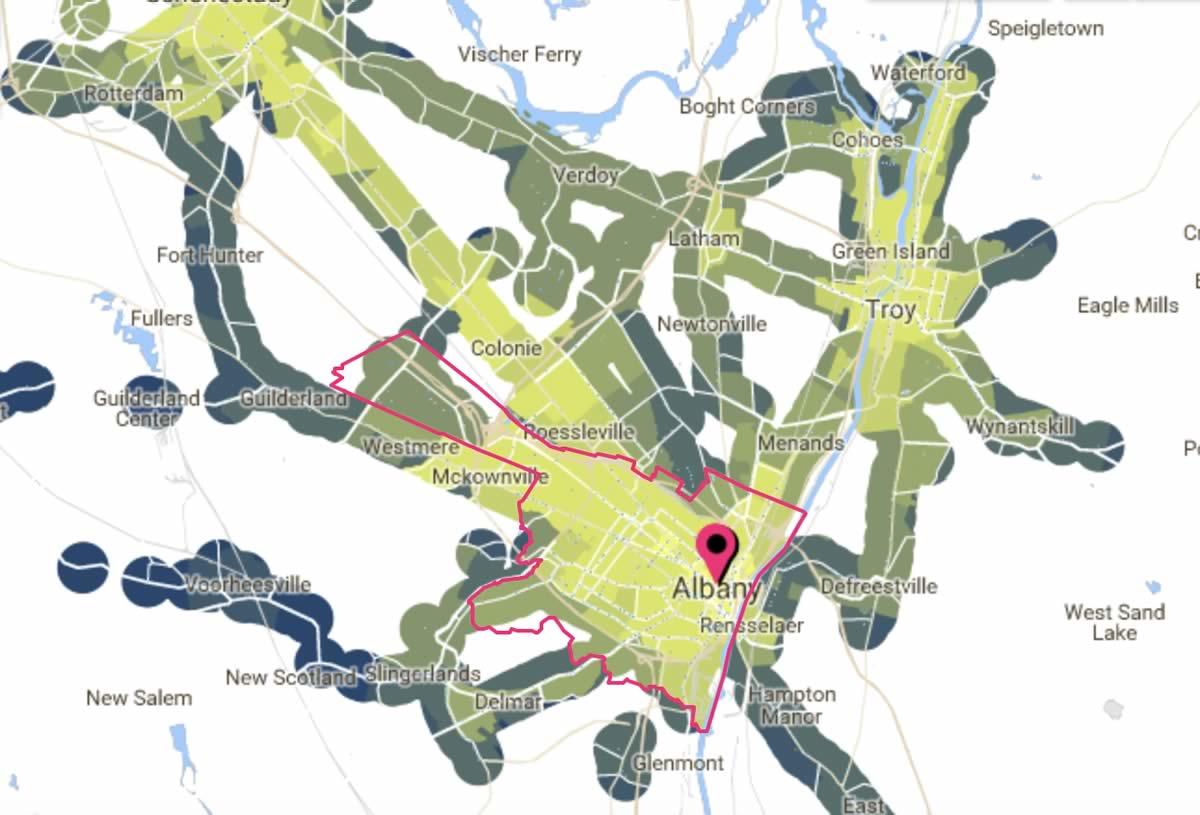
Here's a follow-up of sorts to yesterday's post about the Capital Region's relatively low levels of traffic congestion, commuting, and planning for how to get around in the future.
An org called the Center for Neighborhood Technology has an online app called AllTransit that maps access to transit and jobs for locations.* It also digests all those bits into scores so they can be compared.
Here's the profile for the city of Albany, which scored a 7.8 -- "Very good combination of trips per week and number of jobs accessible enabling many people to take transit to work." (For some comparison, Colonie scores a 4.4 and Bethlehem a 2.5.)
One of the things that's interesting about this tool is the way it sort of creates what we sort of think of as as a topographic map of access-to-transit around the area. There are a handful of really high points -- the hearts of Albany, Schenectady, and Troy primarily -- and things slope downward from there.
*We could have sworn we mentioned this tool before, but couldn't find it while rummaging through the archive. It's probably all the way in the back of the cabinet, unopened, with the expiration date on the jar past.
(Thanks, Jen!)
Earlier:
+ The Capital Region's transit arteries
+ The potential impact of bus rapid transit
+ A brief (alternate) history of the Capital Region's much-admired light rail system
Traffic problems, relatively speaking
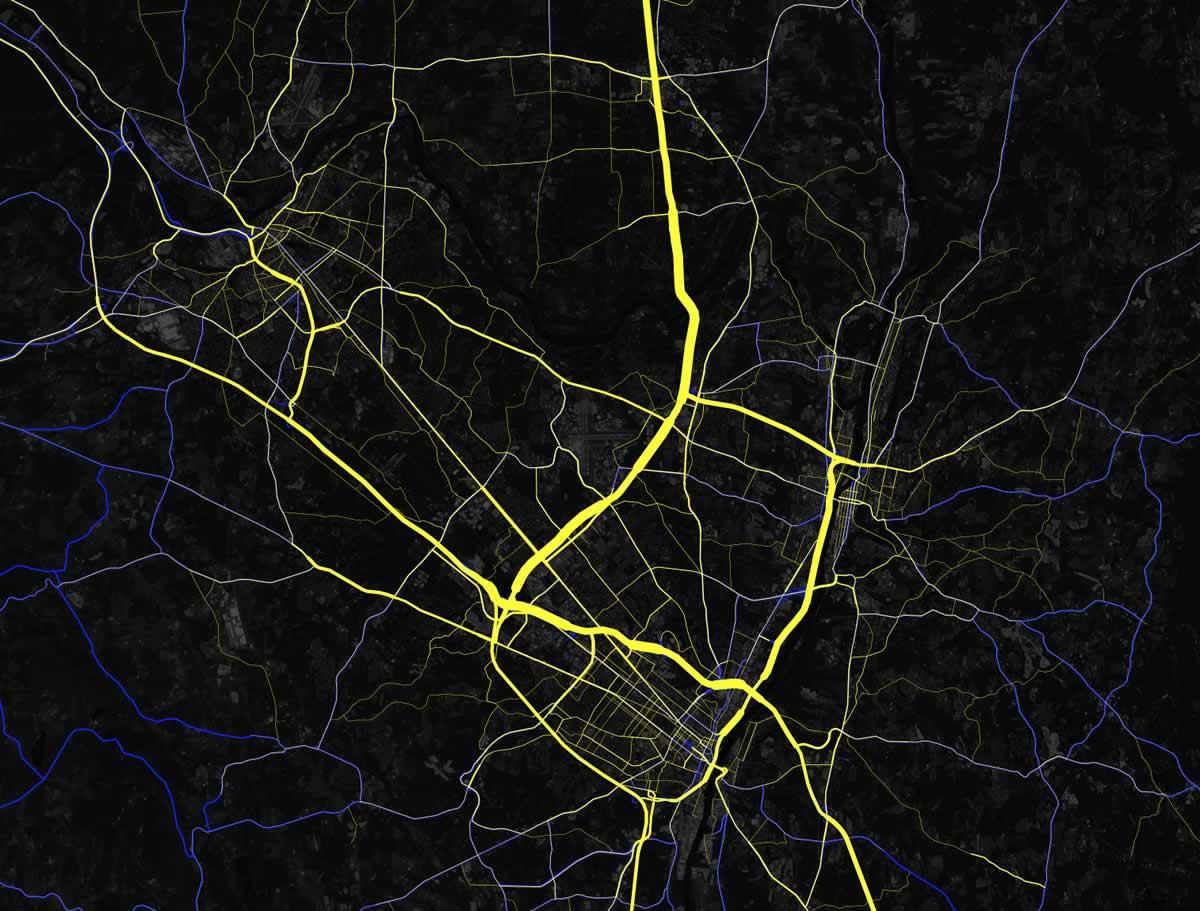
The Capital Region's traffic arteries, a clip from a national map created by Mapbox using data from the federal Highway Performance Monitoring System and OpenStreetMap.
Sometimes it's good to get a wider perspective on the sorts of things we all complain about.
Like traffic. From a national perspective, the Albany area doesn't really have traffic.
Albany ranked #118th in the United States for traffic congestion last year, according to the new global traffic scorecard from the transportation data consultancy INRIX (more about the report). Drivers in this area were estimated to spend just 4 percent of their driving time in congestion, 14 hours across the whole year.
In Los Angeles -- which topped the ranking for US cities and the world -- the total was 102 hours spent in congestion. And in New York City, ranked #2 in the US, the total was 91 hours.
Here are a few more things about that.
Capital Region economic development grants: sewer systems, The Palace, Cohoes Canal Square Park, Capital Roots, and more
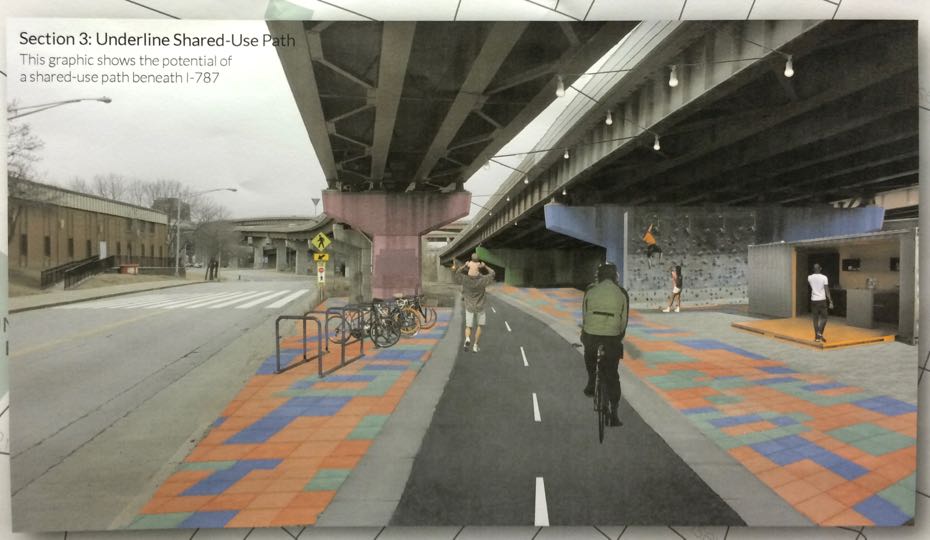
Albany's plan to build a connector between the Mohawk Hudson Bike Hike Trail and the Helderberg-Hudson Rail Trail got funding.
The Capital Region scored $85 million in the state's annual Region Economic Development Council awards/game show porktacular on Wednesday. The region was a "top performer" for the second year in a row, and again landed the second-highest total of grants.
Here are details on the specific projects getting funding in the Capital Region are below, along with a bunch of that caught our eye. There are also region-by-region totals for the awards.
Capital Region rent, relatively speaking
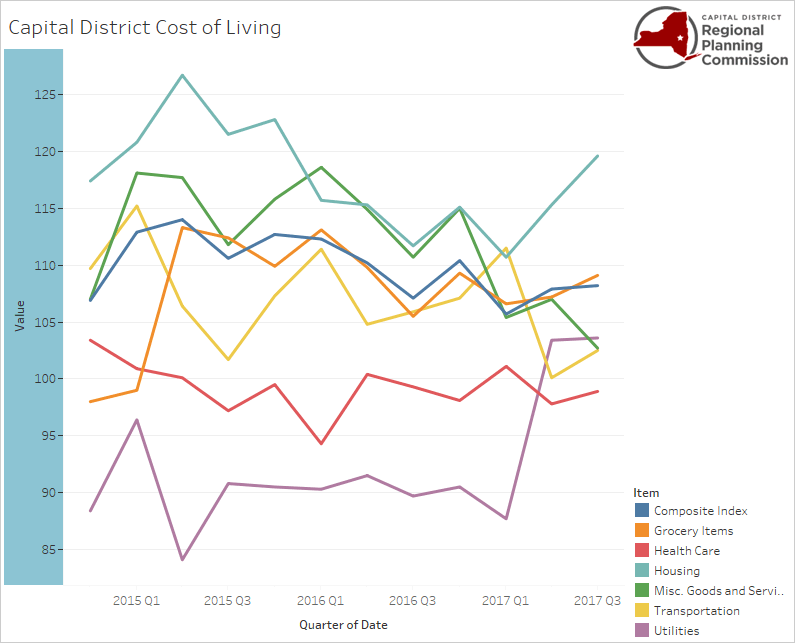
This graph is from the Capital District Regional Planning Commission and the Council for Community and Economic Research. It tracks a Capital Region cost of living measure relative to the national average quarter by quarter. That teal line running along the top is the cost of housing.
Speaking of residential develop and rents and related whatnot...
+ The median gross rent for Albany-Schenectady-Troy metro area was $931 (+/-21) in 2016, according the Census Bureau*. In the city of Albany it was $895 (+/-29). That is, half the rents (plus utilities if not included) were above that mark and half were below.
+ In 2007, the median gross rent for the Albany metro was $779 (+/-18) and for the city of Albany $746 (+/-37). The 2016 rent levels mentioned above are an increase of almost 20 percent in both cases. That increase outpaced general inflation for the United States -- if both had risen at the pace of general inflation, they would have been at $900 and $862.**
15 Albany-area mentions in The Onion, ranked

As noted earlier this week when The Onion savagely roasted the Capital Region's pitch for the Amazon headquarters, mentions of this area often pop up in the satirical outlet.
So here are 15 of those mentions, ranked by burn level.
A snapshot of the Capital Region pitch to Amazon
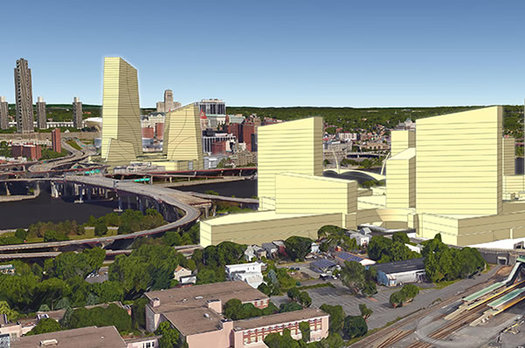
Today is the day that cities and metropolitan areas all around the country are offering themselves up to Lord Bezos as his empire looks to build an off-world colony beyond Amazon Prime in Seattle.
The Capital Region is one of those metros, and the Center for Economic Growth has posted an overview of its pitch. It centers on a a potentially massive new complex spanning the Hudson River at Albany and Rensselaer. A clip:
With Amazon specifying an interest in a downtown or urban location with a layout similar to its Seattle campus, CEG's centerpiece proposal is the Amazon Promenade. This downtown headquarters would straddle the iconic Hudson River, with a capacity for 2 million square feet of office space in the City of Albany's 25-acre site between the Times Union Center and Broadway and an additional capacity for 6 million square feet on 75 acres directly across the Hudson in the City of Rensselaer. The Albany and Rensselaer sites could be connected with a pedestrian bridge across the Hudson, water taxies and/or a gondola.
There are a handful of renderings -- and we've pulled them out for easy gawking. The online pitch also argues the region's case in terms of aspects such as education, housing affordability, natural disaster susceptibility, and crime.
The assimilation of the Capital Region by the Bezos is a low probability event -- this place is competing against pretty much every other relatively large metropolitan area in the US and Canada. That said, here are a few very quick thoughts...
Scanning the Capital Region Economic Development Council's 2017 priority projects
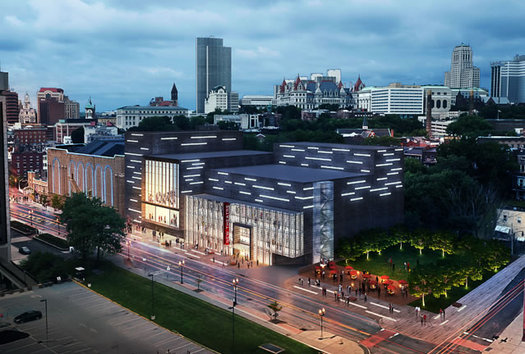
The proposed Palace expansion is back up for state money.
The Capital Region Regional Economic Development Council released its 2017 progress report this week. And one of the things that's immediately notable about these reports is the list of proposed priority projects up for state money in the next round of the Cuomo administration's Regional Economic Development Council initiative.
You know, these are the grants that are announced at an awards-show-like event, usually in December.
The list usually includes some interesting bits, and it also sometimes surfaces notable projects that are in the works.
So, let's have a look at a handful of items that caught our eye. They include mixed-use residential projects, the Schuyler Building renovation, the Capital Roots Grow Center, and -- for a second year -- the proposed Palace Theatre expansion...
Hello, 838
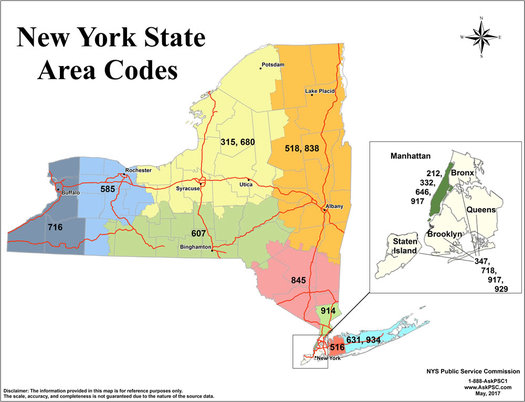
Starting today -- September 19 -- if you get a new phone number/line, it's possible it could be a number with the 838 area code.
As you know, the 518 area code was running of out of telephone numbers. So a new area code is being added to its geographic area as an "overlay" to provide a new supply of numbers. The 518 area code and the new area code, 838, will both exist in the same area. Everyone with a current 518 area code number gets to keep it. And now some new numbers -- and eventually all new numbers -- will be 838.
Aside from the new area code, the big change is that 10-digit dialing is now required for calling numbers within this area code. (That mandatory required started August 19.) That's probably not much of a hassle for many people now because so much dialing is via mobile phones or other digital systems. But if you have an older phone system, it's worth checking that it's adding the 518 to already existing numbers.
Also: Whenever you give out phone number here now, be sure include the area code.
For old-school dialing, or whatever
Not related really in anyway, but somehow seemed fitting to include here: The state's eBay store is currently selling a trio of wooden phone booths -- with pay phone -- for pickup in Schenectady.
Sprawl without growth
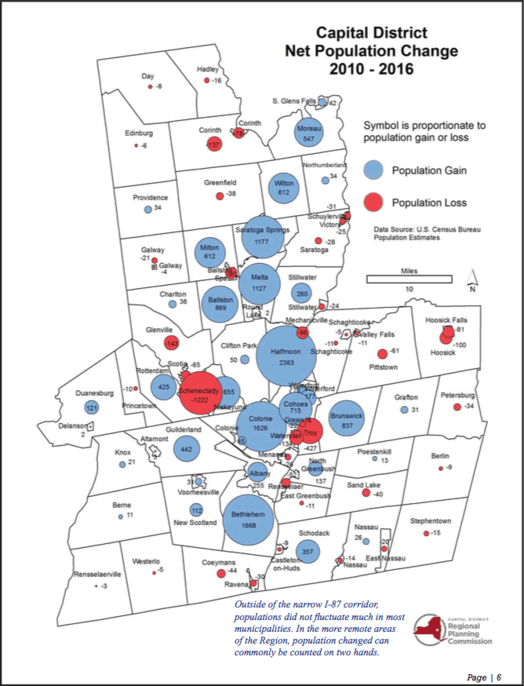
Net population change by city and town 2010-2016, according to Census population estimates. / map: CDRPC Capital Region Data
During conversations here at AOA and in other venues about the region's cities, very often the focus settles on a question that's more or less: Why can't we have (thing) in Albany/Troy/Schenectady/somewhere?
And often (thing) is something along the lines of streetcars, or densely packed blocks of retail, or downtown supermarkets -- the sorts of things that usually require relatively high population density.
So, with that in mind, this bit from the latest Capital Region Data from the Capital District Regional Planning Council caught our eye. It's about population and development patterns across the area's municipalities (emphasis added):
From 1995 to 2015, development of single family homes across the Region totaled 35,111 units, occupying 55,928 acres. Development in this 20-year period expanded the total acreage consumed by single-family housing in the Region by 38% from levels in 1994. In that same period, the population of the Region grew by roughly 7%. Quite simply, the Region consumed land at almost five and half times the rate of population growth. ... To add even more context on a micro level, from 1995 to 2015, the Region's population increased by roughly 55,000. This means that the Region developed roughly an acre of land for each new person.
As population growth continues to slow, and housing construction begins to increase, the disconnect could between the two could become larger. While new housing construction slowed significantly during the Great Recession, it has recovered to a greater degree than population growth. If these trends continue, they could amplify our Region's current pattern of sprawl without growth.
National honor for CDTA
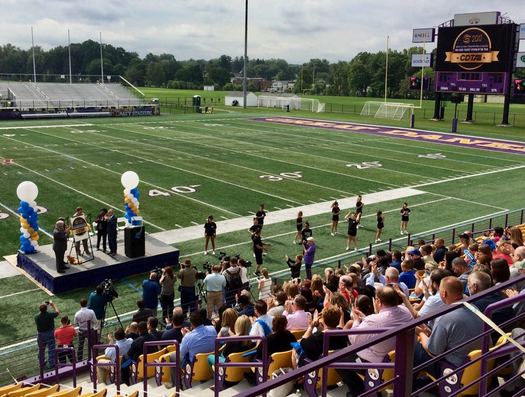
CDTA has been named the best mid-sized public transit system in North America by the American Transportation Public Transportation Association, a transit industry org. The local transit org announced the honor at UAlbany's Casey Stadium Tuesday.
The award is based on the span between 2014 and 2016. From APTA:
In the past three years, CDTA's ridership has been at record or near-record levels because of innovative projects like upstate New York's first [bus rapid transit] service and a successful Universal Access rider program. Additionally, bus frequencies have been increased during peak travel times to 10-12 minutes on most trunk services, a frequency that is unusual for a mid-size bus system.
CDTA joins the Toronto Transit Commission (large system) and Knoxville Area Transit (small system) in the honor.
#518Day 2017
Nipper says: Happy #518Day!
— Michael Janairo (@mjanairo) May 18, 2017
Take a moment on May 18, 5/18, to share what you like about the arts in the 518 with the hashtag #518day pic.twitter.com/Y8KlfCiPuL
Today, Thursday, is May 18. That's 5/18. That's 518. Hey, that sounds familiar...
So it's 518 Day. And local writer Michael Janairo is once again rallying people to use the #518Day tag on social media to share/highlight what they like or appreciate about local arts and culture. The tag on Twitter has already collected a bunch of tweets today.
Michael's also put together a Storify stream to collect the mentions across Twitter, Instagram, and Facebook.
Also, important future consideration:
Of note, this May 18 will be the last May 18 in which the 518 region is only the 518 region. Starting this fall, new phone numbers in the 17-county 518 region will be given an 838 area code. That means the region will become the 518 and 838 region. What that means for May 18, 2018, isn't certain yet; however, considering there isn't an August 38, it is likely May 18 will remain #518Day.
"The 38th of August" does sound like a good title for something, though.
Life expectancy in New York State by county

New York counties by estimated life expectancy. Green is roughly the state average -- yellow below, blue above. (There are two clickable maps after the jump.)
Life expectancy at birth was a little more than 80.36 years in New York State in 2014, according to a new study out this week.
That was good for 6th best in the nation. And it's up 73.19 years in 1980.
Those estimates are from a study published in JAMA Internal Medicine this week looking at how life expectancy varies across counties in United States. And as the researchers reported, there was wide variation -- some 20 years of difference between the high and low ends.
Here's a good interactive map of the numbers. And here are a few articles in the popular press about the overall study -- at FiveThirtyEight and The Atlantic.
New York counties didn't exhibit such a wide range, but there were some differences.
Where the new homes have been built
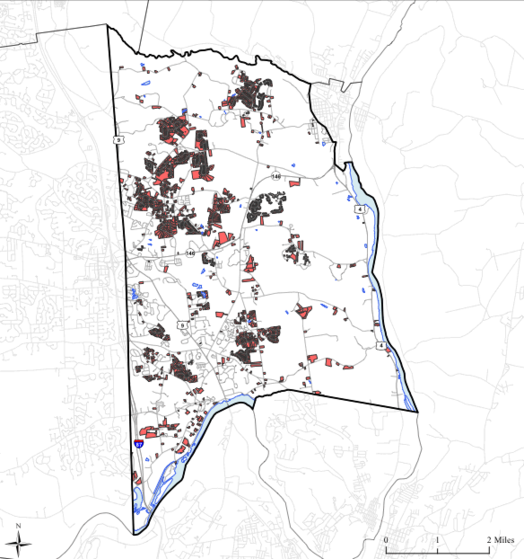
Parcels in the town of Halfmoon on which new single-family homes were built between 1995 and 2015. / map: Capital District Transportation Committee and the Capital District Regional Planning Commission
The Capital Region county that's the most different from the other three core counties? That's probably Saratoga County. And here's (another) bit toward that case...
Of all the single-family homes built in the Capital Region core between 1995 and 2015, almost half were in Saratoga County.
That's from the Capital District Transportation Committee and the Capital District Regional Planning Commission, which have posted a series of new "community growth profiles" for each of the core's 56 cities and towns:
Between 1995 and 2015, more than 35,111 single family homes were built in the four county Capital District Region on lots totaling 55,928 acres. The majority of single family home growth occurred in Saratoga County with 49% followed by 25% in Albany, 15% in Rensselaer, and 10% in Schenectady. As of 2015, there are 209,730 single family homes and 378,947 housing units overall in the region. And, approximately 214 miles of new roads were built between 2005 and 2015, of which 21% included sidewalks.
The town of Halfmoon is a prime example of the population and housing growth in Saratoga County. Between 1990 and 2015, the town went from 6,125 housing units to 11,060 units, according to its profile.
A few bits about the (probable) upcoming arrival of ride hailing apps such as Uber and Lyft
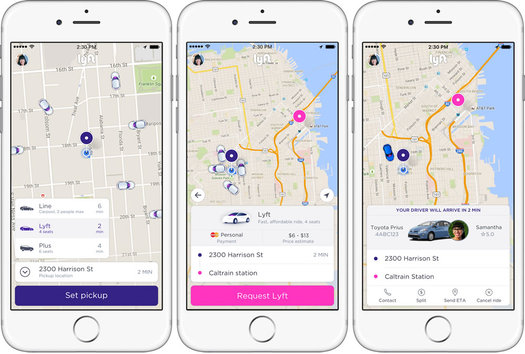
Screenshots from the Lyft app. / images: Lyft
As you've no doubt heard, the big blob of legislation that wrapped up the new state budget included a provision opening the way for ride hailing companies such as Uber and Lyft to start operating across New York State.
The services will be allowed to start operating 90 days after the governor signs the budget legislation. So, it's probably going to be sometime this July. And then whether the services are offered in a specific market will be in the hands of the individual companies.
The legislation sets out rules for a handful of issues that had been holding up the approval, including insurance requirements and local regulation. Here are a few bits and other stuff...
Saratoga County ranked as the "healthiest" county in New York State

The state's counties coded by how the ranked for health outcomes in the rankings. / map: Robert Wood Johnson Foundation
Saratoga County is the "healthiest" county in the New York State, according to rankings out this week from the Robert Wood Johnson Foundation. Specifically, Saratoga ranked #1 in health outcomes -- "how long people live and how healthy people feel while alive."
The rankings also look at factors that feed into health, and Saratoga ranked #3 overall for those.
Here's how the Capital Region core counties stacked up compared to to Saratoga and each other.
WHAT? (airplane flies overhead)
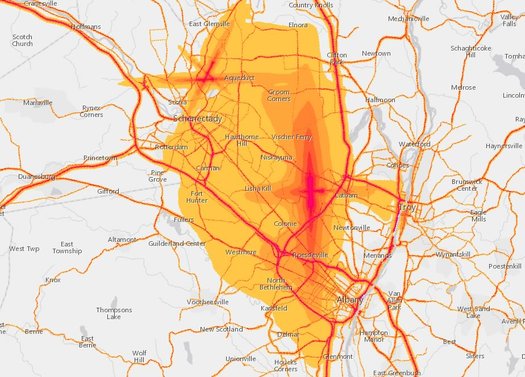
That image above is clipped from
The map colors depict estimated 24-hour sound level averages. The light yellow is about the noise level of a humming refrigerator. The magenta colors are something more like a vacuum cleaner.
You can probably guess what that cross-shaped, magenta pattern is in the middle: Albany International Airport. And if anything, for us, looking at the map both locally and across the nation highlighted the wide-ranging noise effects of airports. Those "smears" of noise along the approach and take-off paths for ALB really stick out. (And having lived inside one of those zones, yep, you definitely hear the planes as they land, especially in the summer with the windows open.)
[via NPR]
map clip: US Bureau of Transportation Statistics
The Capital Region is growing very slowly -- which is better than many other parts of the state
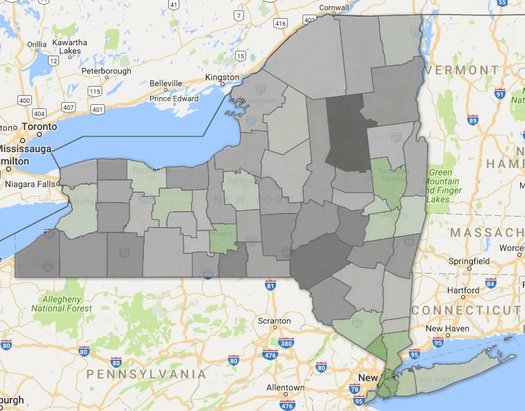
The deeper the green, the higher population gains by percentage. The deeper the gray, the higher the losses. (Here's a large, clickable version of the map.)
The population of the Albany metro area was up slightly in 2016 compared to the year before, according to new Census Bureau estimates out this week. The Census figures the Capital Region had 881,839 -- up about 1,000 from the year before.
But compared to other large metros, this area's population has been falling behind. In 2010, the Albany-Schenectady-Troy metro was the 60th most populous among the nation's 382 metros. In 2015 it was 61st. And in 2016 it was 63rd.
Between 2010 and 2016, the Albany-Schenectady-Troy metro area's population is up 1.28 percent, according those estimates. During that same span, New York State population is up almost 1.8 percent and the national population is up 4.65 percent.
Here are a few more bits from the new estimates for metros and counties -- declining populations, immigrants, and Donald Trump.
A step toward the new 838 area code
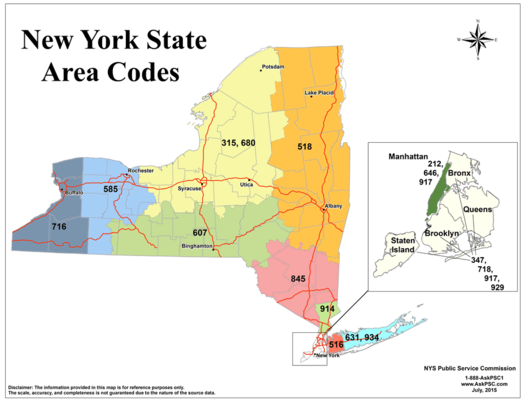
The new area code for this part of New York State is set to start in September. And the first (small) changes for telephone users connected to the new 838 area code begin later this month. From a state Public Service Commission press release blurbage:
As an intermediate step in the implementation of the new area code, a permissive dialing phase begins March 18, 2017, which will allow customers to dial either 7-digits or 10-digits (area code plus 7-digit local telephone number) on calls within the 518 area code; calls to other area codes must still be dialed as 1+ ten digits. The permissive dialing period will end on August 19, 2017, at which time callers will be required to dial 10-digits (area code plus 7-digit local telephone number).
Beginning September 19, 2017, customers in the 518 area code region requesting new service, an additional line, or a move in the location of their service, may be assigned a number in the new 838 area code.
In other words, this is all to get people accustomed to using 10-digit numbers ahead of when they'll actually have to use them.
Oh, and the other way looking at that September date is that it's the deadline for getting a new phone number with a 518 area code -- if, for some reason, that's important to you.
838? What is going on?
Here's the short backstory to all this...
How we all ended up talking about a gondola between downtown Albany and the train station
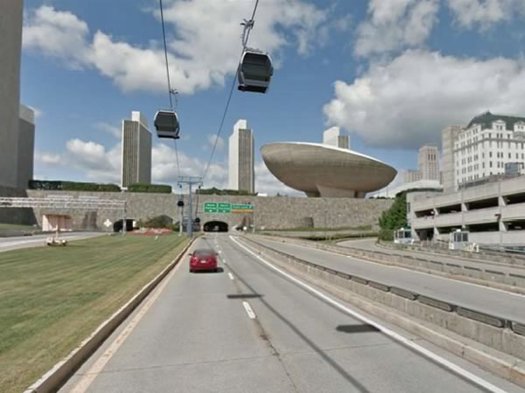
Last fall the McLaren Engineering Group floated the idea of building a gondola lift to ferry people between downtown Albany and the train station over in Rensselaer. The initial phase of the project would have a price tag $16.6 million-$19.5 million. (That image is from the feasibility study.)
The concept of building a gondola or aerial tramway across the Hudson River from the Rensselaer Amtrak station to downtown Albany and the Empire State Plaza has generated a considerable amount of debate in the Capital Region over the last several months.
Readers of my previous commentaries in this space know that I'm suspicious of the need to spend tens of millions on capital-intensive infrastructure projects in the region, preferring to spread the money around to more fundamental improvements such as increased local bus service and CDTA's planned Bus Rapid Transit lines.
The gondola concept, though, presents an opportunity to consider a more basic question: Just why do quirky, perhaps absurd ideas like the gondola keep popping up in regional dialogue about transportation infrastructure?
Capital Region high school graduation rates 2016

The state Department of Education recently released its annual collection of data about high school graduation rates around the state. The four-year statewide graduation rate for 2016 (that is, the 2012 cohort of students) was 79.4 -- up almost 1.5 percentage points from the year before.
As we do every year, we've pulled out the stats from Capital Region school districts.
Sorted stats (including notes and qualifications) after the jump.
Yep, winter's been odd in recent years

That this sort of sight has been more familiar in recent winters than what we're seeing Thursday is odd.
It's fair to say that winter hasn't been itself for a while, going almost two full seasons now.
Last winter was extraordinarily warm and un-snowy. And this winter has also been... underwhelming. As of February 8, this winter is almost 18 inches behind the normal pace for snow (though it should pick up some of that during Thursday's storm). And the January we just finished had an average temperature 8 degrees warmer than normal.
Winter, we're starting to worry about you, old man.
It's felt like winter has been acting strangely for years now. But memory can be a blurry thing, a picture where the unusual events stay sharp and the ordinary fades into the background.
So we thought it'd be interesting to look at more than a century's worth of winters in Albany to get a sense of whether things really have been weird lately.
Albany metro ranked 30th best place to live

The new US News "Best Places" rankings are out and the Albany metro is pegged as the 30th best place live among the nation's 100 largest metros. That's up from #36 last year.
The ranking folds together a bunch of different medians, rates, and other statistical whatnot to create the list -- stuff like employment market numbers, cost of living, crime rates, survey responses, and net migration. Here's the US News explainer on how it bakes the cake. A comprehensive measure of "best to place to live" for everyone it probably is not.
The Albany metro fares well compared to other large metros for pedestrian deaths -- but there's room to improve

A clip from the report's map of pedestrian deaths in this area between 2005 and 2014.
The Albany metro is one of the nation's safer large metros in terms of pedestrian deaths, according to analysis out this month by Smart Growth America. Each year the advocacy org releases a report called "Dangerous By Design" that tracks and compares pedestrian deaths across the nation's 100 (or so) largest metros.
The Albany metro ranks #94 out of 104 metros in the new report's Pedestrian Danger Index -- that is, it was the 11th safest for pedestrian deaths. The index attempts to adjust the number of total pedestrian deaths per capita in area for estimates of the number of people who are walking to work. In terms of raw number of pedestrian deaths per capita, the Albany area fared a bit worse -- 23rd out of 104. (The data are from 2005-2014.)
The rankings for other New York metro areas: Syracuse (#99), New York-Newark-Jersey City (#95), Rochester (#91), Buffalo-Cheektowaga-Niagara Falls (#72). The metros pegged as most dangerous were mostly in Florida and other Sun Belt areas.
The report also ranks states -- New York ranked 38th out of 51 (including DC) for highest Pedestrian Danger Index.
From this year's report, which highlights that older people and people of color are disproportionately killed more often in crashes while walking:
CDTA's new fare smart cards are now available
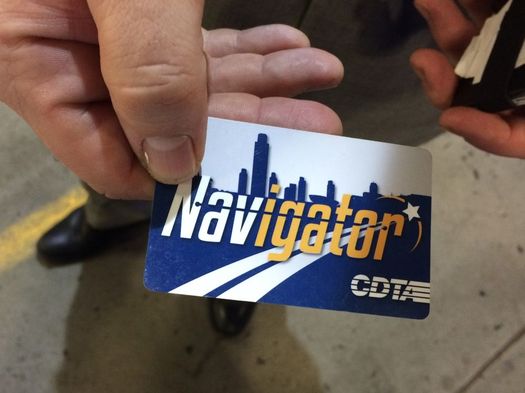
This Navigator card belongs to Albany Public Library executive director Scott Jarzombek. He was at today's public roll out of the new system because APL employees -- including himself -- were using the cards during a pilot test over the past year. (APL has a universal access agreement with CDTA for employees to ride the bus.)
CDTA opened its new Navigator fare card to the general public Thursday. The new system includes a bunch of potential benefits for riders as well as the transit org -- and it opens some interesting possibilities for transportation in the Capital Region that extend beyond the bus (hello, taxis).
"It makes everything quicker, everything more convenient," CDTA CEO Carm Basile said Thursday. "But most importantly, the customer manages their own account. They do what they want to do when they want to do it and how they want do it."
Here's a quick overview, along with a few bits about the upcoming bike share and a common taxi system for the Capital Region.
Capital Region economic development grants: Tivoli Preserve, Albany Skyway, Nipper, Troy movie theater, craft beverages, and more
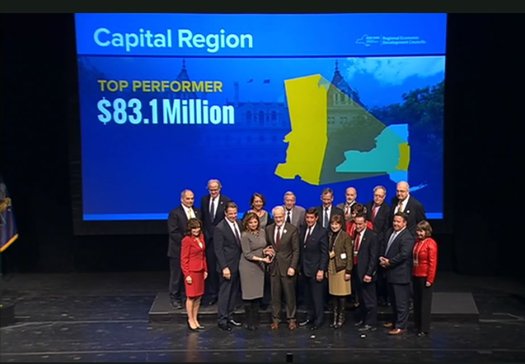
Originally published Thursday at 2:20 pm. Updated Thursday at 4:05 pm.
The Capital Region got $83.1 million in the state's annual Regional Economic Development Council awards/game show on Thursday. That total made it a "top performer" -- and it was the second-highest total of any region.
The details on the specific projects getting funding in the Capital Region are below. There are also region-by-region totals for the awards.
The announcement included many of the same elements as previous years, including specious claims about the economic vitality of upstate and that weird "no, you're the best" dynamic between Maria Bartiromo and Andrew Cuomo. (Sadly, the state has still not installed a giant wheel on stage for representatives of each regional economic development council to spin and reveal their total.)
One bit of other news that came out of the presentation: Andrew Cuomo reiterated his support for allowing services such as Uber and Lyft to operate upstate.
His statement -- "I guess I support Uber upstate." -- followed a deadpan joke by Empire State Development head Howard Zemsky about requesting an Uber to take him to The Egg from the ESP office in Albany -- the car showed up 2 hours and 45 minutes later and took him to Price Chopper.
What if Albany is upstate, but not "Upstate"?
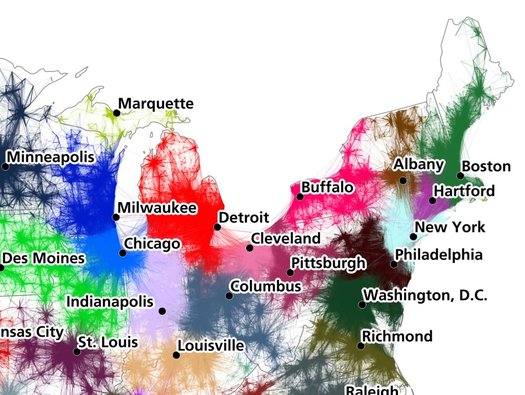
What are we really talking about when we use the term "Capital Region"? Is it a geographic place? A population of people? A set of economic connections? A culture?
That's one of the questions we were thinking about while looking over a recent attempt by researchers to define megaregions and lay out a "functional economic geography of the United States." The work -- by Garrett Dash Nelson of Dartmouth and Alasdair Rae of the University of Sheffield (UK) -- takes a ton of Census data about commuting patterns and processes it into a series of maps. It's published in PLOS One.
So, let's have a look at those maps for this area, along with a few thoughts about the results.
The potential sale of Price Chopper would be a big deal (and not just because of the price)
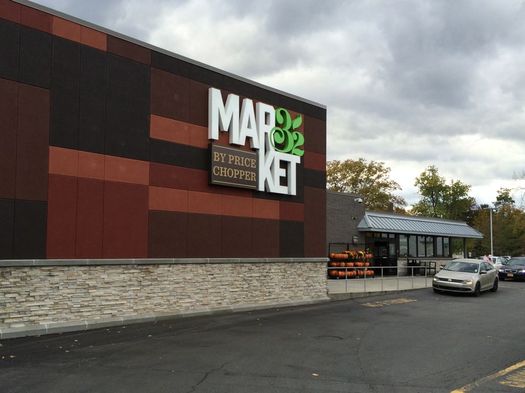
The Madison Ave location in Albany, one of the company's small-format stores.
One of the big local news stories this week is the Reuters report that the parent company of Price Chopper is in "advanced talks" for a billion-dollar sale of the supermarket chain to Albertson's, a huge chain of chains headquartered out west.
The Reuters story is based on unnamed sources, and the central players are no-commenting it. (Neil Golub was a little more pointed in not addressing the story.) But the idea that the Golub Corp has been exploring some sort of sale or deal for Price Chopper/Market32 has popped up recently, most notably in a report in the trade journal Supermarket News this past August. And it fits with the overarching trend of consolidation withing the supermarket industry.
So, if a Price Chopper sale is in the works -- and that's still if -- it would be one of the biggest Capital Region news stories in recent years. Here are a few reasons why...
Clickable county by county results for 2016 presidential election in New York State

There's a clickable map after the jump.
Updated
In a presidential election marked by polling surprises, the voting in New York State pretty much shook out as expected.
Here are county-by-county clickable maps of the results, along with a few notes about some geographic voting patterns around the state...
A snapshot of New York State's immigrants

We snapped this pic in the front lobby of Albany High School during a tour last fall.
About 22 percent of the residents of New York State -- almost 4.4 million people -- are immigrants. The second-highest total of immigrants for a state in the United States, behind only California.
That's one of the bits from a report out this week from the state comptroller's office about immigrants in New York State.
There are a bunch of interesting bits in there, and here are a few of them...
Where New York's crime guns come from

This map is clipped from the AG office's interactive report -- it shows which states are the origin for the "likely-trafficked" guns recovered in the Capital Region.
Of the almost 53,000 guns recovered by law enforcement agencies in New York State between 2010 and 2015, 74 percent of those guns originated out of state. And of the 1,872 guns recovered in the Capital Region over that period, 67 percent were from out of state.
Those figures are a from a new report by the New York State Attorney's General Office -- "Target on Trafficking" -- that use federal gun trace data to argue for stricter gun regulations on the federal level and in other states.
The report tags a handful of states with more lax regulations for being the source of many of the crime guns, handguns in particular, that end up in New York.
Creative Every Day book launch

Earlier this year we mentioned Creative Every Day, a series of illustrated mini-biographies of local people created by artist Ira Marcks as a project aimed at inspiring kids to explore careers in the creative economy.
Well, the book of those tiny stories is now finished and it's great -- interesting, beautiful, and fun! You can check out a pdf of the book online at the first link above. We've also clipped a few pages after the jump in case you'd like to take a quick look. (But, really, go check out the whole thing.)
The book's creation was sponsored by the Work Force Development Institute. And Marcks says the institute and Proctors will be distributing the book for free to schools around the region as part of program to help kids learn about how artistic skills can be applied to a wide range of jobs.
There's a party to celebrate the release of Creative Every Day Thursday, October 27 at Troy Kitchen from 6-9 pm. There will be music from Jecco Trio, Sudharsana Srinivasan, Taina Asili, and Jamel Mosely. And everyone who attends will get a free copy of the book.
Scanning the Capital Region Econ. Development Council's new batch of priority projects

A rendering for the planned mixed-use conversion of the Nipper Building in Albany's Warehouse District.
The Capital Region Economic Development Council recently released it latest batch of proposed priority projects. These are the projects the council will be suggesting get state funding in the next round of the Cuomo administration's Regional Economic Development Council initiative. Those awards are usually announced in December.
Last time out in the economic development competition/game show the Capital Region scored $98 million in grants. (It missed out on one of the three $500 million grants.)
These reports usually include some interesting bits and sometimes surface notable projects that are in the works.
So, let's have a look at a handful of proposed projects that caught our eye. They include craft beverage projects, a movie theater project for Troy, and the proposed Palace Theatre expansion...
A few bits about Derailed, the film that's been shooting in Troy
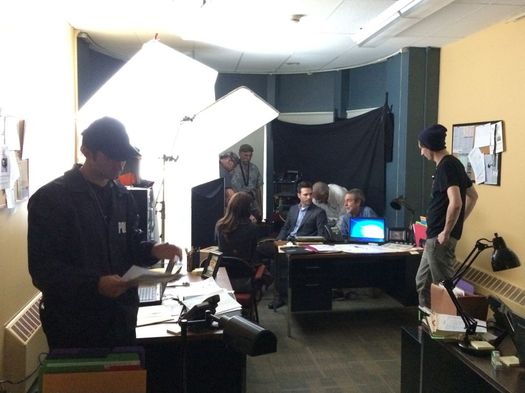
Between takes during the shoot of Derailed. A room in the Sage's Gurley Hall was the playing the role of a police station.
You might have seen -- or heard -- that a film was shooting in downtown Troy this week.
The production for Derailed has been shooting in and around the Sage Troy campus this week, and was set to film in the Monument Square area Thursday evening. It's also planning to shoot in locations in/near Albany and Saratoga Springs.
Here are a few bits about the movie, and a quick chat about what's been drawing film productions to this area...
Movies that filmed in -- or were set in -- the Capital Region

The Place Beyond The Pines -- and Ryan Gosling -- filmed in and around Schenectady.
In a comment earlier this week, s asked about list of movies that have been filmed in -- or set in -- the Capital Region.
This topic has come up a few times before, so we figured we'd pull together a list (because Friday afternoon). It's not comprehensive, and we're hoping you'll have suggestions to add. We'll continue adding to the list.
Let's have a look.
Say hello to our new area code
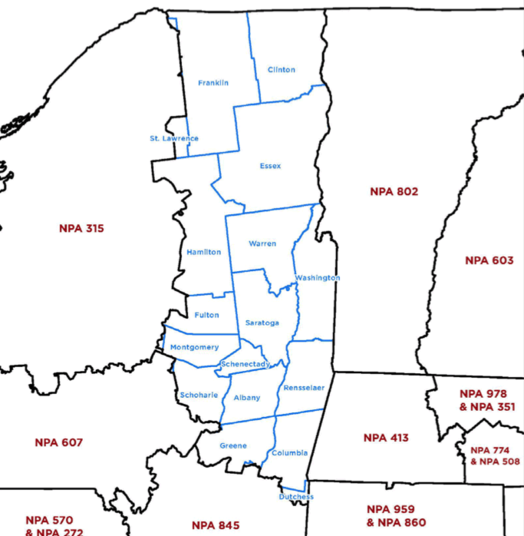
The current 518 geographic area.
The new area code for this area will be: 838.
The state Public Service Commission announced the designation Tuesday, and said the new area code will be in effect by the third quarter of 2017.
The 838 area code will be an "overlay" to the 518 area code. That is, they'll share the same geographic area. At some point in the near future -- probably sometime next year -- new phone numbers distributed in this area will just get 838 instead of 518. Then whenever you (or your phone or phone system) dials a local phone number, you'll have to include the area code with the seven-digit number. (Here's some background on how this situation came about.)
Here's a bit more about how this is all planned to shake out...
We're getting another area code

The 518. / image: NYS Department of Public Service
The state Public Service Commission has approved a plan to add a second area code to the region currently covered by the 518 area code. The prompt for the addition: 518 is projected to run out of phone number sometime next year.
There were two potential plans on table for alleviating the number crunch -- adding the new code in an "overlay" to the existing 518 region, or splitting the 518 area into two parts with one side keeping 518 and the other getting a new area code.
The pick of the overlay option isn't a surprise. When officials presented the options earlier this summer, it very much sounded like things were headed in that direction. From a PSC press release announcing the pick Wednesday:
The Commission examined both "geographic split" and "overlay" options. Based upon its review, the Commission determined that an overlay is the preferred option because it is easier to implement from a technical standpoint and less expensive from a customer standpoint, especially for business customers who could be forced to change signage and branding in the event of a geographic split. An overlay occurs when a new area code is superimposed over an existing calling area, and, by definition, it results in more than one area code serving the same calling area or region. Under an overlay plan, existing telephone numbers remain unchanged, and all new telephone numbers would be assigned the new area code.
So, bottom line, what does this mean for actually using a phone here? Not that much. It's just that starting sometime in the next year or year and a half, every time you dial a local number you'll have to dial 10 digits instead of 7. (A change most people probably won't even notice for many calls because the dialing is done by a mobile phone or some other system.) And anyone getting a new number will get the new (not yet announced) area code.
Even so, a moment to reflect on the end of 518, one of the nation's original area codes, as an only-code... Now, move over, you're getting a sibling.
Comparing the latest batch of Capital Region property tax rates
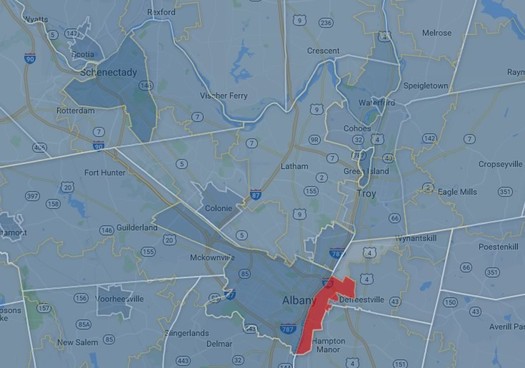
A clip from a map of the Capital Region's various overlapping tax areas -- counties, cities, towns, villages, school district. There's a larger, zoomable version after the jump. (And Rensselaer's marked in red because of missing data.)
The cities of Schenectady and Albany have some of the highest property tax rates in the Capital Region.
Saratoga Springs, Bethlehem, and Niskayuna have the highest estimated monthly payments for a median home.
Those bits are from our latest scan of Capital Region property taxes -- the numbers for the year 2015 are now out.
So, let's have a look.
One thing that sticks out about prices here
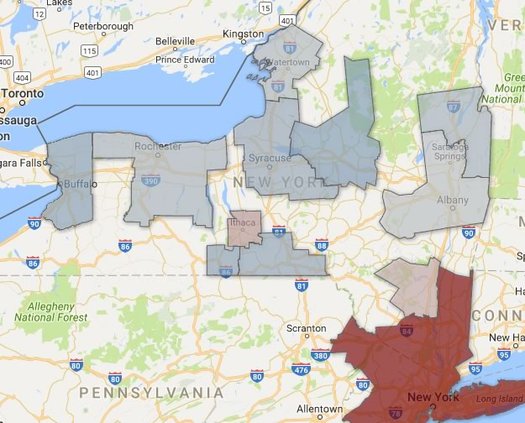
You might have seen that map floating around online recently about "the real value of $100 in each state" -- and New York State had one of the lowest "real" values of any state.
That map was based on figures published by the federal Bureau of Economic Analysis. And one of those figures is something called the regional price parities (RPPs) -- an attempt to measure how much goods and services cost in an area compared to the rest of the country.
You can probably now guess why the state level number for New York is kind of misleading -- if you're lumping in numbers for New York City with numbers for, say, Utica, it's going to be skewed. And to the credit of the think tank that made that state map -- the Tax Foundation -- it followed up this week with a similar map based on metro areas.
Anyway, this is just a long setup for looking at RPPs for metro areas around New York State. There's a static map above for the RPPs for all items across the state's metro areas -- and a clickable map after the jump. And as you can see, most parts of upstate have prices that are about average for the nation -- or lower.
Which is probably what you might expect -- except for one category...
Local areas of interest (so say Google Maps)

The peach or melon-colored areas are Google's algorithmically-designated "areas of interest" for downtown Albany. (Also: That's either a typo in the place label for the ESP, or someone's having some fun...)
Google recently rolled out a new version of Google Maps and one of the features is an "areas of interest" function that automatically highlights areas that Google thinks would be, well, generally interesting to people. From the official Google Maps blog:
The cleaner canvas also lets us show local information in entirely new ways. As you explore the new map, you'll notice areas shaded in orange representing "areas of interest"--places where there's a lot of activities and things to do. To find an "area of interest" just open Google Maps and look around you. When you've found an orange-shaded area, zoom in to see more details about each venue and tap one for more info. Whether you're looking for a hotel in a hot spot or just trying to determine which way to go after exiting the subway in a new place, "areas of interest" will help you find what you're looking for with just a couple swipes and a zoom.
We determine "areas of interest" with an algorithmic process that allows us to highlight the areas with the highest concentration of restaurants, bars and shops. In high-density areas like NYC, we use a human touch to make sure we're showing the most active areas.
Over at City Lab, Laura Bliss takes a skeptical look at the new feature and wonders whether it might be overlooking areas that are low-income yet otherwise vibrant corridors. (And we'd add: Even though Google's using "an algorithmic process" for this feature, skepticism is still healthy -- just because something is algorithmic doesn't mean it can't be biased or incomplete. (Critiquing algorithms will be a big, recurring issue in the future.)
So, we were curious what this new maps feature "said" about the Capital Region, so we had a look around the virtual area. And two things struck us:
1. It appears to do a relatively OK job of identifying some of the small, neighborhood commercial hot spots, like the area right around the Schuyler Bakery in Watervliet. (There are some exceptions, and you'll no doubt spot some, too.)
2. If anything, the way the algorithm treats this region appears to be a bit slanted toward denser, urban areas. It actually seems to overlook a lot of stuff in suburban areas, even high-traffic spots like Latham.
Maybe in the future people will be lobbying Google to be considered "of interest." (Though, really, that's not much different from the current state of things.)
Anyway, we screengrabbed a handful of spots from around the Capital Region for easy comparison of the Google Maps-designated areas of interest.
Albany area mobile service is toward the back of the pack
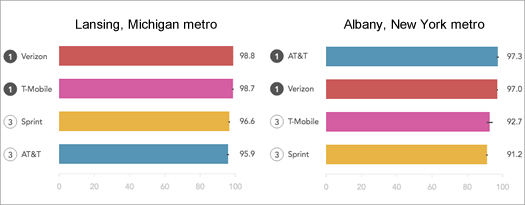
We clipped the RootMetrics overall performance graphs for Lansing (#1) and Albany (#112) and put them side by side.
Maybe it doesn't matter as much if you're toward the back of the pack when the whole group is moving faster.
We were thinking about that while looking through the latest RootMetrics report about mobile service (data and voice) both here in the Albany area and across the nation. Because two things jumped out:
+ The Albany area ranked 112 out of 125 metros for overall mobile network performance. And the Hudson Valley ranked last.
+ But if you compare the individual service provider scores for Albany with that of Lansing, Michigan -- the #1 overall metro -- the difference isn't really that big. (Sprint and T-Mobile service were indicated to be worse here -- and Sprint's data speeds were way slower in Albany.)
What's the future of the 518?

You know, the actual area code.
The 518 area code has had a good run. It was one of the original area codes, and it's made it almost 70 years without being broken up or having to share its expansive geographic area with other digits.
But finally, after all those years, it's running out of numbers. The current projection is that its supply of phone numbers will be exhausted by early 2019.
So what now? Here are the two options...
The Capital Region's largest private employers*
* According to the state's RFP for the Harriman campus land sale
Tucked in that request for proposals for the sale of part of the Harriman State Office Campus in Albany was an interesting list: The largest private-sector employers "within commuting distance" of the site.
We've seen similar lists before. The state Department of Labor publishes lists for the state and individual regions (last update March 2014). But that list doesn't include job counts (the labor department cites confidentiality) -- and the one in the RFP does.
So, can you guess the largest private-sector employers in this area? We'll give you a few hints: healthcare and supermarkets...
What's new? Apartments.
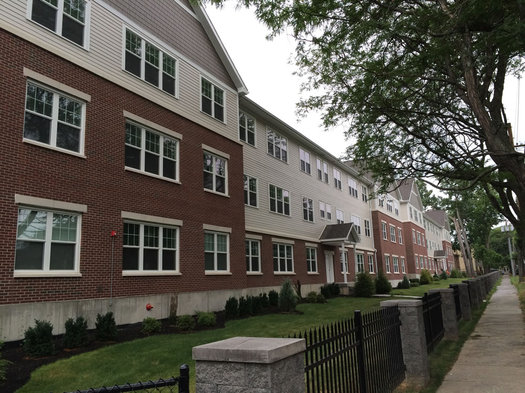
The Elefteria on South Allen Street in Albany, one of the recent apartment projects in the Capital Region.
It seems like every month or so there's an announcement of some new apartment project around the Capital Region. And, as it turns out, the numbers are pointing toward a recent shift in what sort of housing gets built around here.
Last year there were permits issued for 3,601 new housing units in the Capital Region's core counties -- and 2,434 of those units (68 percent) were for homes in multi-unit buildings. And as the latest issue of the Capital Region Planning Commission's Capital Region Data points out, it is the first time in three decades the number of multi-unit homes has so drastically outnumbered single-family homes.
Here's a quick look at some of the numbers...
On trying to fill the space left by Metroland
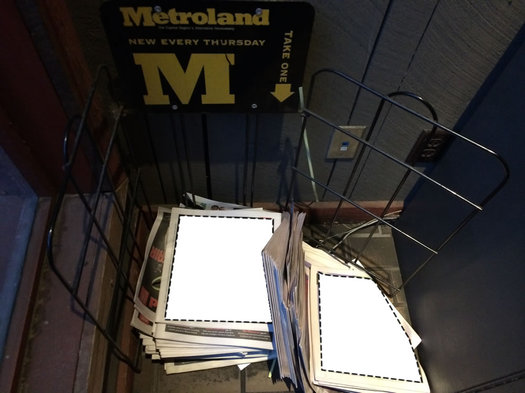
It's been about six months since Metroland stopped publishing, leaving a hole in the local media scene. And this week came official public word of a new effort intended to fill that left-behind niche.
The Daily Gazette, Proctors, and Overit announced Tuesday that they've joined together to back a new weekly publication called The Alt. From a Proctors press release:
This collaboration between for-profit and not-for-profit groups reflects the best practices of the creative economy and will be a well-curated, thought-provoking and constantly updated portal to goings-on in the eight county Capital Region; enticing new visitors and speaking dynamically to young locals and travelers alike with a vibrant, irreverent and tech-savvy flavor.
An article in the Daily Gazette includes a bunch of other details. They're expecting to launch this fall.
As you might expect, we have a few thoughts about all this. So here they are, along with a notable disclosure.
A generational shift

Just a handful of New York counties had lower median ages in 2015 (green) compared to 2010. Albany County was one of them.
Quick: Guess which 5-year age group has the most people of any age group in the Capital Region.
OK, got your answer? Hold onto it for a second.
The Census Bureau recently released new estimates for the populations of counties by age. And those numbers can help us get a sense of the age distribution of people here in the Capital Region -- and answer questions like which age group has the most people.
Plenty of graphs and maps are the jump.
But first, let's answer that question at the top...
You're New Here: Perspective with distance
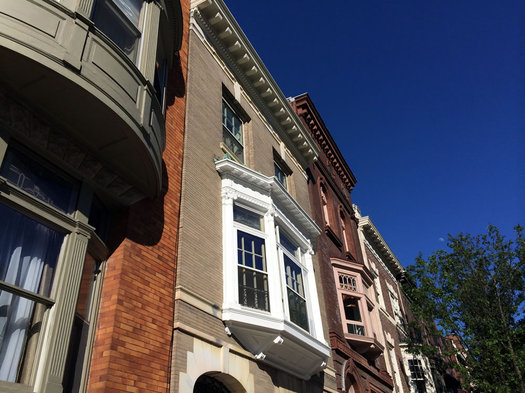
As one person responded: "The primary thing I've taken from Albany is an appreciation for the historic assets of a region, specifically the buildings. Without preservation a city loses its character and becomes aesthetically diluted and undifferentiated."
Sometimes you find perspective with distance.
For You're New Here Week we thought it'd be interesting to ask a handful of people who have moved away from the Capital Region for their thoughts about this place. Specifically, we asked them:
What's something you've taken with you from the Capital Region, and why has it been important or significant to you?
It's an open-ended question, and we got a range of responses -- everything from memories, to experiences, to photos, to attitudes, to actual pieces of Troy.
You're New Here: Food
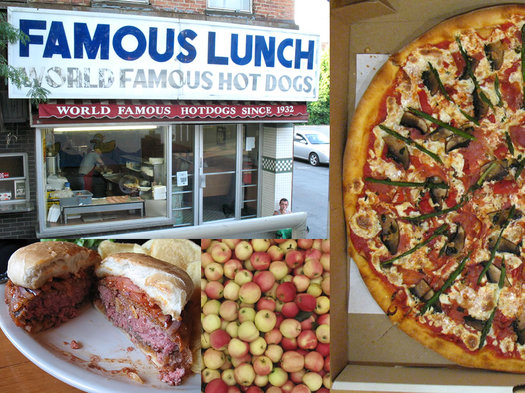
It's You're New Here Week on AOA. All this week we'll have stuff to help get you acquainted with the Capital Region -- whether you recently moved here, or just want to see this place through new eyes.
You're new here? Well, about nine years ago, I was new here, too.
We relocated from Berkeley, California and I knew the transition would be challenging. Our old apartment had been just a few blocks from Chez Panisse and the famous gourmet ghetto. Good food was the air we breathed, and local, seasonal, sustainable was a mantra everyone took to heart.
Back in 2007 Albany had no Whole Foods or Trader Joe's. There was no place to get a reliably good cappuccino. Heck, I couldn't even find a grassfed hamburger.
So I plunged myself into the quixotic task of attempting to improve the region's food culture. Without a culinary background, I figured the best path to this goal was through consumer education. And that began a nine-year journey which started with an avalanche of Yelp reviews, spawned a food blog, led to a writing gig with AOA, and landed me my dream job of working for Yelp.
And over that time I've learned a thing or two about how to best enjoy the food of the Capital Region.
A quick look at city and town population changes
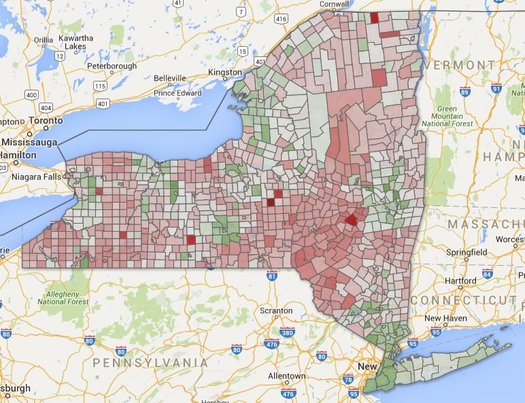
There are large, clickable maps after the jump. (Because of course there are.)
The topic of changing population popped up in comments earlier this week, so we figured it'd be interesting to whip together a clickable map of some new numbers for city and town population changes both here in the Capital Region and across the state.
And it turns out the Capital Region is a bit of an outlier.
Let's have a look...
New York State could be closer to allowing Uber and Lyft to operate here. Maybe. Sort of.

Sample screenshots from the Uber app.
It's been more than two years since a local campaign started to get "ride sharing" services such as Uber and Lyft to come to the Capital Region. And, as it turned out, a big obstacle to those services operating here and in other non-NYC parts of the state is the way New York's laws are configured.
But now the state legislature is on the verge of removing that obstacle. Probably. Maybe.
Here's the situation -- and a glimpse at one possible related future.
Thinking about Capital Region commuter rail

A Shore Line East commuter rail service train in Connecticut. / photo: Pi.1415926535 on Wikipedia (CC BY-SA 3.0)
The topic of bringing rail transit to the Capital District is one that comes up regularly every few years. Certainly, there are a good number of well-intentioned advocates out there in the region who believe that to have a serious transit option, the Capital District must have rail.
I don't -- at least, not yet. And here's why.
Goodbye, Time Warner Cable
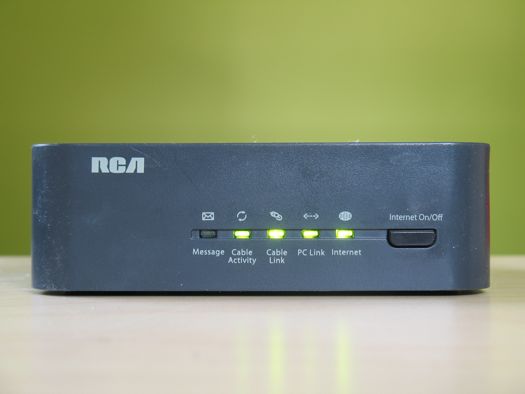
Time Warner Cable is now officially part of Charter Communications after the $55 billion acquisition closed today. And that means the TWC brand will be fading away. The combined company will be called Charter, and the services -- such as cable TV and internet access -- will be marketed under Charter's Spectrum brand. [Bloomberg]
So, if you're a TWC customer, what's all this mean?
Well, Charter's CEO said today in a press release that there won't be many changes right away, but there will eventually be "product improvements and consumer friendly policies."
Here are a few things to keep an eye on:
Another year of record-high CDTA bus ridership

CDTA announced this week that it had more than 17.1 million passenger boardings during the fiscal year that ended in March -- a record high for the transit org. It's the third straight year CDTA has set a new annual ridership record.
Boardings were up 1 percent compared the previous fiscal year. And CDTA says they're up 25 percent compared to five years ago.
What's driving the increase? One big factor appears to be the increasing number of "universal access" agreements CDTA has formed with multiple organizations (such as local colleges) in recent years, under which people connected with the orgs are provided unlimited free rides. CDTA says boardings that are part of this program now make up 25 percent of all the systems rides.
CDTA ridership hit low point during the late 1990s and has been trending upward overall since then. After the jump there's a graph of the numbers from 1980 to now.
Capital Region Bike to Work Challenge 2016
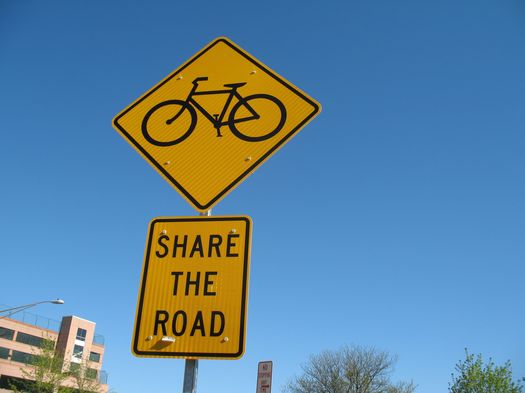
The annual Bike to Work Day is May 20 -- which means you still have some time to organize your team for the Capital Region Bike to Work Challenge.
What is this challenge? Blurbage:
Trophies will be awarded in each county for the following categories. Winners will "own" the trophies until Bike to Work Day 2017.
+ Organization with the largest number of riders
+ Small organization with the highest percent participation (20 or fewer employees)
+ Organization over 20 employees with the highest percent participation
+ Person who rode the farthest.
The challenge is organized by the Capital District Transportation Committee (CDTC), Capital Moves, and Bikeatoga. There's sign-up info at that link above.
Competition aside, this sort of event can be a good prompt to try cycling to work. For some people it's just not going to work because of distance or whatever. That said, we suspect it's a bit like riding the bus: If you don't do it often, it might seem impractical or a big hassle. But you might be surprised by how well it works out. You just have to give it a fair shot.
How many people bike to work?
Bike commuting in the Capital Region core ranges from .4 percent of adult commuters in Albany County to .1 percent in the other counties, according to the most recent Census Bureau estimates (2010-2014). That adds up to... not a lot of people -- something just under 1,000 people.
The percentages are bit higher for some of the places within the Capital Region, such as the cities of Albany and Saratoga Springs.
Here's a national list of the cities (population 100k+) with the highest percentage of bike commuters -- it includes cold-weather spots such as Cambridge (Massachusetts), Madison (Wisconsin), Ann Arbor, and Minneapolis. All of those places have rates about 4 percent. (It'd be interesting to learn more about the bike infrastructure in those places.)
Comparing transit service both within the Capital Region and beyond
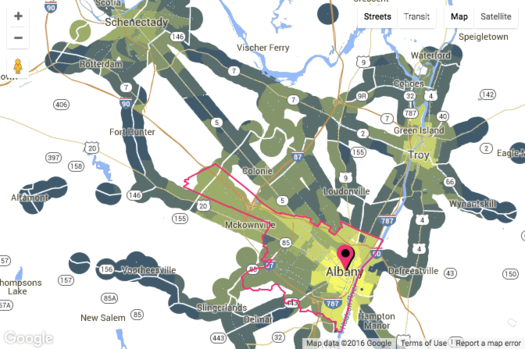
Check out the map clip above -- it's from a new site called AllTransit and it shows the number of transit routes within mile for places around the Albany-Schenectady-Troy area. (There's an interactive version at that link.) The brighter the yellow, the higher the number of routes.
AllTransit has all sorts of maps and rankings and data like this for metros all around the country. Here's a whole bunch of potential uses for info, broken out by type of person who might be using it (city residents, business owners, elected officials, and so on).
The maps might first draw your eye, but the rankings and scores are interesting for getting a bit of context about relative levels of transit services both (with)in the Capital Region and elsewhere. For example, the Albany-Schenectady-Troy metro ranks #42 among metros with more than 500k people for AllTransit's Performance Score, "an overall transit score that looks at connectivity, access to jobs, and frequency of service," with a score of 3.39. But, as you might expect, if you look within the metro area, there is a lot of variation. For example: The city of Albany's performance score is 7.8, the city of Schenectady's is 6.3, and areas of Clifton Park range from 1.4 to 0.
[via CityLab]
screengrab from AllTransit
Getting some sense of New York's upcoming minimum wage increases

As you know, New York State's minimum wage -- or, really, its minimum wages -- are set for large increases over the next handful of years. Areas downstate will eventually hit $15 an hour, and upstate will rise to $12.50, with continued increases planned after that.
Last year during the debate about whether the state should take this path, we tried to get some sense of the proposed increase by comparing the minimum wage to the wages of everyone else in the state. And we did this by region, because making $15 an hour in New York City isn't necessarily the same as making $15 an hour in Utica.
So now that the increases are set, we thought we'd run that comparison again. And we added a new one -- using the cost of housing as a yard stick.
A gap of 10 years
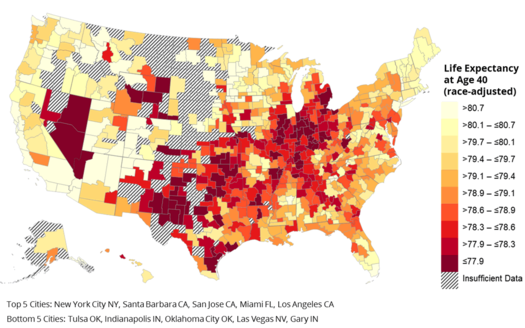
The Albany area ranks #59 among the nation's 100 biggest commuting areas. / map from The Health Inequality Project
The life-expectancy for a 40-year-old person making $89,000 or more in Albany County is 85.6 years (and up).
The life-expectancy for a 40-year-old person making $33,000 or less in Albany County is 80.5 years (and down).
And the gap in life-expectancy for people in the highest and lowest 10 percent of the income range in Albany County: almost 10 years.
Those bits are from new work out this week in the Journal of the American Medical Association from a group of researchers at institutions such as Stanford, MIT, and Harvard that looks at differences in life-expectancy across the United States.
One of their findings is that high-income people pretty much have the same (high) life-expectancy wherever they live -- but there's a wide range for low-income people across different parts of the country. The map above depicts some of those differences.
5 bits about jobs in the Capital Region -- and how much they pay

We hear George does this job for free.
Which jobs in the Capital Region pay the most? Which pay the least? Which are the most common? Which are much more common here than other places?
Those are the sorts of questions to which we can an answer from a set of numbers of published by the federal Bureau of Labor Statistics. And, as it happens, the BLS released a new batch of those numbers this week.
And given all the recent discussion about New York State increasing its minimum wage, it seemed like a good time to pick out some bits from the new numbers.
Flying through a 3D map of the Capital Region
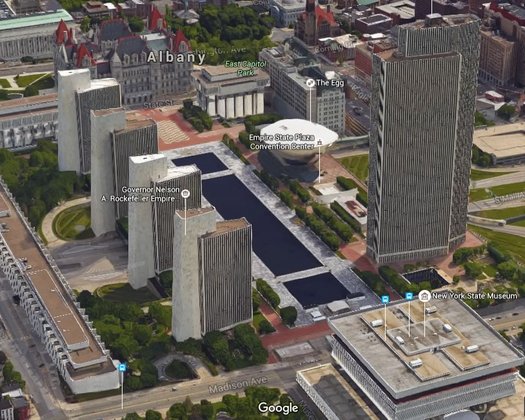
Check it out: Google Maps has 3D images of the Capital Region -- and you can rotate, tilt, and "fly" around the images.
We're not sure how long this function has been active here. (Google Maps have had 45-degree imagery of this area for a few years.) We didn't notice it until someone pointed it out to us today. (Thanks, Fred!)
How to use it: Switch a Google map to "earth" view (lower left corner), and then look for the little "3D" button in the lower right corner under the compass needle. And be sure to try holding down the control button while moving around the map.
There are a few screengrabbed examples of local spots after the jump if you're curious. The level of detail is pretty good, even if some features do end up a bit warped. (Sorry, Nipper!)
Schedule Explorer: Another Google Maps that was recent new to us is the "Schedule Explorer" for CDTA routes. It graphically displays which buses (or bus combinations) will get to a certain place by a certain time. It'll make sense when you see it. We've included a screengrab of that after the jump, too.
The Capital Region is growing. Slowly.

The deeper the green, the higher the percent population growth between 2010 and 2015. The deeper the gray, the higher percentage of population loss. There's a clickable map after the jump (actually, multiple maps).
The population of the Albany metro area was 881,830 as of last July 1, according to Census Bureau estimates released Thursday. That's up 1,739 people -- 0.2 percent -- compared to the same point in 2014.
The Capital Region is up 11,117 people -- 1.28 percent -- from 2010, according to the estimates. Its population growth (by percent) during that time ranked #260 among the 381 metro areas.
So what makes up that modest growth?
Albany metro ranked 36th best place to live
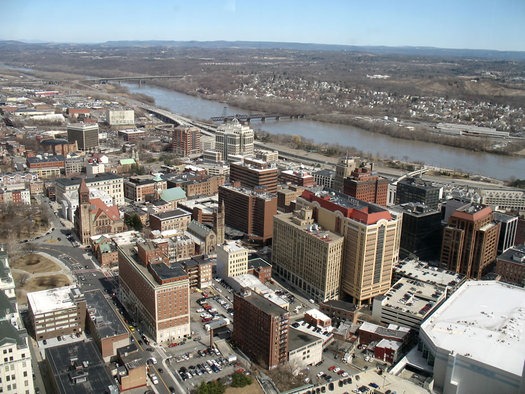
For what it's worth: US News "Best Places" rankings pegs the Albany metro as the 36th best place to live among the country's 100 most populous metro areas. And Albany ranks #15 among medium-sized metros (200k-1 million population).
The rankings are based on a range of topics and data sources, from jobs to cost of living to crime to migration patterns to "desirability."
The Albany metro scored better for its job market (low unemployment) and quality of life (low crime rates and short commutes). It scored not so well for desirability and net migration.
Desirability and how people perceive this place
All of these sorts of rankings tend to be squishy. And the desirability angle of this one seems especially so. From the methodology page: "Using Google Consumer Survey, we polled people across the country to find out in which of the ranked metro areas they would most like to live. The metro areas were then ranked according to the percentage of the total votes they received."
It's not surprising the Albany metro didn't score well in that sort of measure. This can be a very good place to live, but we suspect most people in other parts of the country not only don't know that -- it wouldn't even occur to them. This entire place probably wouldn't occur to them.
Capital Region high school graduation rates 2015
The state Department of Education released its annual collection of data about high school graduation rates around the state on Monday. The statewide graduation rate for 2015 (that is, the 2011 cohort of students) was 78.1 -- up almost two percentage points from the year before.
As we do every year, we've pulled out the stats from Capital Region school districts.
Sorted stats (including notes and qualifications) after the jump.
Capital Region gets parting gift in state's economic development award competition
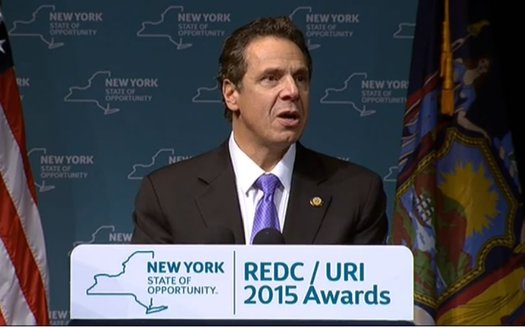
We're really hoping that next Andrew Cuomo will have the regional representatives come up on stage and spin a wheel or something.
update: Here's the list of projects that were awarded REDC money, both in the Capital Region and other regions.. The Capital Region's money will go to a variety of projects including infrastructure, Capital Rep's renovation, the Good Market public market in the Warehouse District, expansion plans at Nine Pin Cider Works, the Tower on the Hudson project, and a music television show to be produced at Proctors.
The list of Capital Region projects from the REDC booklet is embedded after the jump.
______________
The Capital Region left this year's state economic development grant game show with $98.1 million.
Sure, that's a large chunk of money. But the big money this year was in snagging one of the $500 million Upstate Revitalization Initiative awards, a Cuomo admin program inspired in part by the "Bufallo Billion."* The three winning regions for the URI prizes were the Finger Lakes, Southern Tier, and Central New York.
That the Capital Region didn't win one of the URI awards isn't really surprising, It's doing relatively well compared to the rest of the upstate, and it's already benefited from state money for projects like SUNY Poly and GlobalFoundaries. But the Capital Region's economic development council paid the famous consulting firm McKinsey $2 million to help it formulate its plan for the competition, a sign that it thought it had a real shot. (So... refund?) [Biz Review]
Here's a scan of the plan the Capital Region submitted. Officials have said that even if the region didn't win, the plan would still be useful as a map for future economic development.
And here's a scan of the "priority projects" as part of the Capital Region's regular REDC app. Which projects got money -- and how much -- will be out later today.
Here's the list of what each region was awarded...
A few quick statistical snapshots of Capital Region neighborhoods
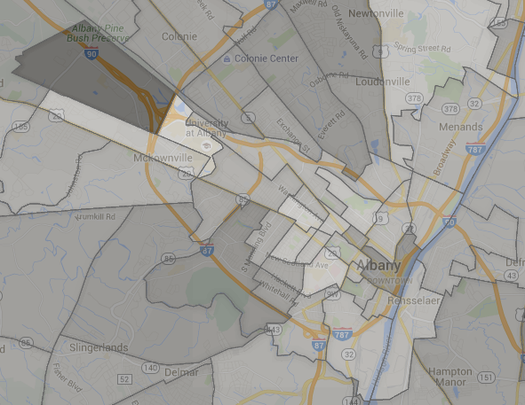
Which Capital Region neighborhoods are the most expensive in which to rent? Which tend to have households with the highest incomes? Which neighborhoods have populations that skew younger or older?
Those are some of the questions for which we can get an answer from new numbers released by the Census Bureau recently. This new data -- the American Community Survey 2010-2014 -- includes estimates for 210 census tracts in the Capital Region core counties. So we can focus not just on a city or town, but sections as small as neighborhoods.
There are a lot of things you can do with these numbers, and we're hoping to dig into them, but we figured we'd start out with putting together a handful of Capital Region maps that look a range of general topics, from income to age to whether people own or rent.
Drawing: Capital District Food Tour tickets + Honest Weight gift card

Drawing's closed! Winner's been emailed!
We have a drawing for Following Food week. (Because of course.) And the prize pack is rather fab. The winner will receive:
+ Two tickets for the Capital District Food Tour this Saturday on the Giddy Up. The tour will be making tasting stops at Umana, Barcelona, New World Bistro Bar, Druthers, and Ama Cocina.
+ A $100 gift card to the Honest Weight Food Co-op.
To enter the drawing, please answer this question in the comments:
If you had to pick one food item to represent the Capital Region, what would it be?
You can interpret this question a lot of ways. It could a dish, or a specific dish at a specific place, or a certain crop, or whatever. We'll draw one winner at random.
The Capital District Food Tour on the Giddy Up is this Saturday, November 21 from noon-5 pm. It departs from the parking lot at Colonie Center. Tickets are $60 per person and available online.
And, as you know, the Honest Weight Food Co-op is now at 100 Watervliet Ave in Albany, and offers a wide of selection of produce, natural foods, and specialty goods.
Important: All comments must be submitted by 8 pm Thursday, November 19, 2015 to be entered in the drawing. You must answer the question to be part of the drawing. (Normal commenting guidelines apply.) One entry per person, please. You must enter a valid email address (that you check regularly) with your comment. The winner will be notified via 11:59 pm Thursday and must respond by noon on Friday, November 20.
Honest Weight advertises on AOA.
Ask AOA: Why are so many people so intent on knocking down the Capital Region?

Are we just under a cloud here?
We got an email this week that you might consider a philosophical Ask AOA question. It's a little bit longer -- the whole thing is after the jump -- but here's the key part from Anonymous (who asked us to not use her/his real name):
As an on-again-off-again resident of the Capital Region (and Upstate NY in general) - now permanently here - I can't help but feel that this is one of the most negative places in the country. Every single day I hear people complaining about anything and everything... the weather is terrible (too hot! too cold! oh my God - it's raining! it might snow this winter! oh the humanity!!!), the taxes are too high, the government is corrupt, blah blah blah blah. It's coworkers. It's on the radio. It's on local TV. It's on blogs. It's everywhere. Yes - there are those that actually think for half a second about all the great things in this area, but it's oh-so-much easier to just moan about how everything is terrible. ...
My question: why are so many people so intent on knocking down the Capital Region, Upstate and NY in general instead of trying to build it up and improve it? Is it the unique political landscape (NYC vs. Upstate)? Is it from generation after generation passing along the legend of the terribleness of NY? Is it because Upstaters don't get out enough to see what other places are like - and how life is good here? Is it really just taxes? Or, are people here just predisposed to being pessimistic?
As Anon explains in the full question, she/he acknowledges there are problems here, but also that there are a lot of good things, too.
We've thought about this a bit, as well. It's not really fair to generalize that "people" are one way or another some place. But for whatever reason, it does feel at times that sentiment here tends toward the pessimistic more often than not.
So, any thoughts for Anonymous? Ideas for how things could be different? Please share.
Quick-scan general election results 2015
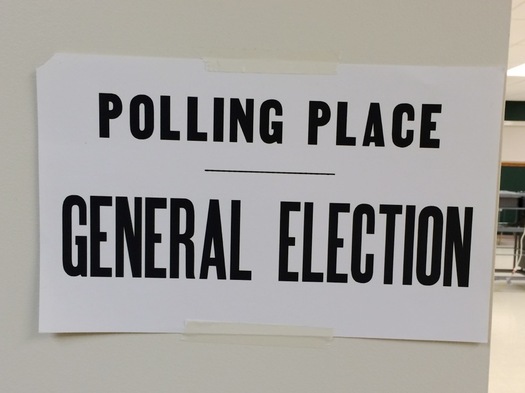
Here's a quick scan of results from local elections around the Capital Region Tuesday.
This is not a comprehensive list, just some highlights. Numbers are unofficial, and some are bound to change as things settle.
On with the results...
Degrees of difference between women and men
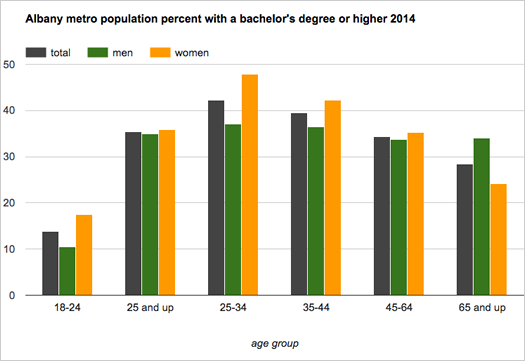
More women than men in the United States had a bachelor's degree or higher in 2014 -- 30.2 percent of women, compared to 29.9 percent of men, according to Census Bureau estimates. And as the bureau pointed out today, it's the first time that's happened nationally since the bureau started tracking the number in 1940.
We were curious about about the numbers for the Capital Region, so we looked 'em up for the Albany-Schenectady-Troy metro area. They're smashed into the chart above.
And here's a bit more...
Scanning the Capital Region's bid for half a billion dollars from the state
The project floated for this site in downtown Albany is almost unbelievably big.
How do you make the case that you should get $500 million?
The regions competing for one of the three Upstate Revitalization Initiative awards from the state released their plans this week.
We read through the Capital Region's plan -- which includes a proposal for a huge downtown Albany development -- and here are a few things that caught our eye...
Scanning the Capital Region Economic Development Council's proposed priority projects for 2015

One of the proposed priority projects.
The Capital Region Economic Development Council recently released its list of proposed priority projects for 2015. These are the projects the council will be suggesting get state funding in the next round of the Cuomo administration's Regional Economic Development Council initiative.
Last time out in the state's economic development game show -- er, we mean, regional economic development competition -- the Capital Region scored $60 million.
These reports usually include some interesting bits, and they're can be especially interesting because they often surface notable projects that are in the works.
So, let's have a look at a handful of proposed projects that caught our eye. They include a residential conversion project in Troy, a food court for Albany's Warehouse District, and goats...
A snapshot of Capital Region income

How the Albany-Schenectady-Troy metro compares to the nation's 381 other metro areas.
The Albany metro area continues to have one of the nation's higher median household incomes, and one of the the lower rates of poverty, according to the newest estimates from the Census Bureau.
Household income
The median household income in the Albany metro -- the point at which half the households had more income, and half had less -- was an estimated $62,265 (+/-1,494) in 2014. That's up just a bit from 2013 -- $59,626 (+/-1,981) ($60,593.25 in 2014 dollars). And it ranks 41st among the 381 metropolitan statistical areas the Census tracks.
Poverty rate
The Albany metro area's poverty rate was an estimated 11.7 percent (+/- 0.9). (It was 12.5 percent (+/-1.0) in 2013.) The metro's poverty rate was the 51st lowest among the 381 metros, lower than 87 percent of them. The Capital Region's poverty rate for kids wasn't quite so low -- an estimated 17.1 percent (+/-2), lower than 76 percent of metros.
Income inequality
Another angle on income and poverty is income inequality. And for that the Census Bureau publishes a figure called the Gini index -- a Gini index of 1 means only person has all the income, and 0 means everyone in a group has the same level. The Capital Region's Gini index for 2014 -- an estimated .4357 (+/-0.0119) -- was the 80th lowest (that is, toward the more equal end) among metropolitan areas.
Even if those three measure look relatively good for the Capital Region, there are still some troubling parts to the picture.
A bunch of numbers about a bunch of different topics
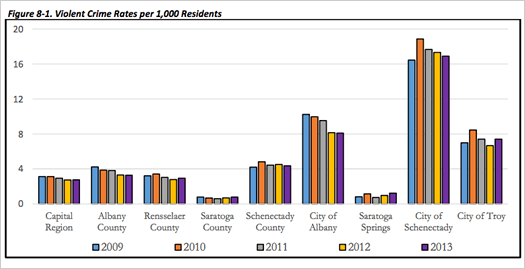
A chart about violent crime from the report.
How many people are here? What's the range of incomes? How are people getting around? What direction are crime rates headed?
Numbers related to those questions -- and many other topics -- are stuffed into the aptly-titled "Capital Region Statistical Report," which was released today by the Capital District Regional Planning Commission.
And it is exactly what it sounds like: a bunch of numbers about a bunch of topics in the Capital Region from a bunch of different sources, all aggregated in one report.
One example is above -- it's a chart from the report about annual violent crimes per 1,000 people in areas of the Capital Region. And it includes this short discussion of the chart:
How much does it cost to have "a secure yet modest standard of living"?

Clipped from the Economic Policy Institute Family Budget Calculator. Numbers are in 2014 dollars.
A family budget calculator posted online Wednesday by a think tank -- Economic Policy Institute -- aims to to answer that question for metro areas around the country. A few of the results for the Albany area posted above. (Here's a Washington Post interactive using the data that gives a quick look at how a metro stacks up against the rest of the nation.)
A bit of blurbage about the calculator:
Poverty thresholds are generally national income levels used to measure the number and share of Americans who are economically deprived. Conceptually, these measures are important metrics, but are fundamentally different from EPI's basic family budgets. Families above poverty thresholds are just thought to be free of outright material deprivation. In contrast, family budgets offer a broader measure of economic adequacy by measuring the dollar amount necessary for families to live securely but modestly in various communities across the nation.
As with anything like this, the methodology is going to make a difference in the outcome, and EPI documents the recipe it used.
One thing that caught our eye right away was the cost of child care. While it wasn't surprising that it was expensive, we wouldn't have guessed it was quite that much. A look through the methodology reveals that the cost of childcare is from data published by state. So it's possible the number is inflated a bit by the downstate cost. (Now we're curious about the cost of day care here in the Albany metro area...)
Earlier on AOA: A few ways of thinking about the minimum wage
When bikes weren't just something on the side

A 1900 map of "side paths" -- bike paths -- around the greater Albany area.
That recent post about the "great popularity of cycling" in Saratoga Springs around the early 1900s and the all the discussion of late about building protected bike lanes in Albany got us looking into the history of bike paths. And, as so often is the case, the past seems like a completely different place.
For example: There was once a law in New York State that allowed a group of just 50 bicyclists to petition for the formation of a commission that would be tasked with building bike lanes.
Where the commuters are from
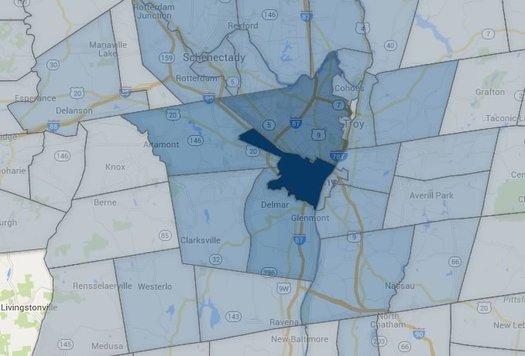
The city of Albany draws commuters from a wide area.
Each weekday in the Capital Region a large tide of people wash into the area's urban centers for their work days, and then stream back home. So large is this tide for the city of Albany that its daytime population during the week rises by 2/3.
So, where do all these people come from? Well, thanks to some recently released Census data, we can some sense of an answer to that question. And to extend the water metaphor a bit further, we can map out the "commuter sheds" that drain into each of the Capital Region's urban centers each weekday.
So let's have a look.
Jobs gained and lost
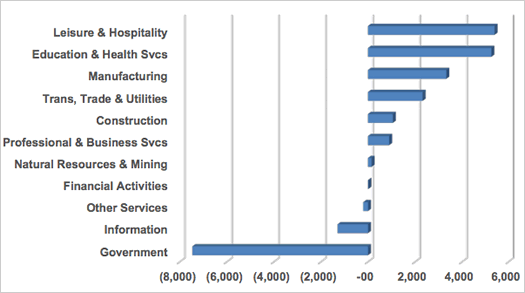
"Government" also includes jobs such as public school teachers. / graph: NYS OSC
That graph above depicts the numbers of jobs gained and lost, by sector, in the Capital Region between 2009 and 2014. It's from NYS Comptroller's Office report out Monday looking at employment trends across the state.
That might sound like a snore-inducing document, but it collects a bunch of bits that help fill out the picture on what's happening (or not happening) in the economy. A few of those interesting bits...
Back in town for the first time in almost two years, what are "can't miss" new things?

The Artist Formerly Known as AOA Jess emails:
Hello 518!
It's been a shocking 20 months since I was last home in Albany.
That feels like a lifetime. Fortunately, I'm going to be back in town Saturday and I can't wait.
I've only got a week and I have lots of friends and family to see, but I'm seeking suggestions nonetheless. Obviously there are my perennial favorites (Troy Farmer's Market, Wine Bar on Lark, spicy green beans at New World Bistro, etc.) but I'd love recommendations.
What new places have opened up since I was home last that are "can't miss" spots? Albany-Troy area preferred as I probably won't have time to get to Saratoga on this time.
Thanks in advance!
Re-visiting a place a once a year, once every few years, can be interesting perspective -- it's still familiar, but the things that have changed are more noticeable.
So, got suggestions for new stuff that Jess should be sure to check out? Please share!
Solar continues to grow around New York
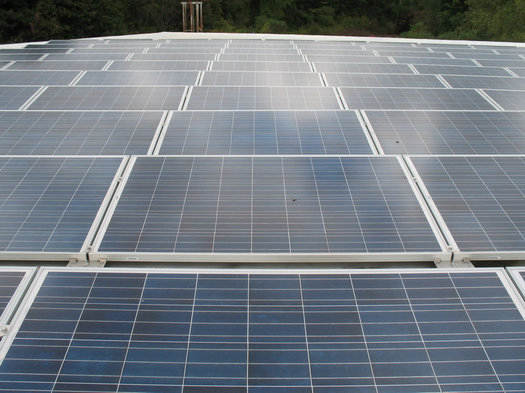
More common.
The Capital Region had the second-highest amount of installed solar energy generation capacity in the state as of 2014, according to numbers released by the Cuomo admin Monday. The eight-county region had 51 megawatts of capacity -- up 500 percent since 2011. (The region with the highest total was Long Island, with 96 megawatts.)
For some perspective, a megawatt of installed solar is estimated to be capable of powering about 155 homes a year in New York State.
New York State has a whole had almost 315 megawatts of installed solar capacity as of 2014, according the Cuomo admin. That's up 300 percent since 2011.
A few individual Capital Region counties also ranked highly. Albany County had 13.66 megawatts of installed capacity -- the fifth-highest total among all counties. And Columbia County ranked #1 for installed capacity per capita.
Are there clickable maps? You know there are...
Neighborhood highlights
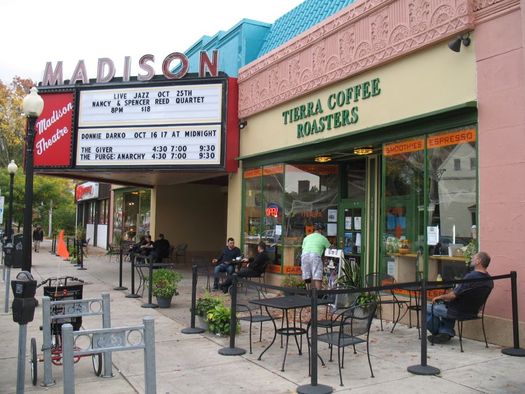
Tierra Coffee Roasters and the Madison Theater in Albany both were mentioned.
A few months back as part of an AOA birthday week drawing asked people to name something that's a highlight o f their neighborhood. And there were a lot of things mentioned.
You can probably guess some of the things mentioned, either because they're popular or prominent. But there were also a lot of other things mentioned that are smaller or more out of the way, so maybe they're new to you.
Because we got so many suggestions, we figured it'd be useful to fold them into a clickable map.
The long days of summer are a good time to explore new areas -- so maybe the map will help you find a few new places to check out...
Planning for how we'll all get around the Capital Region in the future

If our future overlords will be self-driving vehicles, it's probably a good idea to have a plan fo them. (If only so we can properly welcome them.) / photo: Google
A bit of follow-up to that discussion about trends that are shaping the way people get around the Capital Region: The Capital District Transportation Committee has a couple of public meetings this week to go over the draft version of its New Visions 2040 Plan -- this is the map (of sorts) for thinking and planning all sorts of regional transportation stuff, including roads, bridges, traffic congestion, CDTA, bike lanes, car sharing, road diets, even stuff like self-driving cars.
The meetings are:
+ Tuesday, June 16 at the Empire State Plaza (Meeting Room 6, Concourse Level) from 6:30-8:30 pm
+ Thursday, June 18 at Niskayuna Town Hall from 6:30-8:30 pm
The full draft plan is online if you'd like to have a look (there's also an executive summary and listing of key recommendations.) If you're curious about any of the topics mentioned above, you'll probably find at least a few interesting bits.
After a quick read through, here are a handful of things that caught our eye:
We're #61
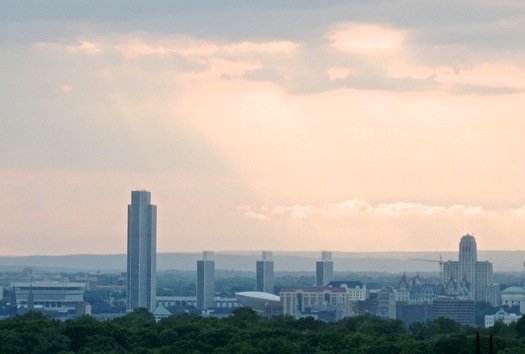
But still #1 in your heart.
The Albany-Schenectady-Troy metropolitan area* had a population of 880,167 as of July 1, 2014, according to new estimates released by the Census Bureau this week. That ranks the Albany metro #61 for population among the nation's almost-400 Census-designated metro areas. (The same ranking as in 2013.)
The metro population is up 1.1 percent -- 9,447 people -- since 2010. But its ranking is down one spot since that year, because other parts of the country have gained population faster. (Population in metro areas was up 3.9 across the nation during that time.)
The Census Bureau also released new population estimates for cities, towns, and villages.
Can you guess which place in the Capital Region has gained the most people since 2010?
Growing seasons in Albany

The lettuce likes it cool, anyway.
With the, um, rather brisk weather this week (56 on Wednesday) -- and frost advisories around some parts of the Capital Region -- we were curious about growing seasons here in Albany over the years.
Thankfully, the National Weather Service Albany office publishes that info dating back to 1874. And because we have an easier time scanning this sort of stuff when it's in graphical form, we flipped into an interactive chart...
A ZIP code map of New York State

This is just a clip -- the clickable map is after the jump.
As it says on the label, here is a clickable map of ZIP codes (roughly) in New York State.
A while back we had planned to include this map with some discursive post about ZIPs and maps and perceptions of place that was related to the Halfmoon-wants-its-own-ZIP thing, but that post ended up only half baked and unpublished (thankfully -- no one needed to be subjected to that). We were reminded of the map again this week because of the wealthiest ZIP code ranking over at the Biz Review.
Anyway (oh no, here we go...), ZIPs are kind of interesting because of what they started as (a way for the US Postal Service to arrange its routes) and what they've ended up being used for (a way for the rest of us to also identify places). As the ZIP data website ZIP Boundary highlights, a ZIP code doesn't really define an area for the USPS, but rather a collection of delivery points.
And then there are the issues related to the fact that ZIPs are only loosely associated with municipalities -- that's how a place like Crossgates, which is in the town of Guilderland, ends up with a postal address that is Albany (because it's in the 12203 ZIP). Here's an interesting history of ZIPs, again from ZIP Boundary, that touches on that issue.
One of the things that's reinforced for us by looking around the map of Capital Region ZIPs is that the codes aren't necessarily a good way of defining areas (well, unless you're delivering mail). Again, using the 12203 ZIP as an example: it stretches from Washington Park in Albany west along Western Avenue, with lobes that include Guilderland, Bethlehem, and New Scotland -- that's an odd collection to group together.
Right, so... on to the map...
Wedding bells... somewhere else
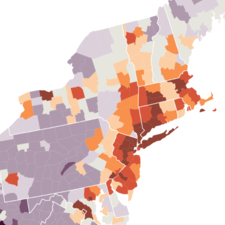 Kids who grew up in the Capital Region in the 1980s and 1990s have been somewhat less likely to get married than the national average.
Kids who grew up in the Capital Region in the 1980s and 1990s have been somewhat less likely to get married than the national average.
That's one of the bits from the The Upshot's latest sift through the data about how place affect a kid's income mobility. For the Capital Region core, people were less likely to be married at age 26 compared to national average by:
+ Albany County: 6 percentage points less likely
+ Rensselaer County: 4 percentage points less likely
+ Saratoga County: 3 percentage points less likely
+ Schenectady County: 5 percentage points less likely
From the article:
These conclusions -- based on an Upshot analysis of data compiled by a team of Harvard economists studying upward mobility, housing and tax policy -- are not simply observations about correlation. The economists instead believe that they have identified a causal role that geography plays in people's lives. The data, which covers more than five million people who moved as children in the 1980s and 1990s, suggests that children who move from, say, Idaho to Chicago really do become less likely to marry, even if the numbers can't explain exactly why these patterns exist.
David Leonhardt and Kevin Quealy write that the patterns appear to be hold form through age 30. Another takeaway:
One of the most striking relationships we found in the data was between political ideology and the marriage effect: The more strongly a county voted Republican in the 2012 election, the more that growing up there generally encourages marriage.
There's a good graph accompanying the article that illustrates that point.
One angle that didn't surface in the article that we're interested to see how it fits in: Is there any pattern involving the relative income of single women and men and the likelihood of people getting married?
Earlier on AOA: If place matters, why?
map clip: New York Times The Upshot
If place matters, why specifically?
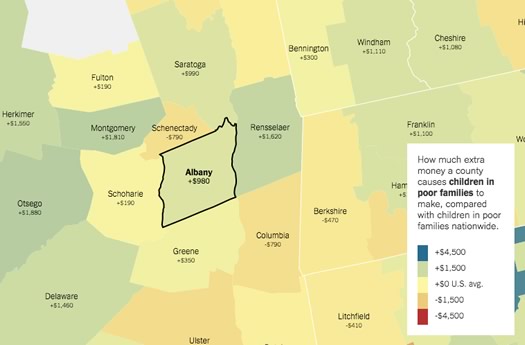
A clip from the interactive map at NYT's The Upshot.
Sometimes information raises more questions than it answers.
We were thinking about that today while looking through this impressive New York Times interactive piece about a new study that examines how place affects the income mobility of children. A clip:
The main innovation of the new paper -- part of the Equality of Opportunity Project, involving multiple researchers -- is its focus on children who moved. Doing so allows the economists to ask whether the places themselves actually affect outcomes. The alternative is that, say, Baltimore happens to be home to a large number of children who would struggle no matter where they grew up.
The data suggests otherwise. The easiest way to understand the pattern may be the different effects on siblings, who have so much in common. Younger siblings who moved from a bad area to a better one earned more as adults than their older siblings who were part of the same move. The particular environment of a city really does seem to affect its residents.
The data does not answer the question of whether the factors that distinguish higher-mobility places, like better schools and less economic segregation, are causing the differences -- or are themselves knock-on effects of other, underlying causes. "We still need clarity on that," Mr. Grusky, the Stanford professor, said.
There are a lot of important details beyond that clip, and it's worth reading that article and the accompanying pieces. Here's economist Justin Wolfers arguing that the study "makes the most compelling case to date that good neighborhoods nurture success."
So, we've been poring over the results for the Capital Region and they raise a lot of questions. For example:
Alongside the push for Uber

Screenshots from the Uber app.
The open letter that Matt Baumgartner and Vic Christopher released Tuesday calling on local mayors to help bring Uber to the Capital Region has been getting a lot of attention in the local media. And that makes sense. Baumgartner and Christopher are both prominent local business figures, and it's no secret there is ample frustration with local taxi services.
But the taxi issue in the Capital Region has been simmering for a while (Baumgartner and Christopher first reached out to Uber more than a year ago.) And there are a handful of important to angles to keep in mind...
A Lyft for Albany?
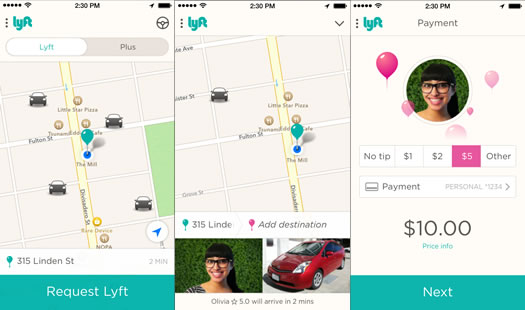
Screenshots from the Lyft app. / images: Lyft
Officials from the taxi-app company Lyft were in Albany recently to meet with city officials.
Matthew Peter, chief of staff for Albany mayor Kathy Sheehan, told us this week that representatives from Lyft had been in for a meeting "about two weeks ago." Peter described the meeting as a "very generic introduction" and said Lyft was currently in the process of introducing itself to cities. He said the Sheehan administration is looking into the topic and doesn't have a position on it.
"We're talking to cities across the state to see if there's a need for increasing safe and affordable transportation options," Lyft spokesperson Chelsea Wilson said to AOA this week when we asked about the meeting. "And we've heard that people want options like Lyft."
Lyft -- and competitors such as Uber -- have become key players in the taxi ride market in many cities around the country, all while pushing against what the companies say is outdated regulation and critics charge they're using unfair advantages.
Monthly house payments by Capital Region place

A handful of places pulled from the list -- the highest (Bethlehem-Bethlehem Central), the lowest (Corinth town-Corinth Central), and a few in between.
Some follow-up on that post a few weeks back about comparing Capital Region property tax rates: Matt emailed us hoping we could send along the numbers because he was curious about the monthly payments -- mortgage + taxes -- for the median home in each municipality around the area. That sounded interesting to us, so we bounced a spreadsheet back and forth and came up with a different look at the topic.
The results aren't exactly surprising, but it does highlight some things differently.
For example: The city of Schenectady tops the chart for property tax rate (per $1k value). But looking at the monthly payment for the median house there, Schenectady is way, way at the bottom of the list at just about $919 (of which about 45 percent is property taxes).
Based on the monthly payment figure, we were also able to make a rough guess at about how much a household would have to make each year to afford the median house in each place. Example: Bethlehem, in the Bethlehem Central School District, topped the list at about $82k. (Caveats? You bet. They're explained inside.)
OK, let's have a look at the whole (new) list...
Comparing Capital Region property tax rates
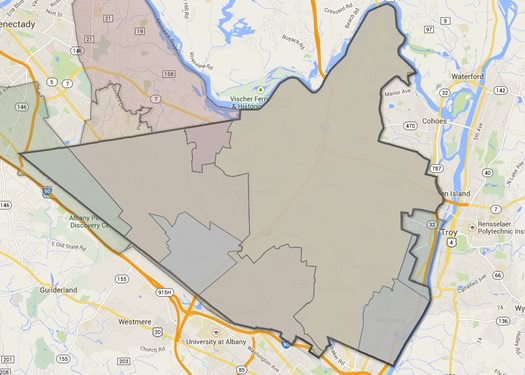
This map doesn't really show anything beyond how complicated listing tax rates can become. As you know, the bold-outlined area is the town of Colonie. Each of the sections within the town depicted above have a different entry in the tax rate listing because of some different combination of town, village, or school district.
The cities of Schenectady and Albany have the highest property tax rates in the Capital Region, according to numbers shared this week by the Empire Center.
The tax rates are for 2013 and include county, city/town, village, and school district taxes. The think tank also figured median tax rates by region around the state. And in that category, the Capital Region did well -- it had the state's lowest median at $24.68 per $1,000 of value. (The Empire Center didn't include New York City or Nassau County on Long Island in that review.)
As has been highlighted in years past, there's wide variation in tax rates around the Capital Region.
Here's the whole list, sorted and ranked...
Short commute, small footprint
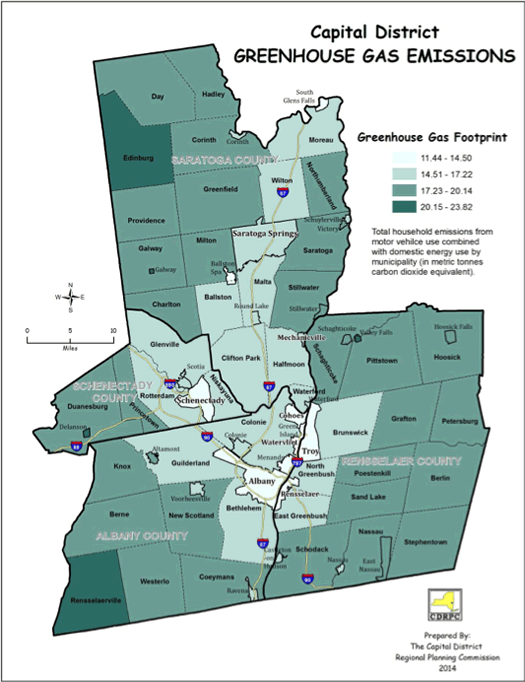
Among the benefits to living near the Capital Region's urban core: on average, your household probably will have a lower greenhouse gas footprint.
The above map caught our eye while we were flipping through the docs for that Capital District Transportation Committee draft plan for the area's transportation future. It depicts the estimated average greenhouse gas footprint -- for both transportation and household use -- for households in each municipality. (After the jump, we've also clipped the map that depicts estimated greenhouse gas footprints just for transportation.)
The map is probably what you'd expect -- if a municipality, like the city of Albany, hosts a lot of jobs then its residents are more likely to not have to commute far, and as a result, won't have as large a greenhouse gas footprint. (And you'd probably expect the inverse, too.) In fact, that map matches up pretty well with maps for both daytime population swing and average commute time in the region.
We were curious about the estimates behind the map, so we dug out a Capital District Regional Planning
Commission report about a regional greenhouse gas inventory. The estimates are explained on p. 19. And the report also includes more, and larger, maps on the topic.
One highlight from those additional maps: An estimate of energy costs by municipality (p. 23). The difference between the low and high end is about $8,500 per year.
Four trends shaping the way people will get around the Capital Region in the future

Google's prototype self-driving car. / photo: Google
Sometimes it's a good idea to take a step back and ask, "Where are we going?"
That's exactly what the Capital District Transportation Committee is doing right now for the Capital Region with its draft New Visions 2040 plan. It's trying to map out where we're all going (figuratively) and how we're all (literally) going to get there.
So, what does this sort of plan include? Roads, bridges, traffic congestion, CDTA, bike lanes, car sharing, road diets, all that stuff -- and things that are even farther out (both in the future and, like, whoa), such as self-driving cars.
CDTC has a bunch of public meetings coming up at which it's hoping people will speak up about their concerns and hopes for transportation in the future Capital Region. (Details are after the jump.)
So we thought it'd be interesting to talk with CDTC executive director Mike Franchini this week about four trends he thinks will influence how we'll get around in the future.
Leaning toward renting
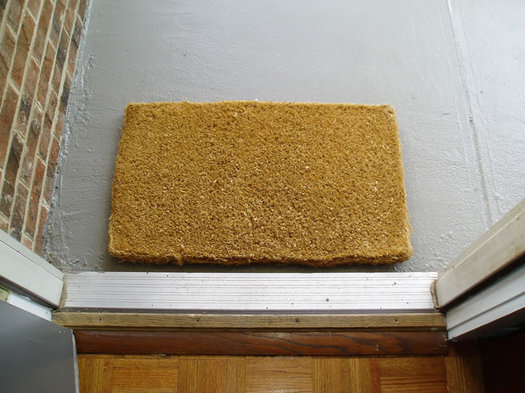
Home sweet (rented?) home. / photo: Flickr user Joelk75 (CC BY 2.0)
Last week we wrote about one of the residential conversions in progress in downtown Albany. As is so often the case, a prominent thread in the comments was the rental price. And then chris capped things off with this comment:
Hey, when people start buying houses again this place will be half-empty and they'll have to drop the rent. Have patience...
We were thinking about how chris framed the situation -- essentially, people are leaning away from buying houses right now and toward renting -- and wondering if we could get a better sense of the situation.
Are there numbers on that? Of course. Did we look them up? Of course. Are we now going to share some of the numbers with you, with graphs? Of course.
Not in the driver's seat
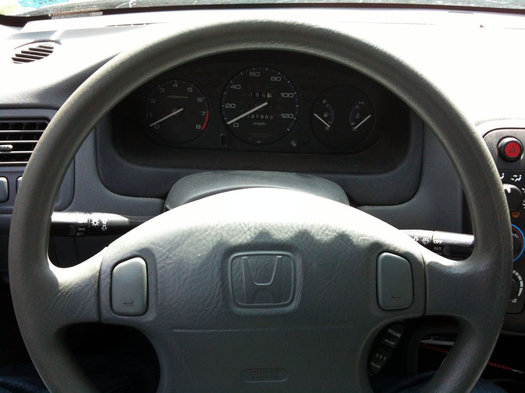
An increasingly uncommon spot?
A theme that's popped up often in recent years among developers, planners, cultural observers, whoever: more people -- younger adults (the Millenials), especially -- don't like to drive. You see it mentioned in national articles, and we've had developers and planners mention it to us locally.
We had that idea in mind this week when we came across some numbers about vehicle use over the last few decades, both nationally and here in New York State. One thing led to another and we ended up calculating driver's licenses per capita for counties around the state. (Because of course.)
A few interesting bits floated by along the way. Among them: Of New York State counties that are not part of New York City, Albany County has one of the lowest levels of driver's licenses per capita in the state -- and the rates for all of the Capital Region core counties in 2013 were down compared to 2007.
Here are a few quick graphs, and a few thoughts.
Capital Region high school graduation rates 2014
The state Department of Education released its annual collection of data about high school graduation rates around the state on Thursday. The statewide graduation rate for 2014 (that is, the 2010 cohort of students) was 76.4 -- up a little more than a percentage point from the year before.
As we do every year, we've pulled out the stats from Capital Region school districts.
Sorted stats (including notes and qualifications) after the jump.
Rivers Casino and Resort in Schenectady picked for Capital Region casino
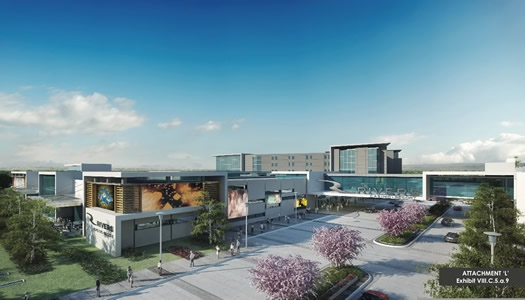
A rendering of the project.
The state Gaming Facility Location Facility Board has picked the Rivers Casino and Resort project in Schenectady as its recommended site for the Capital Region. The $300 million proposal is part of the Galesi Group's Mohawk Harbor mixed-use project at the former Alco site.
Ahead of the announcement, chairman Kevin Law explained the board sought to select applications that both fit the guidelines laid out in the state law allowing the casinos -- 70 percent economic development, 20 percent local impact, 10 percent jobs -- and also held the most promise of long term success.
Strengths of the Schenectady proposal cited by the board:
Capital Region gets $60 million in Regional Economic Development Awards
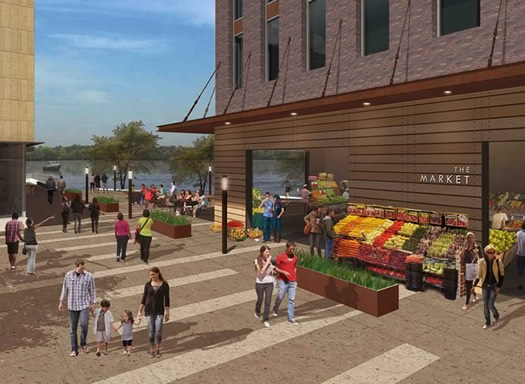
The planned permanent space for the Troy Waterfront Farmers' Market was awarded $1.5 million.
Capital Region projects got a combined $60 million in the Regional Economic Development Council awards announced Thursday. An easy-scan table of the projects is after the jump.
The region snagged $82.8 million last year. But this time around it was not a "top performer" in the state's annual Who Want's to Win Some Pork?!?! game show -- it ended up receiving the second-lowest amount out of the state's 10 regions.
Here are a few of the project awards that caught our eye on the first pass...
The busiest Thruway exits
Very busy.
Holiday travel around Thanksgiving got us curious about the busiest Thruway exits.
So we looked it up.
And it turns out one of the exits here in the Capital Region is the busiest toll exit on the Thruway. Exit 24 -- at I-90 and I-87 -- averaged more than 26 million Thruway vehicle entrances and exits between 2008 and 2013. In fact, it was wayyyy ahead of the #2 exit.
Are there rankings? Is there a clickable map? As if you have to ask...
The Capital Region lit up by Twitter
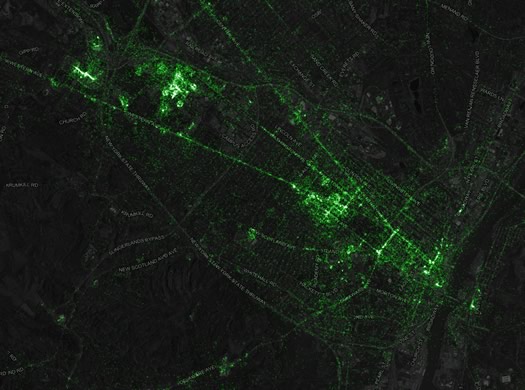
Check out this map of the Capital Region (and the wider world) depicting geotagged tweets for the last 3.5 years. (That's a screengrab above.)
The map is the creation of Eric Fischer, a developer at the mapping company Mapbox. Here's how it was created using some 6.3 billion geotagged tweets.
The patterns here in the Capital Region aren't super surprising -- there are big clusters of tweets pretty much wherever people gather. But a few quick things that caught our eye:
+ Areas with large college students populations registered high concentrations of tweets -- not just campuses, but also neighborhoods like the midtown section of Albany.
+ Transportation nodes and corridors -- such as the Albany-Rensselaer train station, Albany bus station, and interstates -- stand out. (Again, this makes sense -- people are concentrated on transportation corridors. Also, um, maybe there's some tweeting while driving.)
+ Other high density spots: entertainment venues (like the TU Center), hospitals, shopping centers.
(Thanks, Katy!)
When is the coldest day of the year?
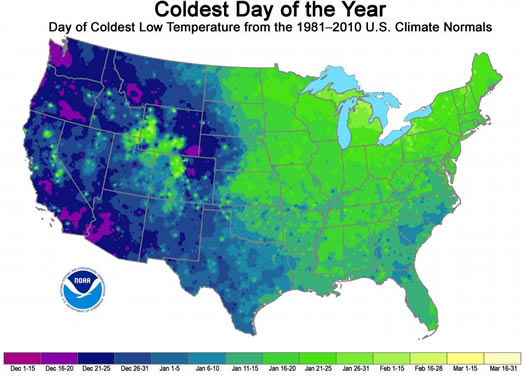
Because winter is happening, apparently: This map depicts the when the typical coldest day of the year occurs around the United States.
The map is the creation of the federal National Climatic Data Center, based on 1981-2010 climate averages. Blurbage:
The map reveals several interesting regional differences across the country. Most prominently, the western half of the Lower 48 typically reaches its climatological coldest day in December, whereas most eastern stations reach their minimum in January. In addition, areas with higher snowfall Normals, such as the Northeast and high-altitude regions in the West, tend to reach their climatological coldest day much later, which is likely because of the increased reflection of solar radiation at the Earth's surface due to the presence of snow cover.
This map prompted us to look up the typical "coldest" day of the year for the Albany area. And it's actually multiple days -- a stretch from January 14 to January 20 when the normal average daily temperature is 22.1 degrees.
Here's a gratuitous graph of Albany daily temperature average normals.
How the Albany metro area accesses the internet

Common.
Roughly 3/4 of households in the Albany metro area have a broadband internet subscription. But almost 20 percent of households don't have any internet access at all.
Those are a few bits from a recent Census Bureau release of data about internet access around the country. Last year was the first time the Census collected this sort of information. So we thought we'd have a look.
Surveying the Capital Region's creative economy
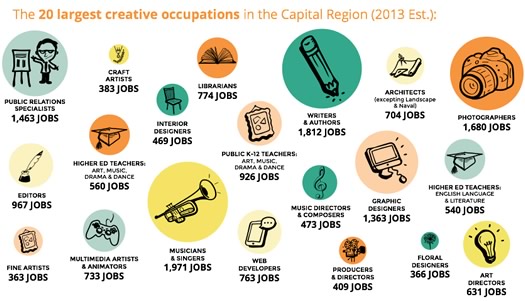
From the report.
The Regional Alliance for a Creative Economy -- a local multi-org effort studying how to spur creative industries in the Capital Region -- released its report on the local creative economy today at Proctors. And -- spoilers -- it found that are many people involved in creative jobs.
The report -- "Leveraging Regional Assets for A Vibrant Future," compiled the consultancy Mt. Auburn Associates -- concluded there are 30,591 jobs in the Capital Region in what it considers creative industries. And it included a bunch of recommendations about how the region could advance these industries and, as the thinking goes, help the region as a whole.
Here are some highlights from the report, and a few thoughts.
Surveying Albany taxi experiences
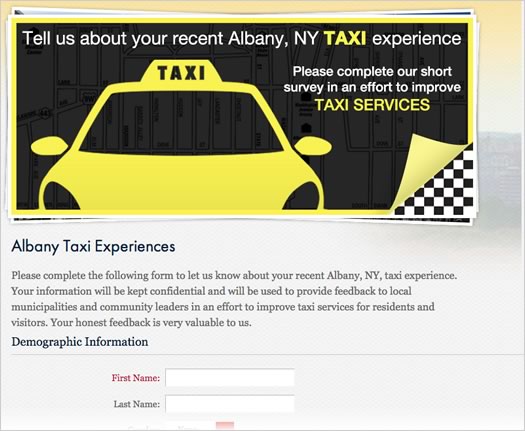
A screengrab from the survey.
Updated at 2:24 pm
The Albany Convention and Visitors Bureau is aiming to start a conversation about tax service in the Albany area via a new online survey collection taxi customer experiences.
As Schuyler Bull, the Albany CVB's director of marketing, said to us: "It's a large conversation to be had."
Capital Region neighborhoods with the most trick-or-treaters

Well, potential trick-or-treaters.
After a recent conversation about popular trick-or-treat neighborhoods, we were curious about which Capital Region neighborhoods have the most trick-or-treaters.
And while we can't really say without some sort of trick-or-treater census, there are numbers are which neighborhoods have the most potential trick-or-treaters.
So we looked it up. Is there an orange map? You know there's an orange map.
Poking at some numbers for New York school districts, graduation rates, and income
Two things (indirectly) prompted this post:
1. The discussion around that Miss Pearl question about moving out of Albany for the school district.
2. Another one of those school district rankings.
If anything, both of those items highlighted for us our desire to better understand what people are talking about when they talk about "the schools" -- and how factors such as income and poverty fit in.
So we pulled a whole bunch of numbers on New York State school districts -- specifically graduation rates, household income, and poverty rates -- and did some sifting. And we came across a few things we expected -- and few things we didn't.
The Capital Region's unemployment rate continues to drop

The Capital Region labor force since 2000. Here's a bigger version.
The Capital Region's unemployment rate was 4.8 percent in September -- one of the lowest rates of any metro in the state -- according to figures out this week from the state Department of Labor. And it was down from 6.1 percent in September 2013.*
New York State's unemployment rate was 5.6 percent in September, down from 7.4 percent the year before. And the upstate unemployment rate was 5.5 percent, down from 6.9 percent the year before.
The numbers for September continue a trend for the Capital Region in which each month's unemployment rate has been lower than that same month the year before, dating back to 2012 November.
Nordstrom Rack to open at Colonie Center
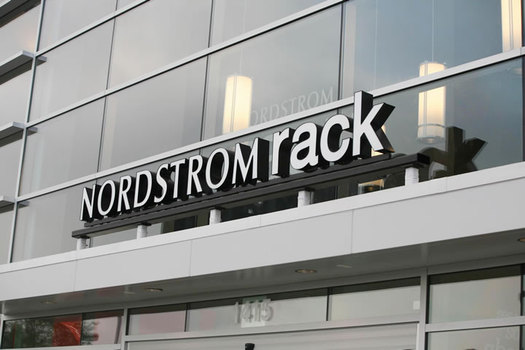
Nordstrom announced Wednesday that it's opening one of its Nordstrom Rack stores at Colonie Center in fall 2015. The company says it will be a two-level store -- roughly 35,000 square feet (roughly the same size as the new Whole Foods there) -- and it sounds like it will be in the same end of the mall as Sears.
Nordstrom Rack is the discount outlet for the upscale department store chain. The company says Rack offers "customers a wide selection of on-trend apparel, accessories and shoes at an everyday savings of 30-70 percent off regular prices."
As it happens, there are more Nordstrom Racks (162) than full Nordstroms (118). And the Colonie Center is one of 22 Nordstrom Rack locations the company has announced it plans to open in 2015.
It's interesting to us that, for whatever reason, the Capital Region appears to be getting attention from higher-end retailers over the last few years. Fresh Market has two locations in the region, Whole Foods opened earlier this year, Lord & Taylor returned at Crossgates just recently, and now (the not-quite-so-high-end-version of) Nordstrom.
We're curious if that points to something shifting in the demographics of this area. (More high-income households because of the nano/chip fab industry, maybe?) Or is it just that these upscale retailers have already expanded everywhere else and they're just getting around to the Capital Region.
Earlier on AOA: What "they" say about here
photo courtesy of Nordstrom, Inc.
What "they" say about here
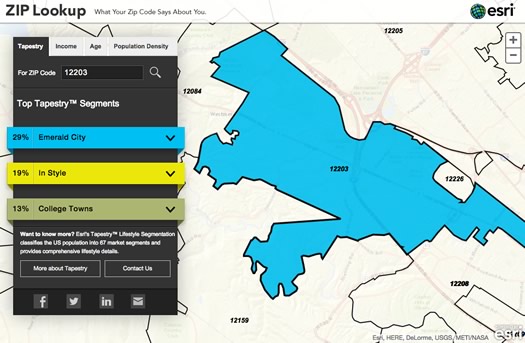
A screengrab from ESRI's Tapestry website.
Companies are constantly gathering and analyzing data about us in an effort to more effectively sell stuff or make decisions about where to locate. These data profiles often aren't readily available to the public, so it's sort of like "they" are talking about all of us behind our backs.
A big mapping/data company called ESRI has posted an online app that provides a peek at one of these attempts to categorize people and geographic areas into "unique market segments." The Tapestry Segmentation project uses Census, marketing, and geographic data to, in the Wall Street Journal's words, "potentially figure out if your neighborhood is more into lattes or latkes."
We were curious about how this area is being profiled, so we looked up a handful of local ZIP codes.
How New York and the Capital Region compare on income inequality
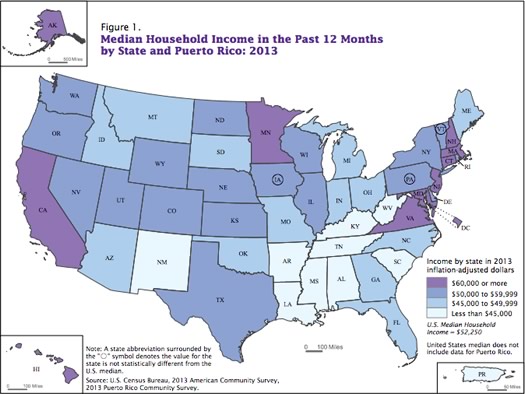
States by median household income in 2013. / map: US Census Bureau
Income inequality has been a much-discussed topic over the last few years, so some new numbers about income -- and income inequality -- out this week from the Census Bureau caught our eye.
As part of the income data from the 2013 American Community Survey, the Census Bureau released Gini coefficients for various places -- these numbers are the result of calculation intended to give a sense of how income is distributed within a group of people, usually a nation. It's a very common of income inequality when comparing countries.
So we were curious to see how New York -- and the Capital Region -- compared to the rest of the nation...
Our time in the sun

Worth savoring.
A string of brilliantly sunny days + walking by a house getting solar panels installed = our curiosity about how much sun Albany gets, and how it compares to other cities. (Of course, it had to be cloudy today.)
So we looked up the numbers -- and found a few things you might expect, and a few things you might not.
What's a recent building that you like?
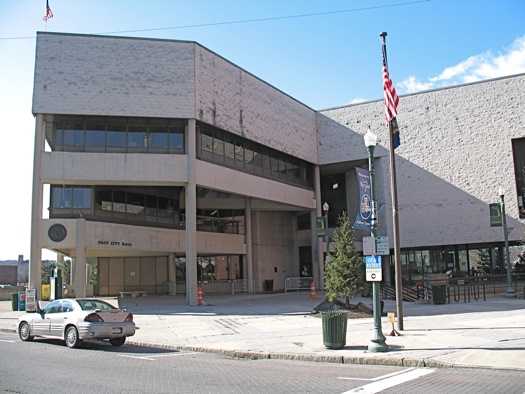
Have buildings like the old Troy City Hall soured people in the Capital Region on more modern styles of architecture?
What's a relatively recent Capital Region building that has a design you like or appreciate?
We've been thinking about this question generally for a while, but the posts this week about the Albany Capital Center and the 27 Holland apartments -- and the reaction to those designs -- has focused our attention on it.
Because it seems the recurring reaction to almost every new building around this area is "meh."
Sure, some of these designs are less than inspired. But is a win even possible for architects and designers in this area? The pull of traditional building styles of a century (or more) ago is strong and people here understandably are attracted to it, so there's backlash when a new building doesn't try to fit with the pre-existing style or is regarded as a pale imitation of it. At the same time, there are people who push for the Capital Region to embrace more modern design -- as others, soured by some regrettable examples of modernism, push back. And all along the way are concerns about cost, which in many cases can scuttle attempts at trying something new or innovative.
So, what's an example of something "new" that you like. And by new, we'll say anything that's been built in the last 25 years. What are the good examples? It doesn't have be the most excellent thing ever -- just something that you'd consider good.
Scanning the 2014 proposed Capital Region Economic Development Council priority projects

The proposed permanent home for the Troy Waterfront Farmers' Market is one of the projects seeking state funding.
The Capital Region Economic Development Council recently released its list of proposed priority projects for 2014. These are the projects the council will be suggesting get state funding in the next round of the Cuomo administration's Regional Economic Development Council initiative. (Or, as we've come to think of it, a game show called Who Wants to Win Some Pork?) The Capital Region scored almost $83 million the last time out.
Not all of these projects will necessarily get funding (or get funded at the requested levels) but it's interesting to see what's in contention because all sorts of interesting bits bubble up in these applications -- stuff that maybe you missed the first time around, or hasn't gotten a lot of attention.
An example: A company wants to build a free wireless internet access service for downtown Troy.
We put together an easy-scan listing, along with a map, after the jump. We've also highlight a few projects that caught our eye.
Taking the Capital Region Bikeshare for a spin

The Capital Region Bikeshare pilot is finishing up this week in Albany after week-long stints in Schenectady, Troy, and Saratoga Springs. The test run finishes up this Saturday, August 16.
We were curious about the program, so on Thursday we registered and took one of the bikes for a spin. Here are a few thoughts about the program, and about cycling in Albany generally...
Living in the "unhappy" belt
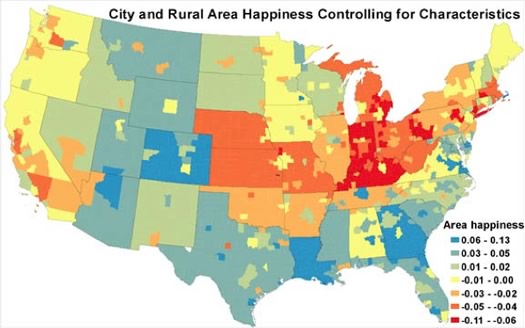
A map from the paper. It represents life satisfaction for metro and rural areas after adjusting for demographic variables.
Are you happy living here? Would you be happier if you lived somewhere else?
The Albany area ranks #142 out of 318 metro areas in self-reported life satisfaction, according to a working paper recently released by a research team headed by a Harvard economist.* The Albany metro is planted within a belt of "unhappy" cities that stretches from Massachusetts and through the northern US into the Midwest. Other upstate cities fare worse. And New York City was ranked as the #1 unhappy city.
OK, but what do they mean by "unhappy"? In this case the researchers are basing happiness in part on answers people gave to a large, national survey conducted by the CDC that asks people: "In general, how satisfied are you with your life?" Possible answers: very satisfied, satisfied, dissatisfied, and very dissatisfied. The researchers used the answers as a proxy for happiness, and then controlled the results for a handful of factors. (So, you know, there are a few grains of salt that could be applied here.)
Here's a good look at the study by the Washington Post's Wonkblog, which also has a clickable map.
The paper includes some interesting discussion about whether declining cities were always unhappy or have become that way because they're declining (the researchers figure they cities were probably unhappy to start), and why people stay in unhappy places (higher wages or lower rents).
But the most interesting idea, to us, was one about how/why cities have developed or been designed. A clip about that is after the jump:
Capital Region high school graduation rates 2013

A "tree map" of how each Capital Region school district's high school class fit into the region's overall cohort. (Don't squint, there's a larger version after the jump.)
Corrected.
The state Department of Education recently released its annual collection of data about high school graduation rates around the state. The statewide graduation rate for 2013 (that is, the 2009 cohort of students) was 74.9 percent, up slightly from the year before. (That counts kids who finished up by June 2013).
As we do every year, we've pulled out the stats from Capital Region school districts.
Sorted stats (including notes and qualifications) after the jump.
The Capital Region: Not so hard?
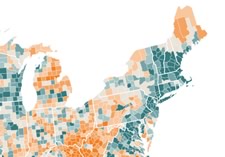 A few people sent this along: The New York Times recently published a ranking of counties based on the "hardest" places to live (there's an interactive map there). It was connected to an article about a county in Kentucky, "which by several measures is the hardest place in America to live."
A few people sent this along: The New York Times recently published a ranking of counties based on the "hardest" places to live (there's an interactive map there). It was connected to an article about a county in Kentucky, "which by several measures is the hardest place in America to live."
The Capital Region core fares relatively well, which is to say the were ranked closer to the "doing better" end of the spectrum as opposed to the "doing worse" end. All four counties were ranked in roughly the top quarter of all counties nationwide. Saratoga County did especially well, landing within the top 5 percent.
The casino wheel keeps spinning

Can you picture a casino here?
The death of the E23 casino proposal in Albany probably shouldn't be a shock.
The lack of specifics. The delay in officially announcing an operator. The canceled presentations. When you run the series of events, a dead end isn't exactly a surprise twist.
A few thoughts now that the developers behind the E23 project have spurned Albany in favor of the DeLaet's Landing site on the Rensselaer riverfront.
The Capital Region's biggest employers are...

Can you guess? (This photo isn't really making it hard.)
Something we came across while doing research for that post earlier this week about the Capital Region jobs picture: The top 10 private sector employers for the Capital Region, as counted by the state Department of Labor.
Can you guess which companies are on the list?
A view of the Capital Region jobs picture
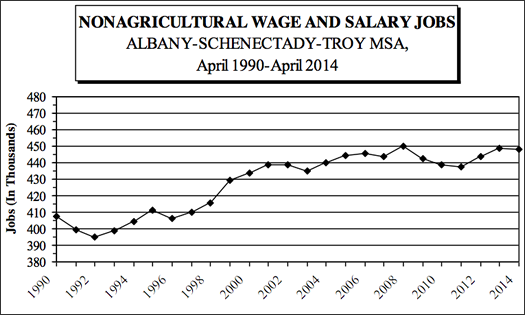
Graph via the NYS Department of Labor.
The Capital Region's unemployment rate was 4.8 percent in April, the state Department of Labor reported this week. That's down from 6.3 percent in April 2013. (The state's overall unemployment rate was 6.1 percent.)
Hooray, right?
Well, sort of. If you look at the numbers you'll also notice that the number of jobs in the Capital Region is also down so far this year.
So, what's going on?
How the Albany metro area ranks for pedestrian deaths -- and ways it could be safer
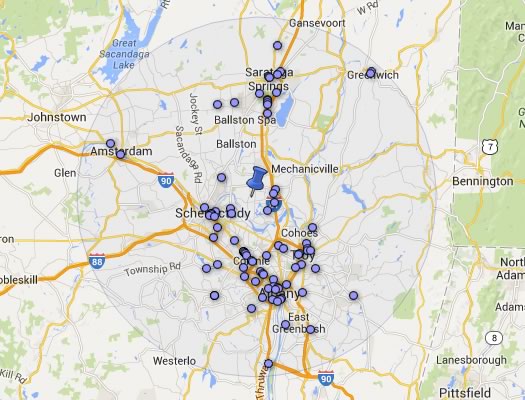
A clip from an interactive map posted as part of the report. You can pick a point and the map will report nearby pedestrian deaths over a given time period.
There were 88 pedestrian deaths in the Albany metro area between 2003-2012, according to a recent report from the org Smart Growth America. The Albany metro area's rate of pedestrian deaths per 100,000 people was 1.06, which ranked in the lower middle of metro areas in New York State.
A handful of bits from the report -- which details some of factors in pedestrian deaths, and calls for changes in how roads are designed -- are after the jump.
How people get to work in the Capital Region

The way to get to work? Not for many, but it is for some people.
This Friday, May 16 is Bike to Work Day, which seemed like a good excuse to take a look at how people get to work in the Capital Region. And, thanks to the Census Bureau, there are some numbers that can give us some sense of that.
So, let's have a look -- at how people get to work, how long it takes them, and when they leave...
The minimum wage and "the housing wage"
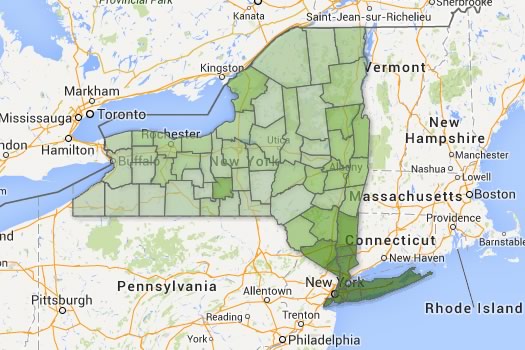
The deeper the green, the higher required hourly wage to afford a 2BR apartment. (Don't squint, there's a bigger, clickable map after the jump.)
Later on AOA: Here's an updated look at New York's planned minimum wage increases and the housing wage. [2016 April]
____
The issue of the minimum wage -- and whether it should be raised -- has been been circulating recently, both here in New York State and nationally.
The Empire State minimum wage increased to $8/hour at the beginning of this year, and it's set to increase to $9/hr by the end of 2015. On the national level, the Obama administration has been pushing for the minimum wage to increase to $10.10.
One of the complications in talking about the minimum wage is that just tossing around the number lacks context for what that amount of money is actually worth, especially when it comes to necessities such as housing. Example: What sort of rent could you afford is you were making minimum wage?
But a recently released report tried add just that sort of context by looking at how the minimum wage in New York -- and every other state -- stacks up against what it costs to rent an apartment.
So, let's have a look at New York State and the Capital Region...
A few bits about the shifting place of the Catholic church in the Capital Region

The Cathedral of the Immaculate Conception, viewed from the Corning Tower.
On Thursday the Albany Roman Catholic Diocese is got a new bishop -- Edward Scharfenberger -- and it's being treated as a Big Story by the local media. Example: The Times Union was running a special "Bishop Installation" box above all the other news items on the front page of its website.
Why so much attention? Well, probably because the Catholic church has been a prominent part of the fabric of this area over the last century, and a lot of people here are Catholic. The Albany area, like many parts of the Northeast, was the destination for many immigrants from traditionally Catholic countries in Europe such as Ireland and Italy. And you can still see the effects today: There are Catholic church buildings all around cities in the area, and the Cathedral of the Immaculate Conception is a part of the Albany skyline.
But the last decade has also seen significant change in the Catholic church's local presence. The 14-county diocese recently went through a multi-year process to consolidate and close 33 worship sites (about 20 percent of its total). In Troy alone, six churches were closed.
So we were curious about the local Catholic population now fits into the whole picture for this area. A few facts and bits...
The Capital Region's "most Irish" cities and towns
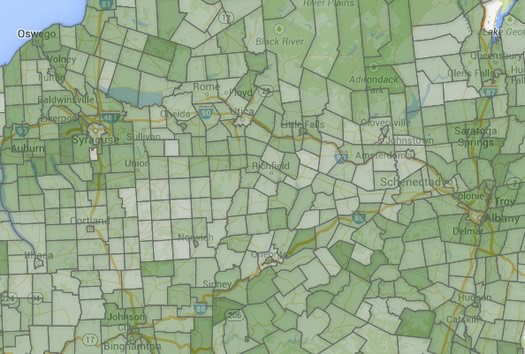
Lots of green.
Today is St. Patrick's Day, both a Catholic religious holiday and a holiday for people celebrating their Irish heritage. (Or, you know, just celebrating a good excuse to get together with friends.)
As it happens, this part of the country -- both the Northeast and Upstate New York -- have some of the highest percentages in the US of people claiming Irish ancestry. This Trulia map from last year, which maps by county, illustrates that well. So we though it'd be fun to map New York State cities and towns by percent of people claiming Irish heritage, based on Census data.
Maps, and a chart or two, a few facts for conversation over corned beef and cabbage...
Good local postcards?

An old-school Albany postcard.
Wesley emails:
I moved here recently for school and was wondering where I could find cheap Albany postcards for the people back home. Thanks in advance!
We'll adjust Wesley's question a bit to cover any sort of local postcard. Less expensive is better, but we're curious about finding good postcards for this area in general. (And let's hope even the good once aren't all that expensive.)
It's been a while since we've browsed a rack of Albany postcards, but we don't remember many as being kind of cool or interesting. Maybe things have changed. Or maybe this is an opportunity for someone to make some good cards.
So... got a suggestion for Wesley? Please share!
Earlier on AOA:
+ Albany Postcard Project
+ Postcards from the past: Albany
+ Postcards from the past: Troy
image: Boston Public Library collection (cc)
New to the area, how to meet people and find activities?
 Brian emails:
Brian emails:
I recently moved to Albany from Manhattan and I am looking to get involved in the area and meet new people. Do you have any suggestions on local groups, leagues, clubs, events, etc? I am open to almost anything - sports (softball, dodgeball..), classes (cooking, painting, sewing, music..), outdoor (running, fishing, hiking...), bar leagues (corn hole, darts..), art shows, wine/food events, etc. Is there a good resource that aggregates info on this (other than AOA of course)?
We suspect moving here from a really big metro area -- especially one like NYC or San Francisco or Seattle -- takes a bit of an adjustment in terms of finding the sort of stuff Brian's looking for. Sure, there's a smaller number of total options and the range is maybe not as wide. But there is plenty of stuff to do around here -- it's just that, unlike one of those big metros, you maybe have to put a bit more effort into finding them.
It sounds like Brian's looking for some specific suggestions, and if you have some, great. But we're also curious about more general strategies you might have. Maybe you can share a little bit about your own experiences finding your niche or crowd here. It could be a big help to Brian and other people who move here. Please share!
photo: Andy Kainz Photography
Capital Region misspellings and mix-ups
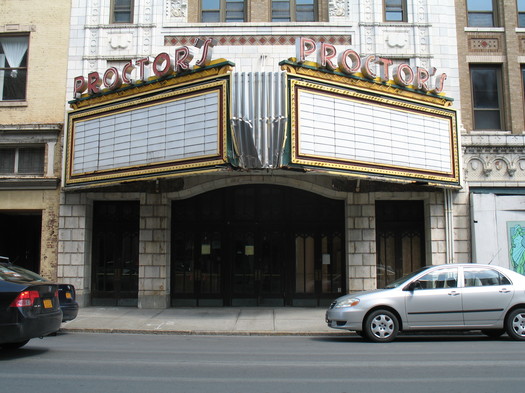
This Proctor's is not Proctors.
The news today that the Rensselaer County Regional Chamber of Commerce is moving into office space in the building that includes the long-vacant Proctor's Theater in downtown Troy got us thinking about places, names, things that often get misspelled or mixed up in the Capital Region.
You know, like how Proctors (no apostrophe) is the place in Schenectady, but the theater in Troy is Proctor's (with an apostrophe).
So we put together a list, and asked people on Twitter and Facebook for suggestions. Here's what we came up with. And there are no doubt a bunch more, so if you have some mind, please suggest them in the comments.
Where people moved to/from when moving from/to the Capital Region

A clip from a "heat map" of where people from the Capital Region moved, according to Census Bureau estimates recently released.
Updated with better maps.
You know how people often talk about moving from the Capital Region to someplace warm? Well, according to recently released Census Bureau estimates about migration flows, the most popular state to move to from the Capital Region is Florida.
But Florida is also one of the states people most frequently move from to the Capital Region, too.
That, and whole bunch of other bits we turned up while going through the numbers this week, after the jump.
And you know there are charts and maps. Of course.
An attempt to hail Uber for the Albany area

Screenshots from the Uber mobile app.
Whenever the subject of Capital Region taxi services comes up, there are almost inevitably a number of complaints. The dissatisfaction seems to stem from people being a) unhappy with the reliability of service or b) unclear about the vague pricing system or c) both "a" and "b."
But maybe there's a why shake things up for the better. Two of the area's prominent entrepreneurs -- Matt Baumgartner and Vic Christopher -- have started a campaign to attract the service Uber to the Albany metro area. Uber and its fleets of drivers allow riders to order, track, pay, and rate car service by mobile app.
Christopher, the owner of The Confectionery and The Grocery in Troy, told us today that he was "blown away by the genius of this concept" after he and his wife, Heather, had recently tried Uber while traveling through cities out west, including Denver, LA, San Diego, and San Francisco.
"We discovered it while out in Denver, at Ace, a ping-pong noodle bar," Christopher said via email. "It was recommended by our bartender. We downloaded the app, signed up, and hailed our first cab within 3 minutes. ... We used this service many times during our trip, and found the drivers to be professional and personable, 100% of the time. The drivers I met were all thrilled with the program, as they are now working for themselves, opposed to a taxi company. They seem to all share a sense of pride in being their own boss."
Back here in the Capital Region, Christopher said he ran into Baumgartner and found out they shared an appreciation for the service. Explained Baumgartner: "Vic and I started this conversation because I was in Troy and called a cab company to pick me up because there were no cabs available on the street. I waited for 25 minutes, and when the cab showed up, there were 3 people in the back seat. There needs to be a better option than that."
So they decided to reach out to the company together, and start a social media campaign to raise awareness and rally support.
Best Capital Region small town, village, or suburb for settling down?
 Amelia emails:
Amelia emails:
We are looking at starting the home search and wanted input from AOA. Where is the best small towns, villages and quaint and charming suburbs in the capital region to settle down and start a family? We are looking at staying approximately 20 minutes around Albany and want a more liberal town with low taxes. Is there such a thing?
Having a detailed wish list is a good idea, but the thing about picking a place to live is that you'll almost always end up having to make trade-offs. Want charming? That often means paying more. Want small? Maybe that means living farther out. And so on.
We've come to think that having a wish list is a good way of prioritizing what you want -- and what you're willing to compromise on. Because there will be compromises.
So... got a suggestion for Amelia? Please share! Non-redeemable bonus points for a short explanation for your suggestions. And even if you don't have a specific place in mind, suggestions on how to go about figuring out the right place can be helpful.
Capital Region median home prices 2013

Capital Region median home sale price 2013-2005.
The Capital Region housing market approached its pre-recession level in 2013, according to data out today from the Greater Capital Association of Realtors.
The median price for homes sold in the Capital Region was $195,000 in 2013, up more than 1.5 percent compared to the year before according to GCAR's numbers. And it's the first time the median sale price has risen above the pre-recession crest of $193,000 in 2007.*
The local market also posted 9221 closed sales in 2013, up almost 12 percent from the total in 2012. GCAR says 2013's total was the highest since 2007.
Another sign of a rising tide in the housing market: The average number of days it took to sell a house was 90 in 2013, the lowest number since 2008, according to GCAR. (That figure was 98 days in 2012, and 102 in 2011.)
(* That's not accounting for inflation. Depending on how you account for inflation, the price would have had to be around $216,000 to equal the 2007 mark.)
A more detailed look at the numbers is after the jump.
Capital Region casino site odds

Spin the wheel!
The other day we joked on Twitter that someone had to be taking bets on the location of the possible Capital Region casino. And Erik was all like, "I'm pretty sure that's your job."
Well, then. Step right up! Let's throw out some odds...
Focusing on support for a possible Capital Region casino, town by town

Don't squint, and don't scratch your head -- it'll make sense when you see the bigger versions.
The Capital Region is in line to get a casino as part of the vote to allow full casino gambling last fall (as you know). And based on comments made by Andrew Cuomo in last week's State of the State address, the selection of the casino site is scheduled to happen sometime during the six months or so.
As the selection process picks up, the discussion around it is focusing in part not just on where a casino might be viable, but also which municipalities do -- or don't -- want one of the gambling facilities. Examples: The vocal opposition in Saratoga Springs to a full casino, despite conventional wisdom that the Spa City would be a leading potential site; or, conversely, the mayor of Rensselaer's lobbying for his city to be in the running.
The casino selection process doesn't include local approval. Even so, we thought it'd be interesting to get a better feel for how cities and towns in the Capital Region might be leaning on the issue based on how residents voted last November on the state constitutional amendment that allowed casinos.
So we pulled the vote totals on the ballot question for the Capital Region by town, mapped 'em, and also put together some "tree maps" (kind of like square pie charts) to get a sense of how a city or town's support or opposition fits into the whole.
That's a long way of saying: look at these maps and charts...
Household income and poverty rates in New York State -- and how Saratoga is different from the rest of the Capital Region
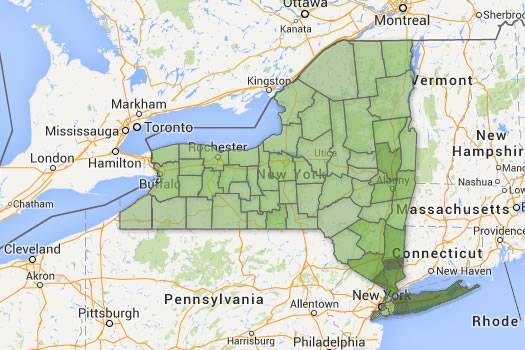
Estimated household income by county. Don't squint -- there are better maps after the jump.
Map(s) of the day: New York State counties by median household income and percent of people living in poverty.
The Census Bureau released new income and poverty estimates -- for the year 2012 -- this month. So we put together maps of New York State based on the data.
Three large-format, clickable maps are post jump -- along with a few observations.
Almost $83 million for Capital Region economic development projects (with a map)

Capital Region, come on down, you just won almost $83 million in pork!
Updated with a map of Capital Region awards, along with an easy-scan table.
The Capital Region scored $82.8 million in funding for projects in the third round of the Cuomo administration's Regional Economic Development Council initiative. A list of the Capital Region projects funded is embedded after the jump.
It was the second-highest total among the state's regions, behind only Long Island's $83 million. And the Capital Region was tabbed as "top performer," meaning it and the other likewise labeled regions got about $20 million more than the, uh, not-top performers. It was a bit of a turn around for the Capital Region's Economic Development Council, which had previously -- what would be Cuomomian word here -- underperformed in the previous two funding rounds. This time the Capital Region's effort was headed up by Albany Med CEO James Barba and UAlbany president Robert Jones.
A few projects that caught our eye as we scanned through the list the first time...
Survey: Albany the most "post-Christian" city in a national ranking
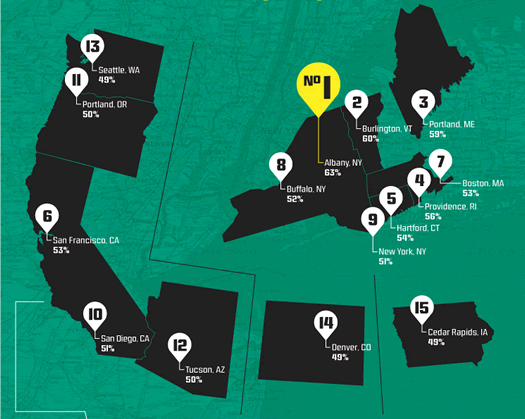
The top 15, according to Barna. Here's the full Barna infographic.
We don't necessarily put a lot of faith in these sorts of city rankings, but for what it's worth: Albany tops the chart as the most "post-Christian" city in a national ranking, according to survey analysis by the Barna Group. The research company bills itself as "a leading research organization focused on the intersection of faith and culture."
According to the survey, the Albany area headed the national chart with 63 percent of people tagged as "post-Christian." It appears the rankings were released this past April.
So what do they mean by "post-Christian." From a Barna explainer about its use of the term:
To shed light on this, the Barna team created an aggregate metric of post-Christian culture based upon 15 different measures of identity, belief and behavior. To qualify as post-Christian, individuals met 60% or more of the factors (nine or more out of 15 criteria). Highly post-Christian individuals met 80% or more of the factors (12 or more of these 15 criteria).
The 15 different measures range from "do not believe in God" to "have not donated money to a church (in the last year)" to "do not participate in a house church (in the last year)." You can see the full list at the first and third links above.
A few local facts for Veterans Day

A photo from Albany's Veterans Day parade on Monday, courtesy of Anna J. (Thanks, Anna!)
Fact of the day: The Albany metro has more than 57,000 residents who are military veterans, according to 2012 Census Bureau estimates. That's about 8.3 percent of the metro's area's population of civilian adults.
A few more bits for Veterans Day:
+ Roughly 30 percent of veterans in the Albany metro area served during the Vietnam war -- making up the largest period of service.
+ The two most populous age groups for local veterans: 75 years and over (27.5 percent of local vets) and 35-54 (24.6 percent). Though 65-74 years old is close behind at 23.3 percent (and within the margin of error) -- in fact, about half of the Albany metro's veterans are 65 or older.
+ More than 5 percent of local veterans are estimated to be women.
+ And among the Capital Region's four core counties, Albany County has the most number of veterans (17,875) -- but its total is the smallest by percent of population (7.2 percent). Saratoga County has the highest percentage, at 9.6 percent.
A few charts illustrating these numbers are after the jump.
Checking out the Troy crime map
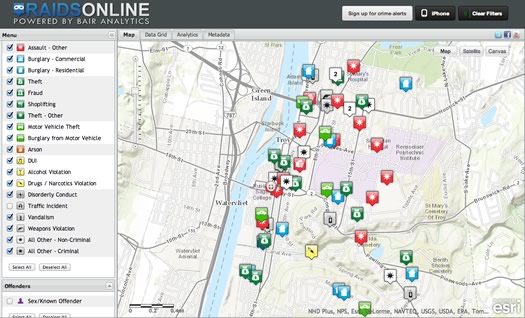
A screengrab from this afternoon.
The Troy Police Department unveiled a new online crime map for the public today. From the press release:
With the exception of crimes related to domestic incidents and sexual assaults, all reported crime in our city will be mapped with a built in 72 hour posting delay. The delay is designed to give Investigators a "first look" at an incident and apply any limitations they see fit specifically relevant to their investigation. Once mapped, the information remains embedded in the mapping, subject to numerous choices the user can make; eg. date range, type of crime, etc. Previously noted exceptions to the mapping will always be subject to inclusion should a public safety need to post the incident be evident.
This is a good step, as we've said a bunch of times before, it'd be great to see other local municipalities head in this direction.
A few more quick thoughts:
Everyone on a map, dot by dot

Albany, Schenectady, and Troy
Worth a look: This "dot map" of the United States -- it plots everyone in the country, color-coded by race and ethnicity, one dot per person, based on 2010 Census data. It was created by Dustin Cable, a researcher and statistician at the Weldon Cooper Center for Public Service at the University of Virginia.
From the explainer for the map:
This map is an American snapshot; it provides an accessible visualization of geographic distribution, population density, and racial diversity of the American people in every neighborhood in the entire country. The map displays 308,745,538 dots, one for each person residing in the United States at the location they were counted during the 2010 Census. Each dot is color-coded by the individual's race and ethnicity. The map is presented in both black and white and full color versions. In the color version, each dot is color-coded by race.
We pulled a few screen grabs from the Capital Region. They're after the jump, along with map we created last year that depicts local neighborhoods by a diversity score.
A shift in the job market?
Check out the Capital Region's unemployment rate over the first half of this year, in the table above. (The state Department of Labor released June's numbers this week.)
The state's numbers for metro areas are not seasonally adjusted, so the best comparison for a month is the same month the year before (or before that and so on). After a small increase in January, each month since has registered a bigger decline from its counterpart the year before
Six months isn't necessarily a lot of a time, but it looks like an encouraging trend. And maybe it is. Another way of looking at the situation is to count how many people are employed, as opposed to unemployed.* We've put together those numbers for the Capital Region over the same period in a table after the jump. The picture from that angle is not quite as bright, though June did register a nice increase.
One (another) thing that would be interesting to know: How the pay of these new jobs compares to that of the jobs people previously had.
Saratoga County: It tied Tompkins County (Ithaca) for lowest unemployment rate in the state in June, at 5.7 percent.
New York State: The state's unemployment rate was 7.5 percent in June, the lowest mark since February 2009. It was down from 7.6 in May, and 8.7 in June 2012. (Statewide rates are seasonally adjusted.) The state added 93,800 non-farm jobs between June 2012 and June 2013, an increase of 1.1 percent.
The not-so-fast lane
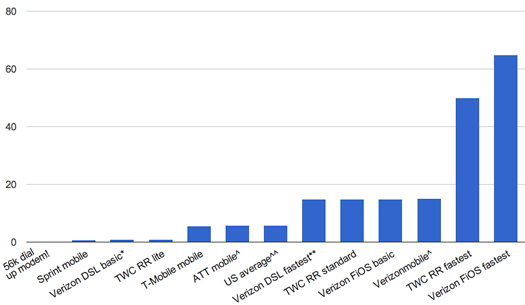
Download speeds in megabits per second. There are a bunch of notes for this graph (below).
An article by Larry Rulison in the TU this past weekend highlighted an irony about "Tech Valley" -- residential internet connection speeds here are, uh, not so fast.
To put things in some perspective on the topic, we put together two graphs. The first is above -- it lists the top download speeds available through residential internet access service in this area.
Probably the most-envied internet hook-up across the country right now is Google Fiber, which the company first started in Kanas City (remember the contest?), and has since spread to Provo, Utah, and soon Austin. It offers connection speeds of up to 1 gigabit, both download and upload. The technical term for that is really &@##$%%^ fast.
So we put together a second graph to compare local speeds to Google Fiber, as well as a few other comparisons.
Why does this matter? Well, of all the problems in the world to have, this ranks relatively low on the list. But people always seem to find a way to fill up available bandwidth. One simple example: Netflix streaming -- that wouldn't be possible in dial-up world.
Charting the Capital Region's workday population tide
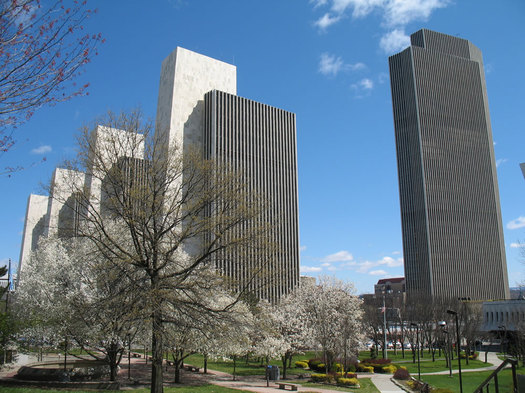
That is a lot of office space...
Most of the time when we talk about "population" it's in reference to how many people live in a place. But that doesn't necessarily give the best sense of how many people frequent that city/town/village.
For example: the city of Albany's population on weekdays increases almost 67 percent during weekdays, according to Census Bureau estimates.
So, to get a better sense of how the population "tide" drifts around the Capital Region on a weekday, we thought it'd be interesting to pull daytime population numbers for cities, towns, and villages around the Capital Region -- and then rank and map them.
Capital Region's unemployment rate down a full percentage point compared to a year ago
 Following up on last week's bit that the state's unemployment rate hit a four-year low last month: The Albany-Schenectady-Troy metro area's unemployment rate was 6.4 percent in May, the state Department of Labor reported Tuesday. That's down from 7.4 percent in May 2012.*
Following up on last week's bit that the state's unemployment rate hit a four-year low last month: The Albany-Schenectady-Troy metro area's unemployment rate was 6.4 percent in May, the state Department of Labor reported Tuesday. That's down from 7.4 percent in May 2012.*
The state's unemployment rate was 7.6 percent in May.**
The unemployment rates in each of the metro's counties were down almost a full percentage point -- or more:
county: May 2013 / May 2012
Albany: 6.3 / 7.3
Rensselaer: 6.5 / 7.7
Saratoga: 5.8 / 7.0
Schenctady: 7.0 / 7.9
Schoharie: 8.0 / 8.6
As if often mentioned, the unemployment rate includes people who are actively looking for a job. So it doesn't necessarily provide a picture of how many people have become frustrated and stopped looking, chosen a different path because employment prospects aren't good (examples: going to school, staying home with a kid), are under-employed -- or some combination of all the above.
Lowest rate: The county with the lowest unemployment rate in May was Tompkins County, which includes Ithaca, at 5.1 percent. Coincidentally, it was also named the "smartest" city in the nation recently by a company that does online brain training games. [Syracuse.com via Gannett Albany Watch]
Meahwhile: 70 percent of American employees are not "engaged" at work, according to a Gallup report. [CBS News via TMN]
* Unemployment rates for counties are not seasonally adjusted, so the best comparison is the same month in previous years.
** State rate is seasonally adjusted.
Capital Region high school graduation rates 2012
 The state Department of Education released its annual collection of data about high school graduation rates around the state on Monday. The statewide graduation rate for the 2008 cohort of students was 74 percent, the same as the year before. (That counts kids who finished up by June 2012. The rate was almost 77 percent if students finished by August 2012 are included). And as NYSED notes, this was the first cohort in which the "local diploma" option was not available to general education students, requiring them to graduate with a more rigorous Regents diploma.
The state Department of Education released its annual collection of data about high school graduation rates around the state on Monday. The statewide graduation rate for the 2008 cohort of students was 74 percent, the same as the year before. (That counts kids who finished up by June 2012. The rate was almost 77 percent if students finished by August 2012 are included). And as NYSED notes, this was the first cohort in which the "local diploma" option was not available to general education students, requiring them to graduate with a more rigorous Regents diploma.
We pulled out the stats from Capital Region school districts. As in years past, there continues to be a sobering gap in graduation rates among some school districts and groups of students.
Sorted stats (including notes and qualifications) after the jump.
What do you mean you say it like that?
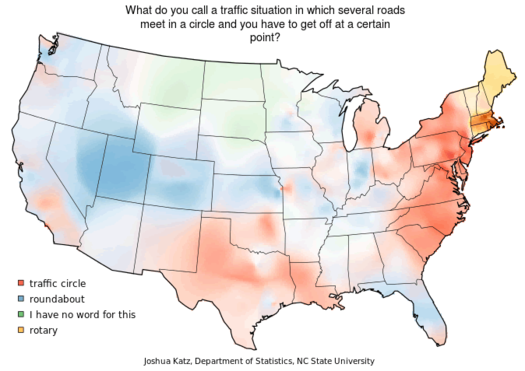
If you're even just a casual word nerd probably know that the soda/pop line runs right through New York State. The fact that we share the state with the poppers in western New York is some sort sign that we can work anything out.
Anyway, a bunch of interactive national dialect maps (based on survey data) created by Joshua Katz at NC State have been circulating online this week -- and they highlight some of the dialect divisions that run through and near the Capital Region. A few examples:
Been
The Canadian way of pronouncing "been" -- saying it like "set" -- has made a deep incursion into central New York. And the Capital Region holding it off from invading the East Coast: 50 percent of people here reported pronouncing been as in "sit" -- but almost 42 percent say it like "set."
Crayon
We're just being pulled apart by the word crayon. About 56 percent pronounce it "cray-ahn," 22 percent as "cray-awn" (as in dawn), and another 22 percent as "cran" (one syllable).
Traffic circles
About 47 percent of people reported calling traffic circles traffic circles -- but the New England-y "rotary" looms across the Hudson, and 33 percent reported using it. (And 13 percent said roundabout.)
Pajamas
Though a majority of people reported pronouncing the second syllable pajamas as in "jam," Capital Region is being squeezed by pronunciation as in "father," from the both the northeast east and southeast.
Cauliflower
We're split almost right down the middle on cauliflower -- half pronouncing the second syllable as in "sit," the other half as in "see" (common nationally only along the northeast coast).
Craig
Basically no one can agree on how to say that name.
There are bunch of other words and phrases you can explore on the map. It's some nerdy fun.
Update: There's also an aggregate map showing how similar/different Albany is to other parts of the country. (Thanks, Craig!)
Earlier on AOA:
+ An Albany dialect?
+ New York State food regions map
An IKEA? Here? Well...
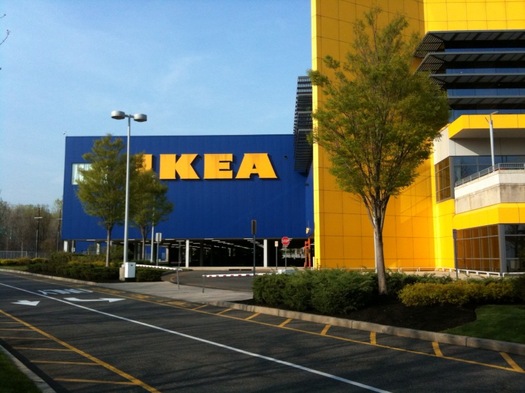
The IKEA in Paramus, New Jersey.
When talking about development in the Capital Region -- or just something people want -- it's not uncommon to hear: "Hey, it'd be great to get an IKEA." The topic came up during the (Re)Imagining Troy project, and we've heard elected officials bring it up in the past.
It's easy to understand the desire. IKEA is a huge international brand. It offers modern(ish) furniture and other housewares at cheap prices. The stores employ a lot of people. It'd be a big development piece in a place like North Albany or Menands. And getting an IKEA is a bit of a status symbol.
But: It's not going to happen in the Capital Region. Here's why.
Watching for cicadas

An adult periodical cicada. The red eyes really make the look.
Perhaps arriving soon: the periodical cicada. A "brood" of the fantastically weird insects -- that climb from the ground every 17 years to molt, sing, mate, lay their eggs, and die -- are emerging along the East Coast this month. And we could see some of them in the Capital Region.
This particular cohort of cicadas -- Brood II, or "The East Coast Brood" -- last emerged in 1996. In previous appearances, its range has stretched from North Carolina to northern New York.
Quintessential Albany items?
 Samantha messages:
Samantha messages:
Hi, I've only lived in the Albany area for a couple of years, so I'm not too familiar as to what screams "Albany"! But I need to know!
See, my husband (retired Army), myself and our daughter were based out of Ft. Hood TX, back in '07. While there, my husband and many others deployed. I was fortunate to have a small support group of other medic wives. Among them was a girl named Jay. Jay has a son named Max who is about the same age as my daughter (they were 3 back then). We spent 15 months supporting each other while our husbands were gone. Really she supported me, she was, and definitely is the strongest woman I've ever known.
This is why she is so strong.
It is also why I need to know what amazing Albany swag consists of?
Any suggestion would be greatly appreciated!
Here's the short story from that link: Samantha's friend's son, Max, has a brain tumor. He'd like to visit France, but as you might understand, that's difficult considering the circumstances. So friends of the family are trying to bring Max the world via mail -- postcards and other items.
So Samantha's looking for some fun and very-Albany items she could send Max.
Got a suggestion? Please share!
Albany is average. Really?
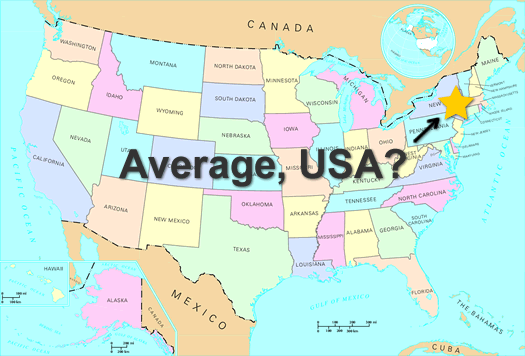
We saw today this assertion that the Albany metro is the "most average city in America." And our first thought was: "Really?"
That claim is based on market research on how metros compare/contrast to the whole United States "on age, marital status, home ownership and estimated income." And Albany was at the top of the list.
But. Those rankings are from... 2004 -- which is like a whole other decade (actually, it is a whole other decade). Considering how much the United States has change demographically during the last 10 years or so, we kind of doubted that Albany could still hold the claim to being unusually average (an odd claim).
Here's the thing, though: We're not going to run the numbers for every metro in the country (yes, we're missing out on quality time with spreadsheets). But we did run them to see how the Albany of now compares to the rest of the United States of now. You can make your own judgement about whether it's a good representative for the whole.
Tech Valley Center of Gravity
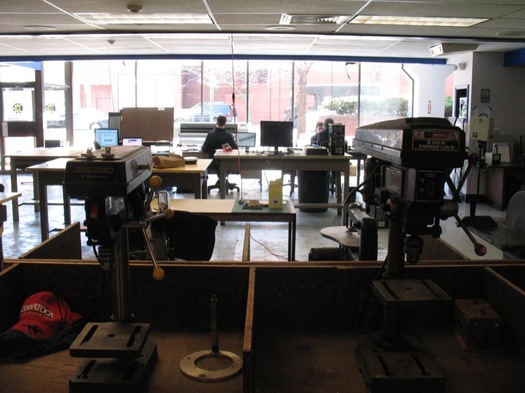
At the corner of 4th and Fulton in downtown Troy, in what was formerly an OTB space on the ground floor of a parking garage, is now a workshop with metal and wood working machinery, racks of tools and parts, 3-D scanners and printers, and biotech equipment.
The new Tech Valley Center of Gravity is a makerspace -- a place for hackers, crafters, artists, geeks to build stuff, take things apart, hack new things to together, and to learn from each other.
But organizers see it as part of something even bigger.
A slight case of congestion

Congestion patterns by day in the Albany metro, according to INRIX.
We've said this before, and we'll say it again: The Capital Region doesn't have traffic.
OK, sure, it has traffic. It has cars that go on roads and sometimes they have to slow down. Sometimes -- gasp! -- they even stop. But compared to most other larger metropolitan areas -- what passes for traffic here is nothing.
The annual INRIX Traffic Scorecard continues to provide evidence on this account. The congestion monitoring company's latest annual report, for the year ending in March, is out this week.
The Albany metro's national rank: #74.
INRIX figures traffic and congestion in this area caused a typical commuter to "waste" 3.6 hours over the course of the year. That's roughly 29 seconds per commuting trip.
That's down a bit from the previous year, in which INRIX figured the average commuter was caught for 4.6 hours.
To put this in some perspective, here are the figures for the top 5 most congested metros in the INRIX rankings (metro - hours per year):
1. Los Angeles - 60.3 hours
2. Honolulu - 51.1 hours
3. San Francisco - 49.7 hours
4. Austin - 38.7 hours
5. New York - 51.5 hours
Stick that in your breakfast taco, Austin.
Obviously, those metros are larger, so it's natural they'd be more congested. And Albany would probably be willing to trade some increases in congestion for some of the stuff those places have. But, hey, we'll think about that while we're relaxing at home after a short commute home.
Here's an explainer on the methodology.
Bonus commuting fact: The average commute time in the Albany metro area was 22.2 minutes in 2010, according to Census Bureau estimates. That was less than the national average (25.4). And it ranked 276th in the nation.
graph: INRIX
Capital Region's most popular baby names

Updated
Because we were thinking about birthdays this week, we thought it'd be fun to look at Capital Region baby names. (A name is one of the first birth day presents you ever get.)
So we pulled together the numbers for the past handful of years for the four core counties of the Capital Region.
And away we go...
Riding the trolley -- everywhere

Madison Ave in Albany sometime during the 1940s. Courtesy of The College of Saint Rose Archives.
There's something about trolleys that lights people up -- even though a lot of people weren't even alive the last time a trolley rolled through Albany. It's been almost 70 years since the lines stopped.
We were thinking about trolleys again this week after seeing this photo from the College of St. Rose Archives. It's Madison Ave at Partridge, facing west, sometime in the 1940s, right about the time the trolleys stopped. We love the way the tracks lead away covered by the canopy of trees.
That photo prompted us to dig through some of the history of trolleys in Albany -- which is like looking through some alternate transit universe.
Albany metro among "least religious"
 The Albany metro is among the "least religious" metros in the nation, according to a recent Gallup poll. Twenty-six percent of people were categorized as "very religious" based on their answers to a phone survey -- the national average was 40 percent.
The Albany metro is among the "least religious" metros in the nation, according to a recent Gallup poll. Twenty-six percent of people were categorized as "very religious" based on their answers to a phone survey -- the national average was 40 percent.
Gallup tagged people as "very religious" if they said "religion is an important part of their daily life and that they attend religious services every week or almost every week."
The most religious metro in the nation in the poll was Provo-Orem, Utah -- at 77 percent. Burlington, Vermont was least religious, at 17 percent. From Gallup's write up of the poll:
Relatively few metro areas match the national religiousness average, instead reflecting substantial diversity, with a 60-percentage-point range between the most and least religious cities. This generally mirrors the variation in the average religiousness among the states of the union. Mississippi is the most religious state (58% very religious), while Utah is tied with Alabama in second place. Vermont (19% very religious) is the least religious state.
The Record's Danielle Sanzone talked with a few local religious officials about the results of poll -- it sounds like they weren't surprised.
Earlier on AOA: Report: New York the "least free" state
The Albany area more than a little Irish

Post-St. Patrick's Day fact of the day: the Albany metro area ranks #4 among the nation's 100 largest metros for percent of population that's Irish, according to an analysis by the real estate info site Trulia. It found that 15.6 percent of the people in this metro area reported being of "primary" Irish ancestry.
Trulia also has an interactive version of the national map above. The top metro was, not surprisingly, Boston -- followed by two areas nearby in Massachusetts. Syracuse ranked #5.
The analysis used data from the Census Bureau's American Community Survey.
map: Trulia
(Thanks, Aaron)
Well, Albany metro area
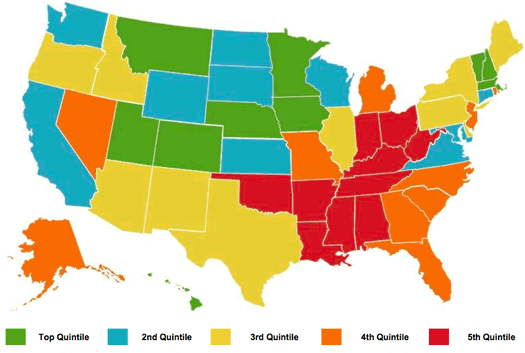
New York's didn't fare too well in these rankings. But it's not West Virginia.
The Albany-Schenectady-Troy metro area ranked #58 nationally in the annual Gallup-Healthways "Well-Being Index" for 2012 (out of 189 metros). That's a big jump from 2011, when it ranked 101. And it was the top score in the state (take that, Rochester).
The report surveys people across the country, asking them questions in six categories: life evaluation (current and the in the future), emotional health (happiness, sadness, worry), physical health, healthy behavior, work environment, and basic access to things like healthcare and healthy food.
The Albany metro's rise in the rankings appears to be attributable to big jumps in two categories: life evaluation (67 from 117) and work environment (74 from 128).
This metro's lowest ranked category was emotional health (#138), as it was in 2011 (#151). The emotional health category is based on questions about topics that include: smiling or laughter, being treated with respect, enjoyment, happiness, worry, sadness, anger, stress, learning or doing something interesting, depression.
The index also ranks states -- New York was #30. And two of its metros were near the very bottom of the rankings: Binghamton (176) and Utica-Rome (179).
The top ranked state in 2012 was Hawaii -- for the fourth straight year. West Virginia was last.
The top ranked metros, by size category: Washington-Arlington-Alexandria, DC-VA-MD-WV (large), Lincoln, NE (mid-size), Burlington-South Burlington, VT (small).
The report for New York State is post jump.
Another look at Capital Region income distribution
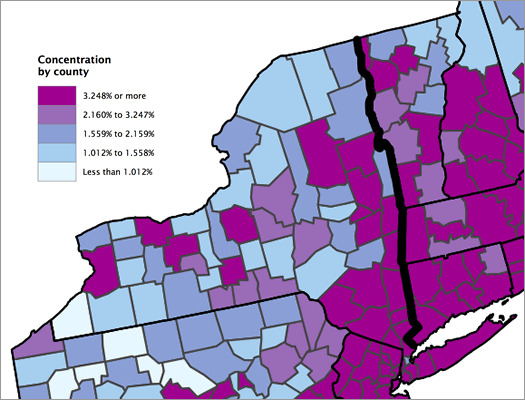
Clipped from a Census Bureau map of the concentration of high-income households by county.
Updated
The Census Bureau released a breakdown of high-income households this week. It defined "high income" as households with income in the top 5 percent of the nation -- $191,469 and higher.
The report only ranked the top-50 largest metro areas (by population), so the Albany metro didn't get its percentage of high-income households listed. But the Washington Post has the county-by-county data, along with an interactive map -- five percent of households in Albany and Saratoga counties are in the high-income category, four percent in Schenectady County, and three percent in Rensselaer County. (WP has more info.)
And by the way: the lower limit for the top five percent of households by income in the Albany metro area is $184,514.
Anyway, we thought this would be a good time to look at income distribution in this area again. We did that in 2011, and there's some updated data now. And we've also pulled together some other numbers that we hope will provide a bit more context.
And, yep, if you just want to see where your household ranks -- there's a quick chart to do that, too...
Capital Region median home prices 2012
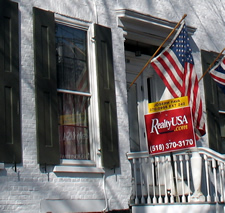 The number of homes sold in the Capital Region took a big jump in 2012 compared to the year before, according to stats out this week from the Greater Capital Region Association of Realtors. The number of closed sales across the region increased 15 percent, the first increase in years.
The number of homes sold in the Capital Region took a big jump in 2012 compared to the year before, according to stats out this week from the Greater Capital Region Association of Realtors. The number of closed sales across the region increased 15 percent, the first increase in years.
Median prices were also up, but the increase was smaller. The median price across the region was up 4 percent, to $192,000.
Here's GCAR's report for 2012. The average number of days it took for a house to sell last year was 98, down from 102 in 2011. And this past December, "inventory" -- the number of homes for sale -- hit its lowest point since 2008, as did "months of inventory."
GCAR also provides breakouts for individual counties and a group of cities/towns. We've collected those 2012 numbers in an quick-scan table post jump.
The rent is...
A few average rents by type of apartment.
The average asked rent for apartments in the Capital Region in fall 2012 was $1,248 ($0.93 per square foot) -- up more than 6.5 percent compared to same period a year before, according to the Albany-based Sunrise Management & Consulting. The average rent was up more than 10 percent compared to two years ago.
Here's the methodology. It's important to note these are asked rents, and don't take into account discounts. Also, the firm notes that the survey includes mostly large complexes (50 or more units).
[via Biz Review]
data source: Sunrise Management & Consulting Fall 2012 Multifamily Rental Market Report
Capital Region hospitals tightening visitation guidelines because of flu
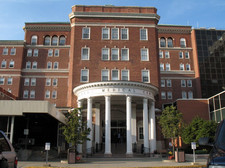 Hospitals around the region announced temporary visitation guidelines Friday because of widespread flu activity. From the joint press release:
Hospitals around the region announced temporary visitation guidelines Friday because of widespread flu activity. From the joint press release:
Patient units of Albany Medical Center; Ellis Medicine acute care hospitals including Bellevue Woman's Center and Ellis Hospital; Glens Falls Hospital; St. Peter's Health Partners acute care hospitals including Albany Memorial Hospital, Samaritan Hospital, St. Mary's Hospital (Troy), St. Peter's Hospital, and Sunnyview Rehabilitation Hospital; and Saratoga Hospital will request that visits be restricted by:
+ children 12 and under (who are more likely to have and transmit respiratory infections);
+ any visitor with respiratory symptoms (fever, sore throat, cough, shortness of breath) a rash or diarrhea; and,
+ only two visitors will be permitted in a patient's room at one time.
The hospitals are also urging all visitors to use hand-washing stations before entering and upon leaving a patient's room. Hand sanitizers are available at many hospital entrances and at many other locations throughout these hospitals, including the doorways of many patient rooms.
Full release post jump.
As if the flu wasn't bad enough this year, the dreaded norovirus also seems to be in circulation. Headline no one wants to read: "Is it the flu or norovirus? How to tell the difference". Followed closely by: "Want to avoid spewmageddon? Here's a simple guide" [Boston Globe] [Guardian]
We'll say it again: If you're sick, please stay home if possible. Please cough into your elbow. And please wash your hands.
Earlier: Someone finally sticks it to Andrew Cuomo. (It being a flu shot -- and you should think about getting one, too.)
GlobalFoundries building R&D center in Malta
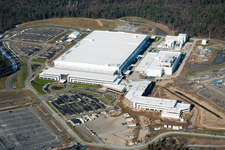 The Cuomo administration and GlobalFoundries officially announced today that GloFo will be building a $2 billion R&D center at Luther Forest. The target date for completion is late 2014. The new center is expected to prompt another 1,000 jobs at the site.
The Cuomo administration and GlobalFoundries officially announced today that GloFo will be building a $2 billion R&D center at Luther Forest. The target date for completion is late 2014. The new center is expected to prompt another 1,000 jobs at the site.
The Cuomo admin noted that "no new incentives were provided from the State" for this new project.
From a statement by GlobalFoundries CEO Ajit Manocha:
... [W]e are making significant investments in strengthening our technology leadership, including growing our workforce and adding new capabilities to make Fab 8 [that's Malta] the hub of our global technology operations. New York State's continued support of the semiconductor industry has created a strong collaborative ecosystem and helped pave the way for this additional investment. ...
The long-held hope has been that the Malta fab and the multiple investments at Albany NanoTech would push this area to become a cluster of tech-related projects, with its gravity pulling other stuff to it. Maybe that's starting to happen now. (And if that mysterious Project Azalea takes root here...)
Another small bit that points toward the tech actually being in Tech Valley: The TU's Larry Rulison noticed that Samsung has recently started trying to recruit "semiconductor talent" from the Albany area -- to go work in Austin.
photo: GlobalFoundries
The warmest year on record

Last year was the warmest year on record in this area, according to the 2012 climate summary for Albany, NY by National Weather Service. In this case, "on record" means dating back to 1820.
The average (mean) temperature for 2012 was 51.6 -- that's 3.3 higher than than "normal" average temp. In this case, "normal" is the average from 1981 to 2010.
2012's record-high temperature was the result of an unusually warm winter and spring. The 2011-2012 winter was the 8th warmest on record. And the 2012 spring was the second warmest (with the the warmest March on record).
The last year was unusually warm pretty much everywhere -- the numbers haven't been published yet, but 2012 was shaping up to be the warmest on record for the entire United States.
Warmer over the long run: The temperature trend lines for both the state and the nation are sloped upward by more than a degree over the last century. [NOAA] [NOAA]
Earlier on AOA:
+ The Karner Blue as another sign from the Year of Odd Weather
+ Hot spring
chart: National Weather Service
Musical metro
 The Albany metro area ranks #9 in the nation for musical acts per 10,000 people, according to an analysis by an academic institute at the University of Toronto that includes Richard "Creative Class" Florida and published today at Atlantic Cities.
The Albany metro area ranks #9 in the nation for musical acts per 10,000 people, according to an analysis by an academic institute at the University of Toronto that includes Richard "Creative Class" Florida and published today at Atlantic Cities.
This analysis follows up on previous work by Florida and his colleagues looking at clusters of musicians around the nation. In that earlier work, based on federal jobs and industry data, Albany ranked 14th among "centers for musicians and the music industry."
As with that previous analysis, this new work has some important caveats. The foremost: it's based on data pulled from MySpace in 2007. That's not totally a bad thing. Using that data helps get around the problem of only including people who are identified as professional musicians in the federal data. But, still... it's MySpace and it's from 2007. And, of course, such an analysis doesn't necessarily account for quality.
That said, it's not surprising that this area would rank relatively high. We have a bunch of musical acts here -- and a lot of them are good.
[via @SeanPCollins]
Earlier on AOA: Find other people who do what you do, and then push each other to get better
Not a confidence-inducing 10 years or so

Consumer sentiment, from 1999 to the present -- via SRI.
The Siena Research Institute released consumer confidence figures today for metropolitan areas around the state. SRI reports that consumer confidence was up in every metro during the 3rd quarter of this year compared to the same period last year -- though it's down a bit in many metros compared to the last quarter. The Capital Region's Q3 figure was up 13 percent compared to the same period last year -- and down about 6 percent compared to the previous quarter).
Last week, SRI released numbers for the state as whole -- and September's figure was the highest in five years. Interesting bit: there was a huge gap between Democrats (95) and Republicans (58) -- 37 points -- the largest ever measured by SRI.
In general, rising consumer confidence is a sign that people think things are getting better and are more willing to spend money. That's usually a good thing for the economy.
The decade: The thing that really caught our eye today while browsing the SRI site: the chart above, which tracks consumer sentiment for both the nation (blue) and state (red) since 1999 until the present. It's not surprising -- and things appear to be getting better -- but, oof, the chart's another illustration it's been a rough decade or so.
chart: Siena Research Institute
Find other people who do what you do, and then push each other to get better
 The Albany metro ranks 14th nationally* as a center for musicians and the music industry, according to an analysis from an institute at the University of Toronto that includes Richard "Creative Class" Florida.
The Albany metro ranks 14th nationally* as a center for musicians and the music industry, according to an analysis from an institute at the University of Toronto that includes Richard "Creative Class" Florida.
Albany's ranking is "better than expected." So, um, good for us.
We're not sure how much stock we'd put into the analysis, though. It was based on federal statistics on the concentration of musicians and music/recording industry businesses. We suspect it's a better indicator of the traditional music industry rather than the constantly evolving indie segment that makes up more and more of the music world. (Example: because of digital technology, a lot of musicians now record not in "professional" music studios, but you know, wherever they can.) Also: the study didn't measure "the vibrancy or impact or quality of artists to emerge from a regional scene." (We also don't draw confidence that further study will be based on data from... MySpace.)
But this part, from Richard Florida's write up of the study in Atlantic Cities, did ring mostly true:
But size is not everything, as Nashville's dominance and the performance of other smaller metros show. Smaller places can develop significant clusters of musicians and the music industry. The key here, as it is in so many other fields, is the clustering of talent, as talented musicians are drawn to and cluster around other talented musicians. Doing so, they generate a human capital externality of a musical kind -- competing against each other for new sounds and audiences, combining and recombining with each other into new bands -- a Darwinian process out of which successful acts rise to the top and achieve broad success.
We'd argue it doesn't necessarily have to be some sort of Darwinian competition, though. An example from here: the B3nson collective has supported and promoted each other while sharing talent among its many connected acts. And an event like Rest Fest -- which helps focus attention on what's going on here -- then grows out of all that interconnection.
That's probably true of other industries/scenes, too -- whether it's food or tech or whatever. The trick is to get those clusters started and growing.
*That ranking is from the "when small metros are included" list. The Albany metro doesn't rank in the table included there because it only includes metros with populations of 1 million or larger.
[via @chris_churchill]
The not-so-rapid rise of bus rapid transit
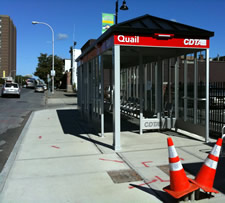 There's an interesting article in Governing on the growing popularity of bus rapid transit systems (BRT) -- like CDTA's BusPlus. A short clip:
There's an interesting article in Governing on the growing popularity of bus rapid transit systems (BRT) -- like CDTA's BusPlus. A short clip:
Generally, the thinking among U.S. transit officials is that "choice riders" -- those who don't have to take transit but opt to because of its convenience -- are willing to ride subways, light rail and streetcars, but not buses. Advocates of BRT argue that bus service itself isn't the problem; it's the way the service is implemented. Offer riders buses that are fast, clean and safe, they say, and passengers will embrace them. "If you build it right, people will come," says Janette Sadik-Khan, New York City's transportation commissioner. "People aren't going to get on dirty buses that are slow."
The article hits on the potential of such systems, but also their problems and critics -- including those who say that BRT is just a decision to "cheap out" on building more robust systems like light rail.
When transportation issues come up here, people often call out for light rail. But here's the thing: the chances of that ever happening in the Capital Region are very small. Building such a system would cost a ton of money (that Governing article mentions the projected cost of 7 miles of light rail in Cleveland was $1 billion). And it would be a political nightmare -- any worthwhile system here would cross numerous municipal lines, requiring the cooperation (or at least non-opposition) of a long string of county and local governments. It'd be like setting off an atomic NIMBY bomb.
BusPlus isn't perfect -- far from it. CDTA needs to keep adding features and make the system faster in order to at least fulfill its initial promise. And it will have to expand the service to make it more than a Albany-Schenectady express line. There's a long way to go. But it's probably the closest thing we'll get to a transit rail system.
[via @drewbkerr]
The ___est neighborhoods in the Capital Region

Schenectady leads the Capital Region in racial diversity. (The deeper the shade of green, the more diverse the neighborhood.)
Location. Location. Location.
It's a cliche, but it doesn't make it any less true: location is among the most important factors in real estate. It can significantly affect the value of a house -- and significantly affect how much you like living there.
Of course, physical factors like roads, trees, and access to services are a big part of location. But so are the people in your neighborhood.
To get a better sense of some general demographic characteristics about Capital Region neighborhoods -- age, ethnic diversity, income, education, and so on -- we pulled data for all 210 Census tracts in the four county area.
Here are some of the ____-est neighborhoods...
Something to be happy about: traffic
 Worth pointing out (again): the Albany metro area has a relatively low level of traffic congestion. In fact, compared to a lot of large metros, it essentially doesn't have traffic.
Worth pointing out (again): the Albany metro area has a relatively low level of traffic congestion. In fact, compared to a lot of large metros, it essentially doesn't have traffic.
The Albany metro area ranked 78th for traffic congestion during the 12 months that ended in April 2012, according to the traffic data firm INRIX. Trips here on average took 2.1 percent more time because of congestion (down from 3.6 percent during the same period the year before). It estimates that the average driver here wasted 4.1 hours during that period because of congestion.
For some context: the most congested metro area last year was Honolulu, where INRIX figures drivers wasted 58 hours during the year. The Honolulu metro is roughly the same size as Albany-Schenectady-Troy in terms of population (Honolulu is #53, Albany is #59).
The time of the week with the most congestion? Thursday and Friday afternoon rush hour.
INRIX didn't identify any corridor bottlenecks here. The most congested corridor in the nation was a portion of the 405 in LA.
Austin: Q: Why did the semiconductor consortium cross the road to Albany? A: Maybe because it couldn't cross the road in Austin -- the Texas city had the 6th worst traffic congestion in the nation.
We're joking about that. Mostly. But there's research that traffic and commuting make people unhappy -- and that we often underestimate the degree to which it's a downer. [Wired]
Here's the INRIX explainer on methodology. Last year were able to find out which roadways it was tracking in this area -- we can't find that this year. (Last year it was I-87, I-90, I-787, I-890, and Route 7.)
Capital Region high school graduation rates 2011
 The state Department of Education released data Monday about high school graduation rates. The statewide graduation rate for the 2007 cohort of students was 74 percent (that counts kids who finished up by June 2011).
The state Department of Education released data Monday about high school graduation rates. The statewide graduation rate for the 2007 cohort of students was 74 percent (that counts kids who finished up by June 2011).
We pulled out the stats from Capital Region school districts. As in years past, some of the results are sobering and frustrating.
Sorted stats (including notes and qualifications) after the jump.
Capital Region property tax rates
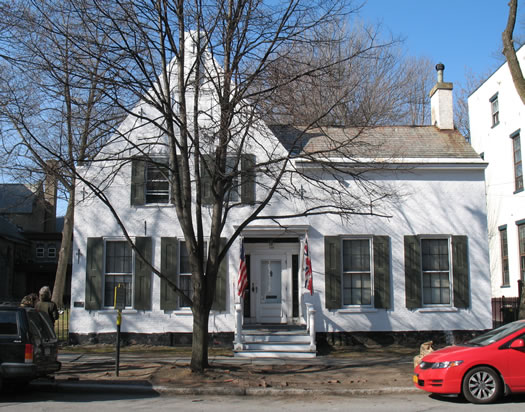
Schenectady has the highest property tax rate in the Capital Region, according to the Empire Center report. The property taxes on this house -- the "oldest" house in Schenectady -- assessed at $247,600 in 2010: $10,078. [Zillow]
The Capital Region has the lowest median effective property tax rate in the state, according to a report from the Empire Center. This area's median rate was $23.14 per $1000 last year. Western New York had the highest rate at $35.58 per $1000.
The Empire Center's analysis did not include New York City or Nassau County, which it says impose rates in a way that makes them hard to compare. And in this case, the Capital Region extends beyond the four core counties to also includes counties such as Warren, Washington, and Greene.
Within the Capital Region's core there are wide differences. The effective total property tax rate in the city of Schenectady is $40.75 per $1,000 of property value. In the town of Edinburgh it's $7.70 per $1,000.
We pulled all the numbers for municipalities in the Capital Region's core. They're sorted after the jump.
New York State's teen birth rate continues to drop
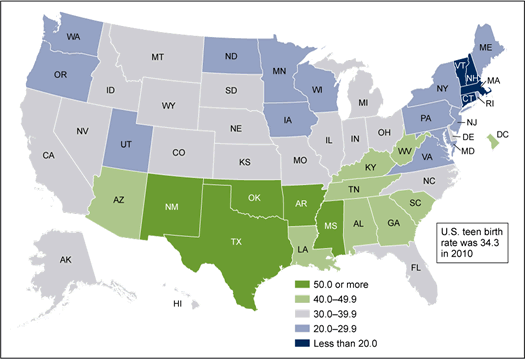
Teen birth rates across the nation in 2010. (Here's a state-by-state table.)
Updated Thursday morning
New York State has one of the lower teen birth rates in the nation, according to numbers out this week from the National Center for Health Statistics.
The Empire State's rate was 22.6 births per 1000 women ages 15-19 in 2010. Only eight states had lower rates (check out the map above). The national average was 34.3. The lowest state was New Hampshire (15.7), the highest Mississippi (55.0).
Teen birth rates have been dropping across the country since the early 1990s. Some perspective: New York State's rate was 45.5 in 1991 -- it's dropped almost every year since (source).
Nationally, he NCHS says "fewer babies were born to teenagers in 2010 than in any year since 1946." And the national rate is the lowest it's been in the seven decades that reliable numbers are available.
So, why's this happening? From the report:
The impact of strong pregnancy prevention messages directed to teenagers has been credited with the birth rate declines (9-11). Recently released data from the National Survey of Family Growth, conducted by the Centers for Disease Control and Prevention's (CDC) National Center for Health Statistics (NCHS), have shown increased use of contraception at first initiation of sex and use of dual methods of contraception (that is, condoms and hormonal methods) among sexually active female and male teenagers. These trends may have contributed to the recent birth rate declines (12).
Curious about the Capital Region, we looked up the rates for the local core counties...
Diners of the Capital District
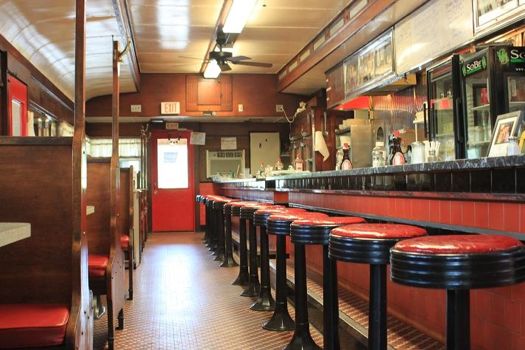
One of Mike's hidden "gems" -- a restored diner near the Sacandaga.
Mike Engle never set foot in a diner until he was in his mid 20s. "My family," he says, "just didn't eat out a lot."
Then a friend took him to the vintage Miss Johnstown Diner in Johnstown, New York. Since then diners have held a special place in Engle's heart. And his stomach.
In the last fifteen years he's eaten in at least 400 diners.
The Rensselaer County native literally wrote the book on New York diners -- Diners of New York State. But he wanted to give each individual diner more attention than the book allowed. So he recently self-published a book focused on diners of the Capital Region, aptly titled Diners of the Capital Region.
The new book features more than 50 regional diners, past and present, and looks at their history, their architecture and their food. It can also be used as a kind of "diner tour guide" of sorts -- with spaces after each entry for the autograph of the servers and the diner owners.
Engle took time from visiting diners and teaching math at HVCC to talk with us about local diner "gems," his favorite things to order, and what's so great about diners.
Flu season fizzle?

The dark blue line is the current season.
Now that spring is here, we're nearing the end of the traditional flu season.* And much like this past winter, this flu season has been something less than formidable (thankfully).
The graph above is Google Flu Trends track of flu-related search data for the Albany area this season, compared to previous seasons. (Google says the city specific tracking is still experimental -- here's the graph for New York State.) The state Department of Health's reports also point to a mild season around the state -- visits to sentinel providers are down a lot compared to last season, the number of hospitalized patients for flu is way down, and the percent of emergency room visits for flu has been more or less flat for the season.
But... Interestingly, there's been a recent uptick in the number of positive flu tests -- the week of March 24 had the highest number of positive reports all season. And the number of hospitalized patients is on the upswing. Let's hope that doesn't continue to develop.
On tracking bugs: More than flu this season, we noticed (anecdotally, online and off, whatever that's worth (not a whole lot)) many more people complaining of The Cold That Just Won't Quit (early winter) and the Stomach Bug from Hell (over the last month). It'd be great if someone could develop a way to glean this kind of stuff from Twitter and Facebook, and then provide reports. "Hello, we've noticed a recent increase in the number of your friends reporting being sick..."
* If you talk with flu researchers, they'll tell you the "flu season" is often neither typical nor traditional. For example, in 2008-2009, some of the highest activity months in New York State were May and June. The flu is the like weather -- you can make reasonable guesses based on patterns, but you never really know until it happens.
graph: Google Flu Trends
Not really worse, just not much better
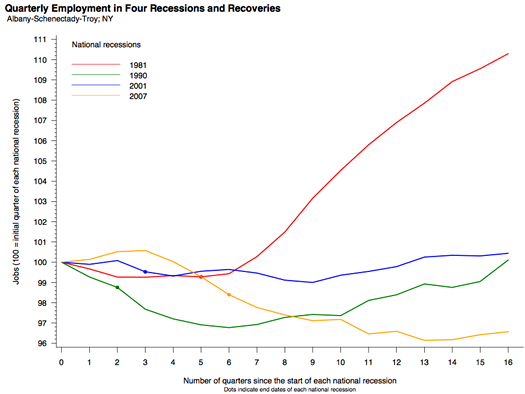
The yellow line is for the most recent recession. Yeah, not so great.
The Albany metro area is in the the second-weakest quintile for economic performance in the latest MetroMonitor report from Brookings Institution (tracking through December 2011).
That's not actually as bad as it sounds. In part, the report measure how well each metro has rebounded during the recession, and this area didn't fall that far compared to many other metro areas. For example: Detroit is among the top 20 metros in the report -- and we'd probably rather not trade with Detroit. (Also in the top 20: Austin. Foiled again!)
As it happens, the Albany metro area is doing pretty well in terms of housing prices (15th for change in housing prices from peak (2007Q1)) and "gross metropolitan product" (9th for change in GMP from peak (2007Q4)). It's not so hot for jobs -- the number of employed people here is only up .4 percent compared to the low point (2011Q1).
The graph above gives you some sense of how hard the recession has hit the local job market, compared to past recessions. We didn't get knocked down, but we're still just sort of staggering forward because whatever gains there have been (example: GlobalFoundries) have been blunted by losses (example: local school districts, governments).
The profile for the Albany metro -- with a bigger version of the graph -- is embedded after the jump.
Speaking of jobs: The state Department of Labor reported today that the Albany metro area had about 5,500 more job last month compared to February 2011.
graph: Brookings Institution
Earlier on AOA: This is a good place to find a job, Forbes says
The Capital Region could probably smile more
 The Albany-Schenectady-Troy metro area ranked #101 nationally in the annual Gallup-Healthways "Well-Being Index." That's down a few slots from last year(#93), though the region's score didn't change.
The Albany-Schenectady-Troy metro area ranked #101 nationally in the annual Gallup-Healthways "Well-Being Index." That's down a few slots from last year(#93), though the region's score didn't change.
The report surveys people across the country, asking them questions in six categories: life evaluation (current and the in the future), emotional health (happiness, sadness, worry), physical health, healthy behavior, work environment, and basic access to things like healthcare and healthy food.
The Albany metro's lowest rank was in the emotional health category -- #151. Its highest rank came in the basic access category -- #31. (So, maybe we're upset that even with access to the things we need, we still feel unfulfilled. It's complicated.)
A little more than 53 percent of respondents in this area think it's becoming a better to place to live.
Other places in New York
Here are the ranks for the state's other metropolitan areas: Rochester (#29) Buffalo (#106), Poughkeepsie (#108), NYC (#124), Syracuse (#129), Binghamton (#180), Utica-Rome (#183).
And people in many of those metros don't think things are getting better soon. Buffalo, Utica, Syracuse, and Binghamton all ranked near the bottom of the "optimism" rankings. In fact, Binghamton was the least optimistic metro in the entire survey -- only about 28 percent of people there said they thought their area is getting better as a place to live.
The report for New York State is embedded after the jump.
Yep, gasoline prices have gone up
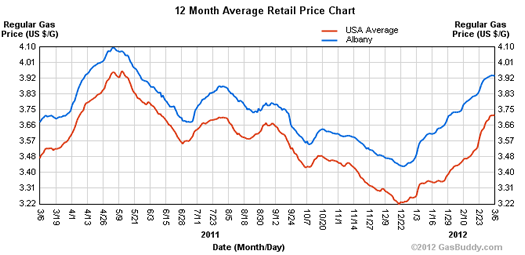
The blue line is the reported Albany area average price per gallon, the red the reported national average price.
Today's chart: From AlbanyGasPrices.com, it's a chart of Albany area gasoline prices over the last year.
In what's been painfully obvious if you've been filling up recently, there's a been a steep rise since December -- about 15 percent. But the recent run up follows what was more or less 8 months of declines. In fact, prices are still a bit below last year's high in April.
By the way: There are a handful of stations charging more than $4/gallon, according to AlbanyGasPrice.com's crowd-sourced reports -- including a station in Guilderland reportedly charging $4.16. The lowest price reported today in the core Capital Region was 3.83 in in Ballston Spa.
Taxes: The combined state and federal tax on a gallon of gasoline in New York State is 67.4 cents -- the highest in the nation. California and Connecticut are tied for #2 at 67 cents. [API]
[via @AndyArthur]
Earlier on AOA: March 2011: Everyone's taking a hit on gas prices -- sometimes even the gas stations
chart: AlbanyGasPrices.com
This is a good place to find a job, Forbes says
 External validation: Forbes says the Albany-Schenectady metro area is #4 on the mag's "Best Cities for Jobs" list. Forbes cites the GE battery plant and the GlobalFoundries fab as reasons for the metro's ranking.
External validation: Forbes says the Albany-Schenectady metro area is #4 on the mag's "Best Cities for Jobs" list. Forbes cites the GE battery plant and the GlobalFoundries fab as reasons for the metro's ranking.
Those are good reasons. And it's reasonable to be generally optimistic about the Capital Region economy -- the unemployment rate has been relatively mild compared to the rest of the country, and the housing market didn't implode like it did in other metros. There's the aforementioned factories, and all the nanotech stuff.
But it's also worth noting some context: there are currently fewer employed people here than five years ago -- about 14,000 fewer, if you compare December 2007 to December 2011, according to the federal Bureau of Labor Statistics (xls). And in December 2011, there were about 30,000 unemployed people in the region, according to the NYS Department of Labor.
Forbes says it developed its list by ranking "the 100 largest U.S. metropolitan areas by a variety of statistics including unemployment rate, household income and projected job growth," while screening out "cities that were merely rebounding from the recession." (Sorry, Las Vegas.)
Here are the top five from Forbes' list:
1. Washington, DC
2. Des Moines, Iowa
3. Poughkeepsie/Newburgh, New York
4. Albany-Schenectady, New York
5. Madison, Wisconsin
photo: GlobalFoundries
What I miss about the Capital Region

We miss Jess.
 It's been a little over four months since I packed up my belongings and my dog and drove west to California. After finishing graduate school in Chicago and applying for jobs there and all over the East Coast, I got frustrated with the rejections and decided to start applying to random places out west. I ended up landing a gig in a little surfing city that's perhaps best known for being the fictional Santa Carla in that 80s classic The Lost Boys. These days I spend my time marveling over the myriad species of succulents and palm trees that grow around me, listening to the siren song of the sea lions, and chastising myself when 45 degrees in January seems cold to me.
It's been a little over four months since I packed up my belongings and my dog and drove west to California. After finishing graduate school in Chicago and applying for jobs there and all over the East Coast, I got frustrated with the rejections and decided to start applying to random places out west. I ended up landing a gig in a little surfing city that's perhaps best known for being the fictional Santa Carla in that 80s classic The Lost Boys. These days I spend my time marveling over the myriad species of succulents and palm trees that grow around me, listening to the siren song of the sea lions, and chastising myself when 45 degrees in January seems cold to me.
Santa Cruz is a small city, smaller than Albany, about an hour and a half south of San Francisco and at the tail end of the Silicon Valley. I live two blocks from the ocean and there are awesome taquerias a-plenty. Still, lately I've been feeling a little homesick. Sure, that's largely due to missing friends, family and AOA, but there's a lot I miss about living in the Capital Region.
A typeface that says Albany
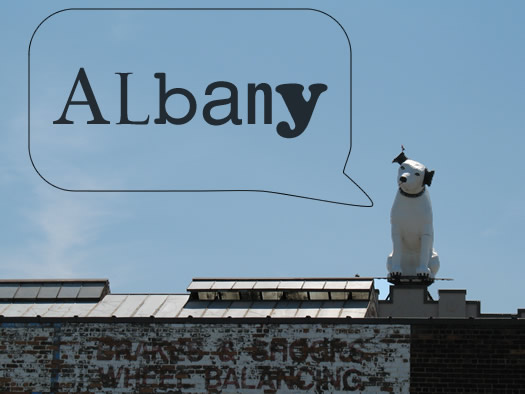
This caught our eye this week: there's an effort in Chattanooga, Tennessee to develop a signature typeface for the city. The effort is organize enough that it's produced a video explaining how the typeface could help the city market itself, and there's a Kickstarter project aiming to fund it.
This got us thinking about what an Albany typeface might look like. It'd be an interesting challenge -- finding a way to acknowledge the city's long history, but also working in the fact that city's most prominent architecture (the ESP) is more modern.
Or maybe even more fun: a collection of Capital Region typefaces -- for Albany, Troy, Saratoga, and Schenectady -- that could be used on signage and other related materials. It'd help reinforce the idea that each of those places is different, with their own unique feel.
[via TMN]
Capital Region rents
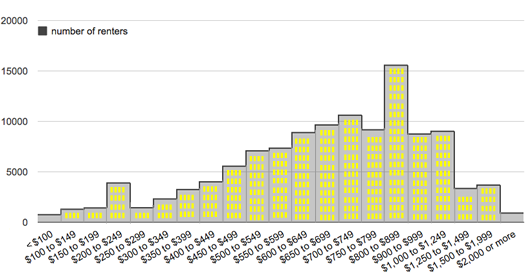
The distribution of rent prices in the Albany-Schenectady-Troy metro area in 2010, according to Census Bureau estimate. Here's a larger version.
After seeing that the Capital Region had one of the lowest apartment vacancy rates in the nation last year, we were curious about rents here -- how they're distributed and how they stack up against other metro areas. [Biz Review]
Bring on the charts and graphs...
The quintessential Capital Region food?

The Esperanto Doughboy is on the list.
 Let me get this out there right off the bat: I AM NOT A FOODIE. I know about as much about food as most people know about the rules of cricket. Do I like to eat? Yes. But I am not a food expert, nor have I ever claimed to be one. Surely, the following treatise is going to spark a great debate, rage perhaps. But take my list here with a grain of salt. I. Am not. A foodie. I'm just an average dude, looking for some meaning in local food.
Let me get this out there right off the bat: I AM NOT A FOODIE. I know about as much about food as most people know about the rules of cricket. Do I like to eat? Yes. But I am not a food expert, nor have I ever claimed to be one. Surely, the following treatise is going to spark a great debate, rage perhaps. But take my list here with a grain of salt. I. Am not. A foodie. I'm just an average dude, looking for some meaning in local food.
Philadelphia has cheese steaks. Boston has baked beans. New York is known for pizza and bagels. Chicago for deep dish pizza. Kansas City has made a name with their BBQ, New Orleans is brimming with jambalaya and Baltimore has blue crabs. Sure, the these cities are major metropolitan areas, but Utica is known for Tomato Pie, Binghamton has Spiedies, and all Western New York towns claim beef on weck as their own. Hey, Buffalo invented wings.
So what have we got? What is Albany's, or rather the Capital Region's, claim to gastronomical fame? I have wondered far too long.
I reached out to a few Capital Region friends and asked them this question: What qualifies as a "quintessential" local food?
The Capital Region's legislative districts, before and after the proposed new lines
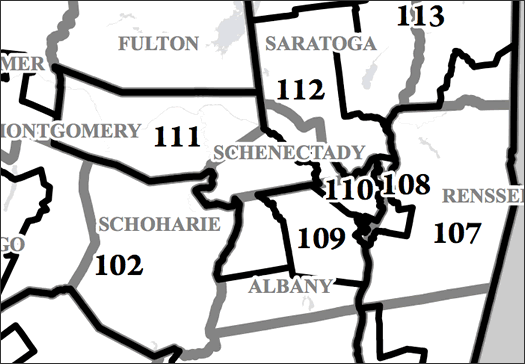
How Capital Region state Assembly districts could shape up.
Update: Andrew Cuomo says he'll veto the new lines, which probably means negotiations and adjustments. [AP/WSJ]
____
The task force in charge of drawing new districts for the state Senate and Assembly released its slate of proposed maps this week. As this is New York State politics, there was much criticism. And we'll get to some of that in a bit.
The Capital Region could potentially end up being affected by a lot by the proposed new district lines. Most significantly, the task force is proposing to add a new Senate district that would cover the southwest corner of the area. But there are also shifts in the city of Albany, Saratoga Springs, Schenectady, and Troy.
Reading about all this, we found it kind of hard to keep all the old and new maps straight. So we've we've put together before-and-after versions of the Capital Region's legislative districts -- the current districts side by side with the proposed new lines.
Citizens of the Capital Region, meet what could be your new gerrymanders...
Capital Region median home prices 2011
 The median sale price of single family homes in the Capital Region was basically flat in 2011 compared to 2010, according to numbers from the Greater Capital Association of Realtors.
The median sale price of single family homes in the Capital Region was basically flat in 2011 compared to 2010, according to numbers from the Greater Capital Association of Realtors.
The median price for sale price for a home in the greater Capital Region was $186,032 in 2011. It was $203,511 in the Capital Region's four core counties. Both of those medians were down about 1 percent from 2010.
GCAR (as it's known) recently posted its annual market report for 2011. It includes stats for individual counties, cities, and towns in the Capital Region -- we've broken those out into a table after the jump.
While prices were basically flat for the region as a whole, the average time it took to sell a house increased. GCAR says the average number of days on the market until sale was 101 days in 2011, up from 92 in 2012. (For some perspective, the average was 79 days in 2007. It's been rising each year since.)
Onto the table...
Colonie still among lowest-crime large municipalities in nation -- but not the lowest
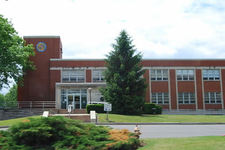 Colonie is ranked #7 on this year's list of lowest crime cities in the US as compiled by CQ Press.* The town was #1 in the rankings for 2010 and 2009.
Colonie is ranked #7 on this year's list of lowest crime cities in the US as compiled by CQ Press.* The town was #1 in the rankings for 2010 and 2009.
This year's rankings are based on stats from 2010. Colonie's police chief says the number of major crimes dropped slightly this year. [TU]
The city of Albany was ranked 295th on this year's list -- that's up (or, in reference to crime, down) from #317 in the 2010 rankings. And the crime score compiled by CQ for the city dropped from 86.77 to 68.06.
CQ Press also ranks metropolitan areas. The Albany-Schenectady-Troy metro is #77 on this year's rankings -- it was #73 on last year's list. It's still well below the national average.
The Glens Falls metro ranked #8 this year, after topping the rankings last year.
If you're curious about the methodology behind these rankings -- and the strong criticism of them -- here's a little more...
Winners in Capital Region's non-win: lofts, mushroom packaging, Troy riverfront
 The Cuomo administration announced the winners of the Regional Economic Development Council competition today -- and the Capital Region did not win. The "best plan" awards went to Western New York, Central New York, the North Country, and Long Island -- they all got about $100 million in funding.
The Cuomo administration announced the winners of the Regional Economic Development Council competition today -- and the Capital Region did not win. The "best plan" awards went to Western New York, Central New York, the North Country, and Long Island -- they all got about $100 million in funding.
But the Capital Region wasn't exactly a loser, either. The region scored $62.7 million in grants. So, call it a non-winner.
A total of 88 projects in this region are getting funding. Some of it looks pork-ish (of course, all in the eye of the beholder). There are handful of grants that caught our eye. The full list, with highlights, after the jump.
Good holiday and New Year's stuff to do?
 Ben emails:
Ben emails:
My wife and I are new to Albany, don't know anyone (losers, I know), and are looking for some good holiday and new year's stuff to do. Not so much the 'get wasted at Jillian's after paying $100 cover for a free glass of Cristalino,' but maybe something a bit more unique. Any ideas?
Or, to phrase Ben's question a little bit differently, if were talking with someone who's new to the Capital Region, what holiday traditions or stuff to do would you tell them about?
Got a suggestion for Ben and his wife? Please share!
photo: Flickr user _FXR
Slow start for the flu -- and then there's whatever the other thing is
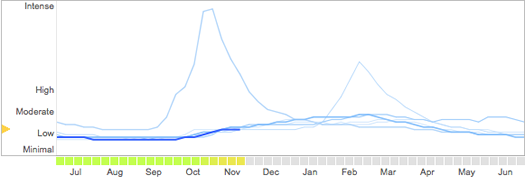
The results for Albany from Google Flu Trends' experimental cities model. The dark blue is this year, the light blue lines are previous years.
We've been noticing what seems like a lot of coughing and sickness going around recently, so we had a look at Google Flu Trends to get a sense of how this year's flu season is shaping up.
And the answer so far: it's been slow (here's New York State's graph, which based on a model that's been tested against previous years). The state Department of Health's official reports, which lag about a week, also are reporting a slow start.
The takeaway here: there's still time to get a flu shot. And the sooner the better, since it takes your body some time to build resistance based on the vaccine. Compared to some of the seasons in the past decade that were marked by shortages and crushes at doctors offices, flu shots have become almost ridiculously easy to get. Most of the major pharmacies are now offering them.
Flu experts will tell you there's no such thing as a "typical" flu season -- the pattern of these things is just something we don't really have a good handle on. So just because things have started out slowly doesn't really mean much. Things could change quickly. Or not.
That other sickness
While the flu doesn't appear to really be kicking yet this year, something else does seem to be going around (anecdotally). We've noticed a handful of people who've come down with a cough that just won't quit. Mrs. Greg finally broke down and went to the doctor recently after about three weeks of it, a few better days, and then a relapse. The doctor told her he's been seeing a bunch of people with the same pattern: cold and cough for weeks, better for a few days, then a relapse before getting better again.
Just a reminder that the microbes own this world -- we're just living here.
graph: Google Flu Trends
Cities and towns as puzzle pieces

Here's something to burn off the rest of your Friday afternoon:
Can you guess Capital Region cities or towns by their geographic shape?
A handful are after the jump.
An Albany dialect?
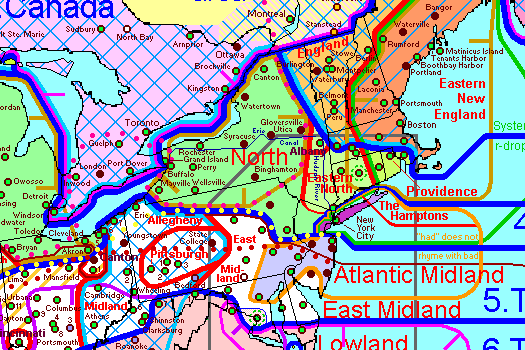
Albany is at the intersection of different dialect areas on this map.
@ajw93 pointed out an interesting site: it's a dialect map of North America. According to this map -- compiled by a linguist named Rick Aschmann -- there's an Albany dialect of American English. A few of the things that characterize this dialect:
+ "Fronted" (tongue near the front of the mouth) vowels in words such as "lot" and "cot."
+ Very little fronting of the vowel in "far."
+ The vowel in "caught" is strongly raised.
+ And these words sound the same: "hoarse" and "horse" | "mourning" and "morning" | "four" and "for."
We've never really noticed a strong "Albany" accent. But if there is one, it's definitely different from other parts of upstate. For example, some people in Central New York have relatively strong accents -- words such as "fire" are pronounced "feuer," and there's the ele-men-TARY pronunciation that occasionally pops up here, too. And, of course, there's the soda/pop divide.
It turns out there's a difference between dialects and accents -- accents are subsets of dialects. And the dialect spoken in Albany and along the Hudson is called, appropriately, Hudson Valley English -- and was influenced by Dutch. Some of the influences from Dutch are still obvious: words such as "kill" (for a creek) and "hook" (for a land point, example: Newton Hook in Columbia County). [Wikipedia] [Wikipedia] [HL Mencken's The American Language]
By the way: The example of the Albany dialect on the Aschmann site is a video clip of Jerry Jennings. Babe.
map: North American English Dialects, Based on Pronunciation Patterns
Election results highlights 2011
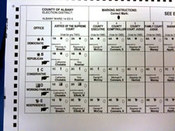
Here's a quick scan of results from local elections Tuesday. This is not a comprehensive list, just some highlights. Numbers are unofficial.
The boards of election from Albany, Rensselaer, Saratoga and Schenectady counties have results posted online.
Pot prices around New York State
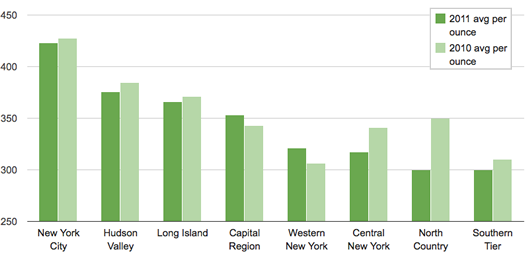
This is all really hazy, so, you know, grain of salt and all that. Dude.
About a year ago we pulled data on marijuana prices in New York State from a site called Price of Weed. Yep, it's pretty much what it sounds like -- it's a crowdsourced database of pot prices.
We came across some research recently on these prices, so we figured it was a good time to light this topic back up.
Let's roll the numbers. Here are pot prices from around New York State, broken out by region...
The first, last, most, and least snow
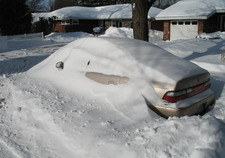 Yep, there's snow in the forecast for Thursday. From the National Weather Service:
Yep, there's snow in the forecast for Thursday. From the National Weather Service:
Thursday Night: Rain and snow showers, becoming all snow after 11pm. Low around 29. North wind between 6 and 10 mph. Chance of precipitation is 80%. New precipitation amounts between a quarter and half of an inch possible.
Thursday sounds generally unpleasant. Highs in the 40s. Rain. Then snow. So it goes.
Anyway, the question came up the other day about what's the average day for the snow of the season around here. Here's the first, last, most, and least...
Capital Region income distribution
 With all the talk about 99 percents and 1 percents, we were curious about the income distribution in the Capital Region.
With all the talk about 99 percents and 1 percents, we were curious about the income distribution in the Capital Region.
So, we looked up the data. Let's go to the charts, graphs, and discussion...
(You know you want to see where you rank.)
Capital Region Google Streetview images updating
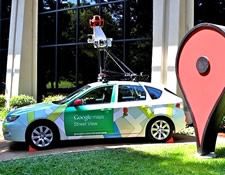 It seems like everyone's seen the Google Streetview car driving past sometime during the last few months. We recently emailed Google to find out when the images might started being updated online and got the "anywhere between a few months to a year" answer from a spokesperson.
It seems like everyone's seen the Google Streetview car driving past sometime during the last few months. We recently emailed Google to find out when the images might started being updated online and got the "anywhere between a few months to a year" answer from a spokesperson.
Well, for parts of the Capital Region, the actual answer appears to be "right about now."
We checked a few theater marquees around the area to get a sense of when they were last recorded. It appears Proctors was captured in August (wrong, it's still the old one), and The Spectrum all the way back in June (also now online). In Troy, the old city hall is now partially demolished on Streetview. And there's a capture of the beginning of construction at the Albany NanoTech expansion. Also: the capture from the original Google crawl of the area that included one of the Editors is no longer online. It's too bad -- we were waving to the car.
A Google spokesperson says the old Streetview images aren't made available online. That's unfortunate -- it'd be fun to compare. You gotta think that will eventually make it online.
We had a handful of other questions for Google about how long it takes to crawl a metro area this size and stuff like that. Unfortunately, its spokespeople very politely said they couldn't answer most of the questions. And they wouldn't hook us up with the local drivers because "they work for us on a short-term basis. They're folks who are familiar with the local roads, but might not be familiar with Google's overarching project or mapping efforts." So it goes.
Here's a recent "Ask Me Anything" on Reddit with someone who says they were a Google Streetview driver.
(And if you were/are the local Streetview driver, we'd love to talk/email with you.)
photo via Google
Who you calling what?
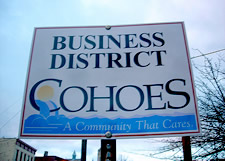 Updated again!
Updated again!
The recent discussion about a certain word for Troy and its residents got us thinking about what you call people from the Capital Region's different towns, villages, and hamlets.
A handful of the names are easy. For another handful, we had to dig a little. And for the rest -- we have no idea. But you maybe do.
The list we've compiled so far is after the jump. If you have anything to add/correct -- please share!
Albany metro an "economically vibrant college town"
 The Albany metro area ranks 15th in a list of the "most economically vibrant college towns" from The Atlantic and Richard Florida.
The Albany metro area ranks 15th in a list of the "most economically vibrant college towns" from The Atlantic and Richard Florida.
They applied the term "college town" somewhat loosely:
Our measure is not limited to smaller, more traditional college towns, but also includes larger metros like Boston, San Francisco, Washington D.C., and New York, which are home to major college campuses and large numbers of students and faculty. We measure economic vibrancy in terms of six key variables: per capita income, high-tech industry concentration, the rate of innovation (measured as patents per capita), human capital (the percentage of adults with a bachelor's degree or higher), percent of the workforce in the creative class, and the affordability of housing.
Boulder was #1 on the list. (Tangent: Should we start nurturing Boulder envy? Is Boulder the new Portland? The new Austin?)
(Thanks, Jess!)
Capital Region unemployment down a bit
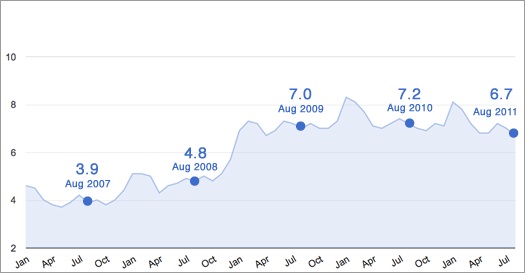
The last five Augusts. (see note below)
The Capital Region's unemployment rate was 6.7 percent in August, according to data out Tuesday from the state Department of Labor. That's down from 7.2 percent in August 2010, and 7 percent his past July. (August 2010 is the best comparison because the data is not seasonally adjusted.)
Even with the decline in unemployment rate, the Capital Region still had fewer people employed this past August compared to a year ago -- about 4,000 fewer people. There were just under 30,000 people unemployed in the Capital Region last month.
The chart above tracks the Capital Region's unemployment rate by month over the last five years, with each August marked.*
The state's unemployment rate was 7.7 percent, down from 8.3 percent in August 2010. The national unemployment rate was 9.1 percent.
Breakouts for local counties after the jump. Saratoga County had one of the lowest rates in the state.
Earthquake!

People waiting outside the Smith Building in Albany after the earthquake. Twitter was full of reports of people leaving office buildings after the quake. Near the Capitol, State Police were going around telling people it was OK to return to their offices.
Updated at 3:04 pm
At about 1:54 this afternoon there was an earthquake felt in the Capital Region. Reports all over Twitter -- from people both here in Albany (@ElizabethEss at the Smith Building in downtown Albany), to Brooklyn (@MimsieSky), to DC (@jdb820).
The USGS is reporting a 5.8 magnitude quake with an epicenter in central Virginia (apparently a rare event for that area). The epicenter is about 395 miles from Albany. [USGS] [Washington Post]
We felt it shake for a good 30 seconds in Albany. Floor lamps were swaying noticeably. Our wheeled office chair rolled back and forth a bit. Did you feel it? Where?
After the jump, a bunch of reports, reactions -- and jokes -- from people on Twitter.
Capital Region elementary school test scores 2011
 The state Education Department released results from the English and math proficiency tests for grades 3-8 this week. NYSED reports that, on average, scores are down slightly for English and about the same for math.
The state Education Department released results from the English and math proficiency tests for grades 3-8 this week. NYSED reports that, on average, scores are down slightly for English and about the same for math.
The state also makes the test score data available by school district, so we pulled out the results for Capital Region districts. A compact, easy-skim version is after the jump -- along with expanded presentations of the data -- after the jump...
Capital Region or Capital District?
 Abby emails:
Abby emails:
Riddle me this: when is it proper to say Capital Region? And when should we call it the Capital District?
We've never heard a great answer to this question. And, to extend Abby's question a bit, where does this region/district stop? Does is it include Amsterdam? Glens Falls? Catskill?
If you have some insight -- or can just make a good case -- please share!
The Albany metro bounces. Theoretically.

The Northeast and Midwest: resilient.
The Albany metropolitan area ranks among the most "resilient" metros in the nation, according to rankings out this week from researchers at the University at Buffalo. The Albany metro ranked 48th out of 361 metros nationwide -- that's among the top 20 percent.
OK, so if you throw the Capital Region against a wall, it springs back? Sort of. Maybe.
Capital Region high school graduation rates 2010
 The state Department of Education released data today about high school graduation rates. The statewide graduation rate for the 2006 cohort of students was 73.4 percent (that counts kids who finished up by June 2010).
The state Department of Education released data today about high school graduation rates. The statewide graduation rate for the 2006 cohort of students was 73.4 percent (that counts kids who finished up by June 2010).
We pulled out the stats from Capital Region school districts. As in years past, some of the results are frustrating.
Sorted stats (including notes and qualifications) after the jump.
SUNY's economic impact on the Capital District

Impact of a walk-through fountain: priceless.
The SUNY system has a $1.3 billion annual economic impact on the Capital District, according to an analysis done by Rockefeller Institute at UAlbany and the University at Buffalo Regional Institute. It figures the SUNY system has a $19.8 billion impact on the state as a whole.
Here's a handful of facts, figures and bits for the Capital District that we pulled out of the report, in a few cases matched up with outside data...
Look both ways
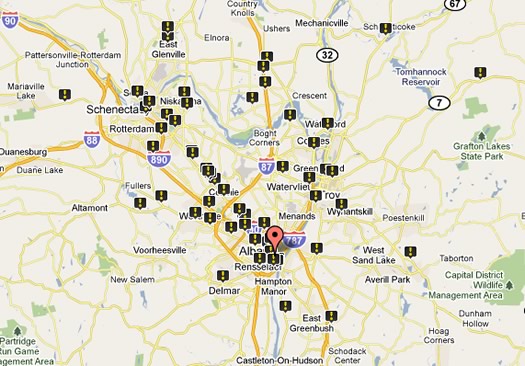
A screengrab from the map of pedestrian deaths in the Capital Region.
There were 92 pedestrian fatalities in the Capital Region from the years 2000-2009, according to a report out this week from a transportation advocacy org.
The Capital Region had one of the lower fatality rates in the state -- 1.1 deaths per 100,000 people. Of the four core counties, Albany had the highest pedestrian fatality rate at 1.3 deaths per 100,000 people.
Transportation America's report also includes a map of the pedestrian deaths. Of the 92 deaths reported in the Capital Region, 13 of them occurred along Route 5, according to the map.
[via @omarjpeters and @AbbyThyme]
Capital Region age distribution

Boom. Echo boom.
The Census Bureau reported today that the median age of people in New York State is 38. (That is, half the people here are older than that, half are younger.) That's up from 35.9 in the 2000 Census.
Here are the median ages for the four core counties of the Capital Region (and medians from a decade ago):
Albany: 38.5 (36.8)
Rensselaer: 39.2 (36.7)
Saratoga 40.8 (36.9)
Schenectady: 39.8 (38.6)
The graph above is the age distribution for the Capital Region.
After the jump: the median ages for a handful of Capital Region cities and towns. Also: everyone's favorite game -- can you guess the local municipality by its age distribution?
The Capital Region's snowiest winters (that includes the one that just ended)
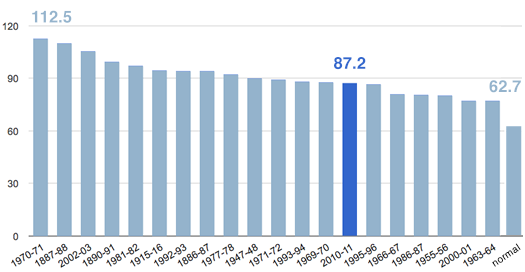
Now that it's May, we're going to call an end to the snowfall season. Yep, we're aware it could snow some more -- we're just going to act like that's not possible.
OK, so how does this past snowy winter stack up against the records?
The final total was 87.2 inches. That's good for the #14 spot on the chart of snowiest winters. Of course, that has to be taken with a few chunks of rock salt -- the chart only goes back to 1884-85.
By the way: The latest snowfall on the books for this area is May 28, 1902. The average last snowfall is April 20.
Earlier on AOA: The Giant Snowman of Guilderland
Data from National Weather Service
Capital Region unemployment rate drops
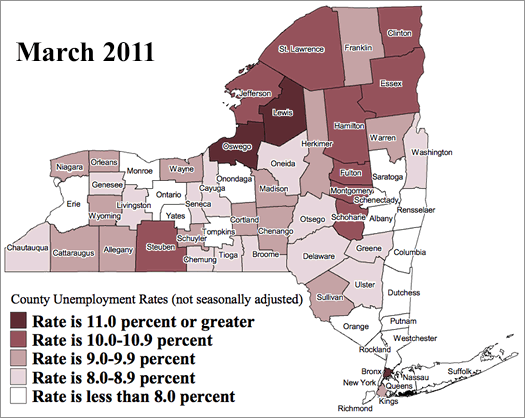
The Capital Region's unemployment rate was 7.2 percent last month, according to numbers out today from the state Department of Labor. That's down from 7.7 percent a year ago and 7.8 percent last month.
New York State's unemployment rate was 8 percent last month. That's down from 9.1 percent a year ago, and 8.7 last month. The national rate was 9.2 percent, down from 10.2 percent a year ago, and 9.5 percent last month.
Compared to the rest of the state, the Capital Region is doing relatively well. The Capital Region's rate was lower than all over metro areas in the state aside from Ithaca (5.4 percent) and the suburban counties around NYC (6.9 percent).
Zooming in a little more, individual Capital Region counties are doing even better compared to the rest of the state. Albany County's 6.8 percent rate was tied for sixth lowest in the state (with New York county). And Saratoga was right behind it at 6.9 percent. In fact, all four core counties of the Capital Region rank in the top 20 for lowest rates statewide. (The metro area's rate would be lower if not for Schoharie County, which the DOL includes in this metro, at 10.6).
There are still about 30,000 people in the Capital Region who are unemployed.
Numbers not seasonally adjusted, so the best comparison is to the same month a year ago.
Confessions of an Albany ex-pat
 As my plane left San Francisco in 2008, a host of premeditated, depressing songs were set to play on my iPod. One of them was "The City," by Sara Bareilles. The chorus of the song embraced my feelings at the time:
As my plane left San Francisco in 2008, a host of premeditated, depressing songs were set to play on my iPod. One of them was "The City," by Sara Bareilles. The chorus of the song embraced my feelings at the time:
"Here in these deep city lights;
Girl could get lost tonight;
I'm finding every reason to be gone;
Nothing here to hold on to."
Exhausted and burnt-out from Silicon Valley, I had booked a one-way ticket to Albany. The new job I had lined up fell through just months after my arrival. And the adventure that ensued has made me keenly aware of the nuances of "SmAlbany."
The culture shock I experienced after coming back to the Capital Region practically warranted a passport to live here again.
Benvenuto nella nostra cittÃ

Okay, so it snows here. But they should see Syracuse.
Italy, meet the Capital Region.
It's always interesting to see yourself through someone else's eyes. And a recent episode of "Living in America," an Italian TV series, brought host Domenico Nesci to Albany.
A few of the things Italian viewers learned about Albany: The snow is too damn high, the economy here doesn't suck as badly as it could, and Bettie makes some rockin' cupcakes.
Domenico goes shopping to get the "Look da Rapper" at Richter's on Central Ave. ("You get the shoes first because the shoes got to match everything.") He heads to Troy for a haircut -- and then to Bettie's Cakes in Saratoga Springs, which leads to a makeover, complete with wig, red patent heels, and a white dress, for a pinup photo shoot with with Bettie herself, a.k.a. Lorraine Murphy. And there's more, too.
Actually, it's good viewing, peppered with interesting profiles of local people. And since the interviews are in English with subtitles, you can enjoy them even if your Italian's a bit rusty.
Capital Region 2010 census population totals
The Census Bureau released 2010 populations totals for places in New York State Thursday afternoon.
The population of the Capital Region's four core counties was up more than five percent since the last census in 2000, which made this area an outlier for upstate. Breakouts for the individual local counties are above (breakouts for all the cities and towns in the Capital Region are after the jump).
New York State's population was up about two percent, as was New York City's population. Officials there are already arguing there was an undercount.
Breakouts for Capital Region cities and towns -- as well as a few notes -- after the jump.
Traffic? That's not traffic.
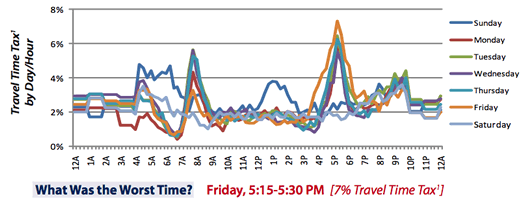
"Travel time tax" by hour and day of week in the Capital Region in 2010
The Albany metro area has nation's 80th most congested traffic, according to the annual rankings compiled by a company called INRIX. Or, as people from most major metros might describe the findings: we don't have traffic here.
The Albany metro scored its #80 ranking despite being the 58th largest metro. This area has just one percent of the peak period congestion as the #1 spot on the list, Los Angeles. INRX figures that congestion caused trips on the Capital Region's major roads to take just two percent longer in 2010 than they otherwise would during free flowing traffic (compared to the 10 percent national average).
INRIX didn't identify any congested corridors or bottlenecks here. (The most congested corridor in the nation: the Cross Bronx Expressway.)
The worst traffic time of the week? Friday between 5:15 and 5:30, where trips take a whopping 7 percent longer than they otherwise would. Yes, you better call ahead to let them know you'll be a little late.
The survey only covered metro area's major highways (I-87, I-90, I-787, I-890, Route 7). Here's more on the methodology.
Earlier on AOA: Traffic lights and ants
graph: INRIX
Albany-NYC: strong potential for high-speed rail?
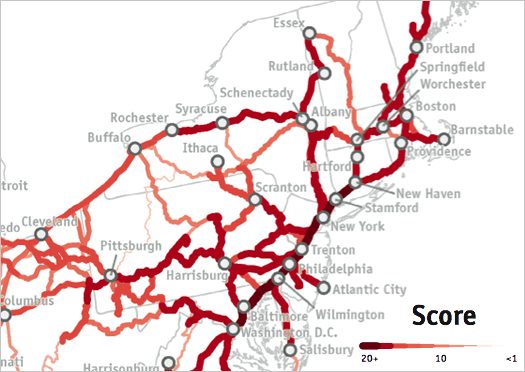
It's a hot route.
New York City to Albany ranks as one of the corridors with the most potential for high-speed rail, according to a report from a planning/policy org called America 2050.
The report assigned scores to almost 8000 rail corridors (of less than 600 miles) across the country based on group of factors including population, employment, and transit ridership. The NYC-Albany corridor ranked in the top one percent of all routes in the nation.
For some comparison, Washington DC-NYC was the top ranked route with a score of 20.15. The NYC-Albany route scored 19.29.
The report includes some really delicious transit nerding. Transportation Nation has a further breakdown of the results, including some thoughts on the effect of national politics (and circumstance) on current high-speed rail projects (or, how Florida could end up with the nation's first high-speed rail corridor [or not]).
As we understand the way these scores were calculated, corridors with already strong ridership tend to score best. So it's not surprising that NYC-Albany scored well -- the Empire Service is the fifth most-traveled route in the entire Amtrak system.
So, what could high-speed rail mean for Albany? Well, it could open the possibility of getting from Albany to Manhattan in about an hour (potentially). That's a commute for some people.
(Thanks, Kizzi!)
Earlier on AOA:
+ The slow line to high-speed rail
+ The best way to get from Albany to NYC?
image adapted from "High Speed Rail in America" by America 2050
New York is feeling fluish
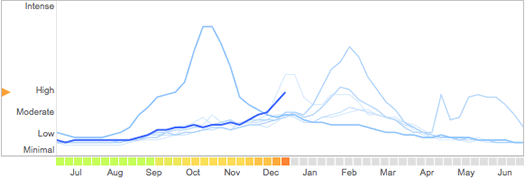
The bright blue line is this year. The light blue lines are previous years.
New York is one the states currently listed as having "widespread" flu activity, according to the CDC's latest report (which is a little old at this point). And Google Flu trends -- which often is a bit ahead of the official reports -- also has NYS pegged as a "high" activity state for the flu.
But get this: most of the flu activity seems to be in New York City. It appears that upstate is just beginning to see the wave (if it ever arrives -- the flu is weird and hard to predict). In fact, Google Flu's experimental city report has the major upstate cities -- including Albany -- listed as "low" (NYC is "high").
There's still time to get a flu shot. The CDC has a helpful flu jab finder.
Of course, these reports don't cover whatever the cough/cold it is that seems be circulating in the Capital Region right now (anecdotally).
So, uh, wash your hands. And cough into your arm.
graph: Google Flu Trends
Job market takes a step back
The Capital Region's unemployment rate was 7 percent in November, according to the state Department of Labor. That's up from 6.7 percent in November 2009. The region is down about 3,000 jobs compared to a year ago.
There were more than 31,000 unemployed people in the Capital Region in November.
New York State's unemployment rate was 8.3 percent in November -- up from 8.2 percent in October and down from 8.9 percent in November 2009. The total job count in the state was down 300 last month.
The national unemployment rate was 9.8 percent last month -- up from 9.6 in October and 10 in November 2009.
Anecdotal, but... We feel like we got a small view into the job market via the hiring process for the associate editor job with AOA. It's been sobering.
We got a lot of applications. And a lot of those people have skills and experience. There just aren't that many opportunities out there right now.
All data from NYS DOL. Capital Region data are not seasonally adjusted, so it's best to compare the same month from different years. State level data is adjusted, so if you'd like to compare one month to the next, go for it.
A good place to volunteer?
 Looking to help, Camilo emails:
Looking to help, Camilo emails:
With the upcoming season of holidays, I was wondering if you guys know of a good place to volunteer in, where I could spend a couple of hours a week. I am not affiliated with any church (neither am I interested in), but any place where I could feel like i'm being useful for the community would be cool. I checked online and I cant find anything really worth. Most of the volunteering positions I find around are more like office-assistant-of-the-church kinda work, but not really community oriented.
This question has come up a few times in the past. And people had some good suggestions -- some of them probably still apply.
There's also a site called VolunteerMatch that allows you to search for volunteer opportunities as if they were job listings. You just tell it the location and what you're interested in. Here are the results for "everything" within a 20 mile radius of 12203.
One more interesting option: The Stakeholders group is starting up a network to match non-profits with volunteers. It looks like they're currently taking applications for January matches.
Know of good place to volunteer? Please share!
photo: Flickr user Hamed Saber
Colonie again tops list of lowest-crime municipalities
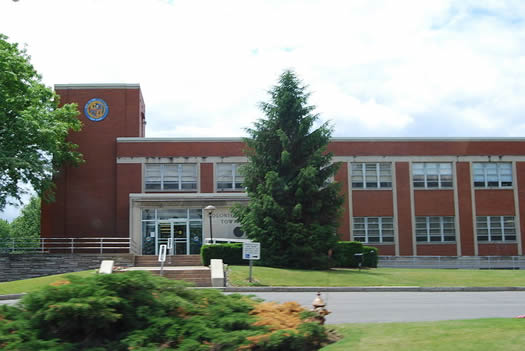
Colonie Town Hall
For the second year in a row, Colonie is ranked at the top of CQ Press' rankings for lowest-crime cities.* Also this year, the Glens Falls metro area ranked first among metro areas for lowest crime ranking.
Albany ranked #300 #317 on the list of lowest-crime cities (it was #300 last year). And the Albany-Schenectady-Troy metro ranked #73 on the list of metros.
St. Louis was ranked #1 for highest-crime. The Detroit metro area ranked #1 among metros.
CQ Press says the rankings are based on data from the federal Uniform Crime Reporting program. Here's an explanation of the methodology.
These rankings have critics. The FBI says it "discourages" such rankings and says they "lead to simplistic and/or incomplete analyses that often create misleading perceptions adversely affecting cities and counties, along with their residents." And the US Conference of Mayors called this year's rankings "a premeditated statistical mugging of America's cities."
* Yes, Colonie is not a city -- it's a town. CQ Press tagged it as such, not us.
(Thanks, Jess)
photo: UpstateNYer / Wikipedia
Adding jobs one place, losing them another
New York State added more than 40,000 private sector jobs last month -- the biggest such increase since 2005, according to the state Department of Labor. Good news!
Here's the thing, though: the state lost 37,000 public sector jobs compared to the same month a year ago. The large majority of those jobs were at the local level. And with stimulus money drying up, you have to figure governments will keep cutting.
The Capital Region added 2,800 private sector jobs in October, compared to October 2009. But public sector losses put the overall change at -1,900. There are still roughly 30,000 unemployed people in this area.
There's still time for a flu shot

Flu activity in New York State as tracked by Google Flu Trends over the last handful of season. The dark blue line is the current year. That big early spike was 2009.
The feverish state one of the editors was in yesterday had us thinking about the flu. So we checked out Google Flu Trends to see how this season is shaping up so far.
Flu experts will tell you there's no such thing as a "normal" flu season, but we don't appear to be off to anything you might consider a weird start. As you can see from Google's graph above, last year's flu season included a big early season spike.
Google's formula is based on search activity, not actual reported lab or doctors' office data. It appears to do a good job, though. (Both the New York State Department of Health and the federal Centers of Disease Control track the official data.) It would be interesting to see Twitter and Facebook updates folded in somehow.
Google is also now experimenting with data for metro areas -- here's Albany. Last year's data indicated Albany experienced an "intense" flu wave in early November.
All this is to say, if you haven't gotten a flu shot, there's still time to do so. Here's a flu shot finder.
Earlier on AOA: RPI's "beer pong" flu: a highly transmissible story
graph: Google Flu Trends
AOA Exit Poll 2010 results
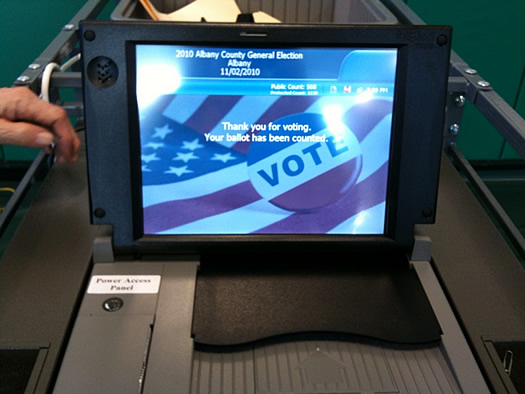
We did sort of have to resist the urge to tell it how many copies we wanted.
Here are the results from AOA's informal exit poll yesterday. Thanks to everyone who took the time to fill it out -- we got 133 responses.
Charts and a few comments after the jump.
AOA Exit Poll 2010 (and drawing!)
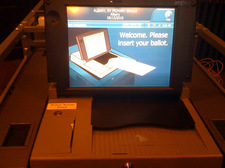 Update: The drawing's now closed, as is the exit poll. Thanks!
Update: The drawing's now closed, as is the exit poll. Thanks!
___
We thought it'd be interesting/fun to do a quick (and totally unscientific) exit poll for Election Day.
So, the first-ever AOA Exit Poll is after the jump. It should take all of 30 seconds to fill out. We'll post the aggregate results tomorrow.
Also, as part of the poll, we're giving away a copy of the Daily Show book Earth: A Visitor's Guide to the Human Race. We'll draw one winner at random from all the people who take the poll.
Important: You have to take the poll by 11:59 November 2 to qualify for the book drawing. You'll also have to enter an email address (that you check regularly) so we can contact you. We'll notify the winner by noon on November 3. And the winner must respond by 8 pm that day.
On to the poll!
More Wegmans speculation
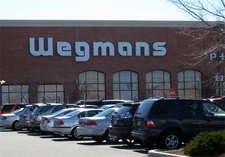 Updated Monday evening
Updated Monday evening
Chris Churchill points to speculation by the Syracuse Post-Standard's Bob Niedt that a Wegmans store in the Albany area will be "likely announced and possibly under construction" by the fall of 2011. Niedt's reasoning is this: Wegmans is setting up in the Boston area, and as a result, its trucks will be coming through this area -- so it's likely they'll open stores here and in Western Mass, too.
A Capital Region Wegmans would send supermarket obsessives here into a tizzy. It seems like whenever we talk about local supermarkets on AOA, there's always someone who pops in with a "yeah, but it's not Wegmans" comment. The chain is often ranked highly. And more competition is rarely a bad thing for consumers.
But... we're still skeptical about this latest speculation.
Prices from a market where they're not advertised
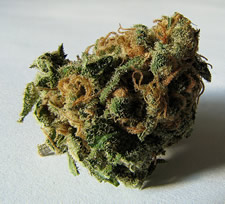 We're always curious about everyday patterns or odd markets that aren't necessarily easy to get a handle on. So we had to exclaim, "Dude!" when we recently came across a new site called Price of Weed.
We're always curious about everyday patterns or odd markets that aren't necessarily easy to get a handle on. So we had to exclaim, "Dude!" when we recently came across a new site called Price of Weed.
Yep. It's exactly what it sounds like. The site touts itself as "a global price index for marijuana." It relies on user submitted prices to compile a price index, broken down by state and quality. For example, here's the index for New York State. Here's an article about the anonymous creators.
The site includes reports by town. So, naturally, for journalistic purposes, we were immediately curious about prices in the Capital Region and how they compared to other parts of the state.
So we rolled the numbers.
Albany lures more money and nerds from Austin
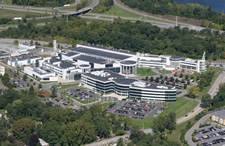 David Paterson and bunch of other top state officials were at Albany NanoTech today to announce that Sematech -- the semiconductor research consortium -- is moving another one of its arms from Austin to Albany. (This had been simmering for a while.) The move will reportedly bring 100 jobs and $100 million in investment ($20 million of that public). [Paterson admin] [TU]
David Paterson and bunch of other top state officials were at Albany NanoTech today to announce that Sematech -- the semiconductor research consortium -- is moving another one of its arms from Austin to Albany. (This had been simmering for a while.) The move will reportedly bring 100 jobs and $100 million in investment ($20 million of that public). [Paterson admin] [TU]
When the transition is complete, Sematech will have moved all of its operations from Austin to Albany. Put that in your breakfast taco.
While the jobs and the investment would be nice on their own, the hope is that this sort of project will spur related development here. For (a big) example, GlobalFoundries was attracted to this area by the semiconductor research center at UAlbany. And then that related development attracts its own related development and so on and so on and eventually there's a cluster. And then Austin will start looking to us for inspiration. (OK, maybe not that last part. Yet.)
All together, there's now been more than $6.5 billion worth of investment at Albany NanoTech.
photo via Albany NanoTech
Visualizing the arteries of the Capital Region

Commutes to 12210
This is fun/interesting to play around with: a designer/engineer named Harry Kao has built a visualization of commuting data for metros all across the country. You can sort the data by both zipcode and whether people are commuting from/to the zipcode.
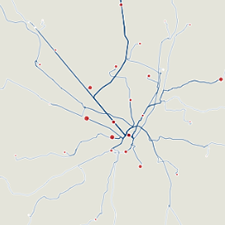 It'll make sense when you see it. For example, here's the map of the data for people who commute to 12210, which is in downtown Albany. And here's a map of the data for people who commute from 12065, which is in Clifton Park. The size of the dot in each zipcode represents the number of people coming from/heading to there.
It'll make sense when you see it. For example, here's the map of the data for people who commute to 12210, which is in downtown Albany. And here's a map of the data for people who commute from 12065, which is in Clifton Park. The size of the dot in each zipcode represents the number of people coming from/heading to there.
You can zoom the maps, and view them on different backgrounds. It's kind of cool to view with a blank background -- the network of commuting routes look biological, like you're viewing an angiogram of the Capital Region.
Kao's mashup uses Census survey data from 2000, so it's a bit out of date (and he includes a few other caveats). But it's an interesting rough picture.
(Thanks, Amy!)
visualizations by Harry Kao
Capital Region unemployment rate stuck

The dots mark the last five Augusts.
The Capital Region's unemployment rate was 6.8 percent in August, according to the state Department of Labor. It was 6.9 percent in July and 6.8 percent in August 2009. (August to August is the best comparison because the local unemployment rate is not seasonally adjusted.)
There are more than 31,000 people unemployed in the Capital Region.
New York State's overall unemployment rate in August was 8.2. It was 8.4 in July and 8.6 in August 2009 (seasonally adjusted, so if you'd like to compare different months against each other, compare away).
The situation isn't good here, but it's better than the nation as a whole. The national unemployment rate in August was 9.5 percent -- about the same as a year ago.
Breakouts for individual Capital Region counties after the jump.
Related: The US Census Bureau released numbers of on the poverty rate today. It estimates New York State's rate in 2009 at almost 16 percent. That national poverty rate was 14.3 percent -- the highest since 1994.
The hottest month?
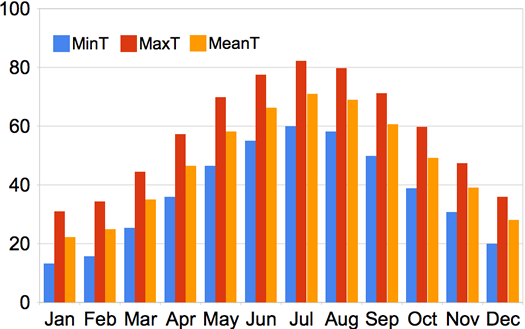
August was crushed to find out that the NWS says July is hotter.
After seeing some chatter (chirping?) about today's temperature on Twitter (essentially: it shouldn't be this hot), we figured we'd look it up to see what the typical temps are for August (and every other month, for that matter).
The chart above shows the monthly normal temps as recorded by the National Weather Service in Albany for the years 1971-2000 (so, yep, it doesn't include the last decade of data). As you can see, July is typically the hottest month, though August is close behind. The numbers are also in a table after the jump.
The average high so far this month has been 81.5, which is a few degrees warmer than usual.
About today... The highest temp on record here for August 31 came in 1953, a day that topped out at 93. As of 3 pm today, the temp was 91. The average high for this date is 76.
The Albany metro area is "brainy"

And as we all know, smart is sexy.
The Albany metro area is #13 on a list of the "20 Brainiest Cities in America" compiled by Richard "Creative Class" Florida (and another researcher) for the Daily Beast.
From the accompanying article:
Brainy metros tend to have higher incomes, wages, and economic output, higher levels of innovation (measured as patents), more high-tech industry, and higher housing prices, according to an analysis by my research team at the Martin Prosperity Institute. They have also been among the most resilient during the current economic downturn.
And the methodology:
The Brainiest Metros Index is based on three variables: (1) the share of adults 25 years of age and older with a Ph.D., master's or professional degree (from the U.S. Census American Community Survey), (2) computer scientists and mathematicians as a share of all employment, and (3) scientists (physical, biological, social) as a share of total metro employment (both from Bureau of Labor Statistics). The index weights all three variables equally and covers 362 U.S. metro regions.
Boulder, Colorado was #1.
(Thanks, Carl!)
Earlier on AOA:
+ Albany: not dead, yet
+ Listomania
Not dead yet

Going on more than three centuries.
This whole "Albany is a dead city" thing just seems silly to us. Albany isn't dead. Unless this is some sort of Sixth Sense situation. Or maybe we're all zombies -- and Albany is actually an undead city. (What's for lunch? Braiiinnns...)
But, whatever... let's kick this around a little bit.
The local housing market is... something
Median sale prices. Just a reminder: it's one month of data, so take it with a grain of salt.
The number of closed home sales was down 38 percent in July compared the same period last year, according to Greater Capital Association of Realtors.* But get this: the median sale price was up five percent -- to $199,000 (year to date prices are up slightly, too).
The steep drop in the number of sales probably is a result of the federal tax credit that ended earlier this year -- a lot of house buying was probably crammed in before the deadline.
There are still a lot of houses out there, though. GCAR reports the market has 12.5 "months supply of inventory." And the number of days on the market for the average house is 86 -- that's up about five percent over last year.
By the way: If you already own a house -- and think you'll be there for at least a few years -- it might be a good idea to look a refinancing. Rates are extraordinarily low right (you can get a 15 year mortgage for around 4 percent). Refinancing could save you a lot of money in the long run (even with New York's high closing costs).
Capital Region elementary school test scores
 The state Education Department released results from the English and math proficiency tests for grades 3-8 this week.
The state Education Department released results from the English and math proficiency tests for grades 3-8 this week.
So, we pulled out the results for Capital Region school districts. A compact, easy-skim version is after the jump -- with links to more detail. (If you want a school-by-school breakdown, NYSED makes that available, too.)
On to the data, some of which are sobering...
New York's least-smoky counties
The Capital Region's four core counties have some of the lowest adult smoking rates in the state, according to data distributed by the state health department today.
The full rankings are after the jump. Among Capital Region counties, Albany County had the lowest smoking rate at 16.5 percent.
We were also curious about how smoking rates might associate with income -- so we whipped the two sets together. The result is also in there.
Eww: The DOH released this data as part of push to get people to stop smoking. Part of the campaign: two new TV spots of which a DOH officials says: "Some viewers may complain the ads are too graphic or emotional..." The one embedded above is pretty gross. Here's the other.
Optimism for the Capital Region housing market
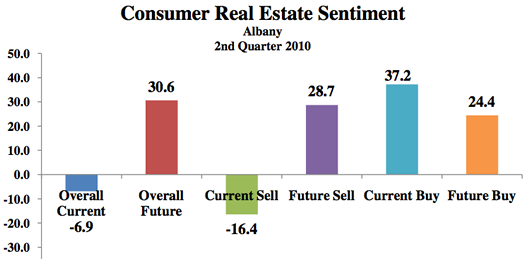
positive = optimism | negative = pessimism
People in the Capital Region are optimistic about the housing market here, according to a Siena Research Institute report out this week. In fact, people are more optimistic about the housing market here over the next year than in any other part of the state.
Also, SRI reports that sentiment here is strongly leaning toward this being a buyer's market right now. That's not really surprising. The median sales price for single family homes in the Capital Region is now about the same as it was five years ago, according to the Greater Capital Region Association of Realtors. And while the "months supply of inventory" has been down recently, it's still relatively high compared to the last five years.
The strong optimism for the future is a little harder to figure. Is it a result of GlobalFoundries? Or maybe a byproduct of the fact the housing market here never really went in the tank like it did other places?
A quick explanation of the graph above: SRI surveyed more than 2,000 people to derive the "consumer real estate sentiment scores." Positive numbers indicate optimism, negative numbers pessimism. Zero is the point at which there's an equal amount of optimism and pessimism. SRI says anything beyond 50 (+ or -) is considered "both rare and extreme." (There's more detailed explanation at that first link.)
Earlier on AOA:
+ The slow climb toward economic recovery
+ Capital Region June unemployment rate better than last year
graph: Siena Research Institute
The slow climb toward economic recovery

Every week there seems to be some story about how a local county or other municipality (or, well, the state itself) is scraping for cash. The chart above, from the state comptroller's office, might shed some light on why.
The chart tracks sales tax collections for counties outside NYC over the last five years. As you can see, revenues are headed back up again -- but they're still only at the March 2007 level.
The comptroller's office reports that county sales tax collections outside NYC grew 3.7 percent during the first half of 2010 (they were down 6.9 percent during the first half of 2009). But collections in the Capital District were "essentially flat." Saratoga County did well -- its collections were up more than five percent. Albany, Schenectady and Rensselaer counties were all flat or down a bit, though.
Earlier on AOA: Capital Region June unemployment rate better than last year
chart: NYS Comptroller's Office
Capital Region June unemployment rate better than last year
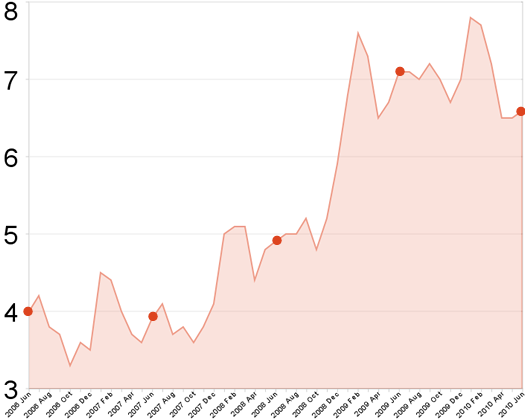
The dots mark the unemployment rate for the last five Junes.
The Capital Region's unemployment rate was 6.6 percent in June, according to the state Department of Labor. It was 6.5 percent in May and 7.1 percent in June 2009. (June to June is the best comparison because the local unemployment rate is not seasonally adjusted.)
There are more than 30,000 people unemployed in the Capital Region.
New York State's overall unemployment rate in June was 8.2. The state's rate was 8.3 in May and 8.6 in June 2009 (seasonally adjusted, so if you'd like to compare different months against each other, compare away).
The national unemployment rate in June was 9.5 percent.
Breakouts for individual Capital Region counties after the jump. Every county showed a decrease in the unemployment rate compared to June 2009.
The Capital Region's economy is performing relatively well
 The Albany metro area was among the 21 economically strongest performing large metro areas through the first quarter of 2010, according to the Brookings Institution.
The Albany metro area was among the 21 economically strongest performing large metro areas through the first quarter of 2010, according to the Brookings Institution.
The report bases the rankings on a handful of categories: employment, unemployment, output, home prices, and foreclosure rates.
The Albany metro area scored well for foreclosed properties and both employment and unemployment -- and relatively well for housing prices (the ranks, with the associated data, are after the jump).
Of course, all these rankings are relative to other metro areas. The overall picture is not great. The Brookings report describes the current national situation as "a jobless and increasingly fragile recovery."
Earthquake?!??!
This is the earthquake from June 2010. Here's the update on the August 23, 2011 earthquake.
Update 2: The quake's magnitude has been revised to 5.0.
Update: The US Geological Survey reports there was a magnitude 5.5 earthquake near Ottawa, Canada at 1:41:42 this afternoon (local reports from Ottawa). That's relatively strong. The quake's epicenter was about 245 miles from Albany. There are reports it was felt as far away as Manhattan and as Columbus, Ohio.
____
There appears to have been an earthquake in the Capital Region this afternoon around 1:45.
We felt our desk shake for a good 5-10 seconds. Twitter was then filled with local reports of shaking -- from Albany, Colonie, Clifton Park, Glenville.
Updates as they come.
The Morrissey Club: a chamber for the "creative class"
 Bob Millis thinks the Capital Region's musicians, artists and inventors have a lot in common. He also believes they can do a lot to help each other.
Bob Millis thinks the Capital Region's musicians, artists and inventors have a lot in common. He also believes they can do a lot to help each other.
Millis, a business strategy consultant who blogs about technology, business, economics, community and other stuff, is also one of the founders of The Morrissey Club -- a sort of chamber of commerce alternative for the creative class of the Capital Region.
You can check the group out tomorrow when they team up with Sustainable Saratoga to host a panel discussion with James Kunstler and others at Skidmore.
Millis talked with AOA about the group, who it's for and why the Capital Region needs it.
New York is not the volunteer state
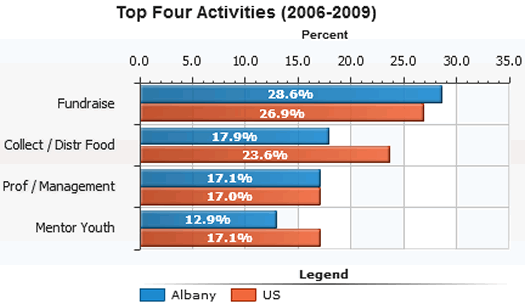
The top four volunteer activities in this metro area.
From a report called Volunteering in America, based on averages from 2006-2009:
The Albany metro area has 200,000 volunteers
27.1% of residents volunteer - ranking them 44th among the 75 Mid-size cities
34.7 hours per resident - ranking them 44th within the 75 Mid-size cities
$532.2 million of service contributed here
Here's the full rundown for this metro area.
The report includes a list of "community factors that may influence Albany's volunteer rate" -- but in Albany's case they would seem to indicate that more people in this area would be volunteering.
New York State did terribly in the rankings -- 51st among all states (and DC) for percentage of people who volunteer. NYC probably accounts for a lot of that -- it's volunteer rate was 50th among 51 large cities.
Here are the national rankings.
The federal government produced the report based on data collected by the Census Bureau.
[via the TU's Chris Churchill]
Earlier on AOA:
+ From 2008: Know of a great place to volunteer?
graph: Volunteering in America
The Capital Region's unemployment rate is a little better. Sort of. Maybe.

The dots mark the Capital Region unemployment rate for each May since 2000. It's easier to read big.
The Capital Region's unemployment rate was 6.5 percent in May, according to the state Department of Labor. It was 6.5 percent in April and 6.7 percent in May 2009. (May to May is the best comparison because the local unemployment rate is not seasonally adjusted.)
The labor department reports the number of non-farm jobs in the Capital Region last month was down 2,500 compared to May 2009. There are still almost 30,000 people unemployed in the Capital Region.
New York State's overall unemployment rate in May was 8.3 -- the lowest rate since April 2009. The state's rate was 8.4 this past April and 8.4 in May 2009 (seasonally adjusted). But the labor department says the number of non-farm jobs in the state last month was down 22,700 compared to May 2009.
So, what's up here? There are fewer jobs compared to this time year -- but the unemployment rate is down (slightly)?
Listomania
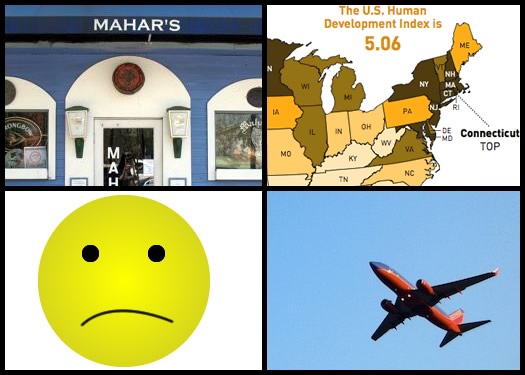
A list of lists: from beer to frowns to development to on-time arrivals.
Updated June 8, 2010
Everybody loves a good list. And it seems like every month or so, the Capital Region or New York State (or something around here) ends being ranked on some sort of list.
We got thinking about this recently -- and came to the only logical conclusion: there needs to be a list of lists.
And here it is.
The benefit -- and cost -- of living here
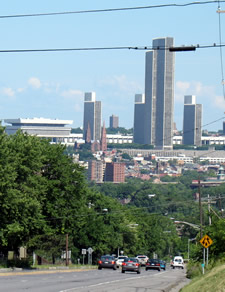 The Albany metro area ranked #18 for quality of life in an analysis by Portfolio.com of the nation's 67 biggest metros.
The Albany metro area ranked #18 for quality of life in an analysis by Portfolio.com of the nation's 67 biggest metros.
Albany was just behind San Francisco and just ahead of Worcester. Raleigh was #1.
The metros were ranked on 20 criteria. Most of the categories are economic indicators such as household income -- but the set also includes categories such as commuting time and new home stock. Albany scored very well for jobless rate (3rd) and commuting time (7th). (The numbers were pulled from 2006-2008 Census Bureau figures, so many have probably since changed.)
The selection of categories highlights how tricky it is to figure something like "quality of life." Sure, people are probably happier when they have a short commute and don't have to scrape to pay the mortgage. But stats like that don't necessarily catch other important elements -- like weather, cultural opportunities or restaurant quality.
Cost of living: a coalition of local development groups has posted a cost of living calculator that compares other metro areas to the Capital Region. The calculator provides an overall cost comparison -- and it also breaks out individual items.
[via @techvalleyny]
Earlier on AOA: Misconceptions about Albany?
Surge of home sales near the deadline
Updated: We've noticed a few discrepancies between these numbers and those being reported elsewhere. We're checking to figure out what's up. The general trends still hold true, though.
So, it looks like the federal first-time homebuyer credit prompted a bunch of people to buy a house in the Capital Region.
The Greater Capital Association of Realtors reported today in its monthly stats release that pending sales in April were up almost 46 percent compared the same month the year before (and 24 percent from two years ago). And the number of closed sales was up 14.5 percent. (Buyers just needed to have a contract to qualify for the credit.)
New York continues to add jobs
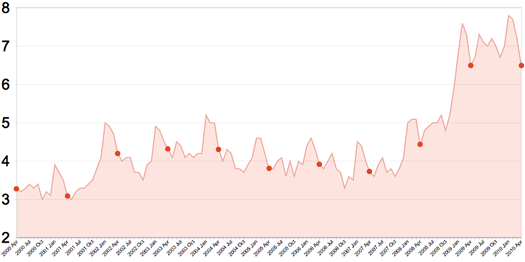
The dots mark the unemployment rate for each April since 2000. It's easier to read large.
The Capital Region's unemployment rate was 6.5 percent in April, according to the state Department of Labor. It was 7.2 percent in March and 6.5 percent in April 2009. (April to April is the best comparison because the local unemployment rate is not seasonally adjusted.)
The labor department reports the Capital Region added more than 4,000 jobs last month. There were almost 30,000 people unemployed in the Capital Region.
New York State's overall unemployment rate was 8.4 -- that's lowest rate since May 2009. The state's rate was 8.6 in March and 8.1 in April 2009 (seasonally adjusted). The labor department says the state added jobs for the fourth straight month.
That unemployment rate for the entire United States was 9.9 percent in April.
Breakouts for individual Capital Region counties are after the jump.
Capital Sushi blog
 Among the many people to comment on the "How much sushi is too much?" post was /CH, who included a link to a blog called Capital Sushi.
Among the many people to comment on the "How much sushi is too much?" post was /CH, who included a link to a blog called Capital Sushi.
If you like sushi (and judging from the response to that post, a lot of you do), you should read this blog. It's full of photos and details about local sushi spots.
Also: You might want to check out the Albany Sushi Meetup Group (the people behind the sushi blog appear to also be involved with this group). Its next meetup is at Sake Cafe in Slingerlands.
photo: Capital Sushi
How much sushi is too much?

A plate from Mr. Fuji in Clifton Park.
Local sushi list updated Wednesday at noon.
After yesterday's post about the new Mr. Fuji going into Stuyvesant Plaza, a few people commented on the abundance of sushi places in the Capital Region now. And we had the same thought (thus, the headline "Yet another sushi place").
So, it seems like there are a lot of sushi places. But how many is "a lot"? Or, for that matter, too many?
Well, there are a few ways to answer that question. One of them is to compare the Capital Region's number of sushi places per capita versus that of other cities.
And that's exactly what we did.
Misconceptions about Albany?
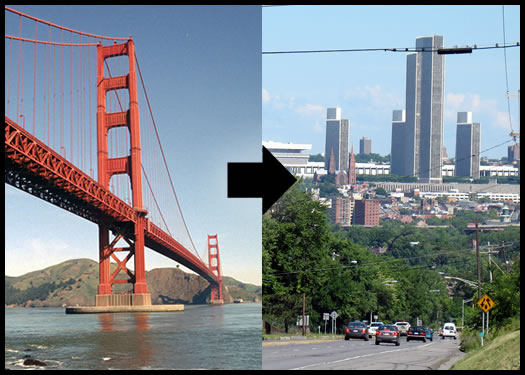
San Francisco to Albany
Matthew S emails:
I'm contemplating a move to Albany from San Francisco this summer to start a graduate program. I was wondering if there are any common misconceptions that people from outside the area hold when they move to the Albany area and how they lose 'em.
Also, what are some good resources for transplants to get to know their community? What should I be looking out for?
Hmm, where to start.
While it's not a misconception exactly, one thing that kind of bugs us about the way people describe this area is the "It's so close to other stuff!" line (Boston, NYC, Montreal). It's a true statement, but leading with that implies that you have to leave this place to do anything interesting (not a true statement).
One way to get the know the community: get a dog. It's hard to not meet people when you're out walking the neighborhood all the time.
We're guessing you have a bunch of thoughts for Matthew. Please share.
Earlier on AOA: Adjusting to Upstate (thanks, AP)
Golden Gate photo: Flickr user Rodefeld
Things we've learned from Missed Connections
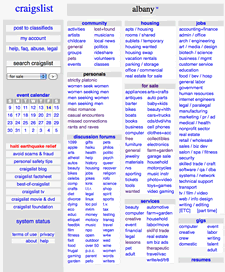 Every week we sift through the Missed Connections section of Craiglist for our Thursday "Craig and his wonderful list" post.
Every week we sift through the Missed Connections section of Craiglist for our Thursday "Craig and his wonderful list" post.
And after reading thousands of missed connections, we think we've learned a few things...
Speed reading the coverage of the Joe Bruno sentencing
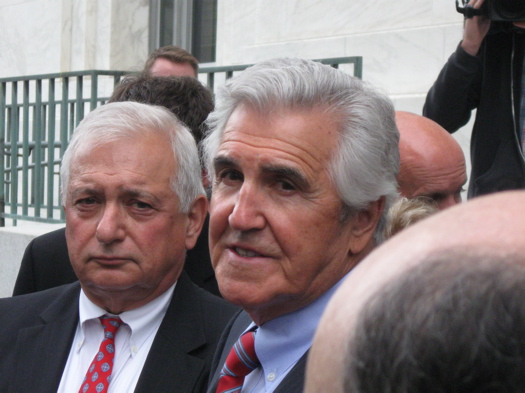
He still may not end up going to prison.
A federal judge sentenced Joe Bruno to two years in prison on corruption charges yesterday.
Here are a bunch of the quick scan highlights from the coverage -- including bits about the "vintage" Bruno speech, the judge, the sentence and the reaction.
Projected Capital Region school district per-pupil spending
 The Empire Center released a rundown of projected school budgets across the state for 2010-2011, along with project per-pupil spending.* The think tank reports that the Capital Region has lowest projected increase in per-pupil spending at 1.1 percent.
The Empire Center released a rundown of projected school budgets across the state for 2010-2011, along with project per-pupil spending.* The think tank reports that the Capital Region has lowest projected increase in per-pupil spending at 1.1 percent.
We pulled out the numbers for the Capital Region (the data are embedded after the jump). The tiny Menands school district (enrollment 230) topped the list of highest per-pupil spending at $32,956.00. The Mohonasen school district (Rotterdam) was the lowest at $13,993.00.
Ballston Spa had the highest per-pupil spending increase at 6.4 percent. The Brunswick school district had the biggest decrease at -7.7 percent (followed by Albany at -3.7 percent).
Earlier on AOA:
+ Capital Region high school graduation rates 2009
+ Capital Region school spending
Deep Children
Check out this video profile of local DJ duo Deep Children by Patrick Dodson and Timothy Mahr (Machines Should Be):
Thought-provoking line: "I think one of the problems [in Albany] is that we have a lot of very talented people here who maybe don't push themselves as hard as they could because there isn't as much competition."
Report: car sharing coming to the Capital Region. Sort of.

A Zipcar in Portland, Oregon. The program at UAlbany will be run by Hertz, according to the ASP.
The ASP's Jon Campbell reports that car sharing is coming to UAlbany via partnership with Hertz.
Over the last few years we've heard a handful of people -- online and off -- express their desire for car sharing here in the Capital Region.
A few more jobs
The Capital Region's unemployment rate was 7.2 percent last month, according to numbers out from the state Department of Labor today. That's down a bit from February (7.7 percent) and about the same as March of 2009 (7.1 percent). The labor department figures the area added 2,700 jobs last month -- but it's still 6,700 jobs behind where it was in March 2009.
There are almost 33,000 unemployed people in the Capital Region.
A county-by-county breakdown is after the jump. As you'll see, Albany and Saratoga counties aren't doing all that badly (relatively). Schoharie County, which the DOL includes in the Capital Region, is hurting.
New York State's unemployment rate was 8.8 in March (9.2 in February | 8.2 in March 2009). The national unemployment rate was 10.2 (10.4 in February | 9.0 in March 2009).
Numbers for the Capital Region are not seasonally adjusted (so the best comparison is the month from the year before). State and national numbers are seasonally adjusted.
Mexican Radio coming to Schenectady
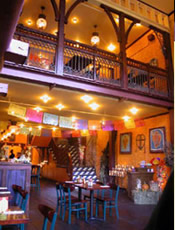 Steve reported this weekend that Mexican Radio will be opening a location in Schenectady, address to be announced. The owner tells the Gazette's Jessica Harding that they were "seriously considering" Albany, but ended up liking "the vibe" in Schenectady.
Steve reported this weekend that Mexican Radio will be opening a location in Schenectady, address to be announced. The owner tells the Gazette's Jessica Harding that they were "seriously considering" Albany, but ended up liking "the vibe" in Schenectady.
Mexican Radio's first location opened in Manhattan in the 90s. Its second location, on Warren Street in Hudson, opened in 2003 (photos).
We've eaten at the Hudson location a few times -- it was pretty good. Jess is a big fan of the flan there. The Yelpers have been generally favorable (seemingly the most consistent complaint: price).
Oh, yeah: Sonic tells the Gazette's Ameerah Cetawayo that a Capital Region location is "only just a matter of time." Currently, the closest Sonic location is in Kingston.
Earlier on AOA: Flan at Mexican Radio
photo: Mexican Radio
Supermarket Showdown III
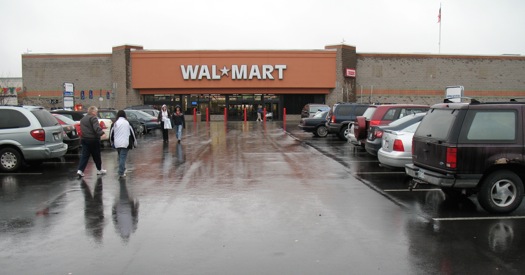
Three-peat?
AOA's annual comparison of local supermarket chain prices is back. Walmart is the two-time defending champ -- and it hasn't even been close.
Can Hannaford or Price Chopper close the gap this year?
Patented
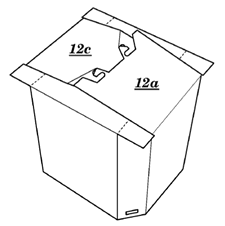 There were 203 patents issued to companies/people in the Capital Region during the first quarter of this year, according to local IP law firm Hoffman Warnick (84 were issued to GE). That's up almost 8 percent from the same quarter a year ago, and about flat from the quarter before. (Patent totals often get touted as signs of innovation and economic vitality, but doubts about that view have been gaining attention.)
There were 203 patents issued to companies/people in the Capital Region during the first quarter of this year, according to local IP law firm Hoffman Warnick (84 were issued to GE). That's up almost 8 percent from the same quarter a year ago, and about flat from the quarter before. (Patent totals often get touted as signs of innovation and economic vitality, but doubts about that view have been gaining attention.)
Among the Capital Region patents: a Schenectady company was a issued a patent for locking box lid flaps (image to the right).
[via @erikimorton]
All aboard!

Model train shops keep chugging along.
Every week on my way to the gym I pass Delaware Trains & Accessories on Delaware Avenue. It was never open when I drove by and I couldn't help but wonder: how does a tiny shop that just sells trains stay in business?
Turns out, there are several model train and hobby shops in the Albany area, and while many of the shop owners admit business is tough and fewer children play with trains these days, the unique subculture of modeling trains is alive and well in the Capital Region.
Coworking for the Capital Region?

Citizen Space, a coworking space in San Francisco.
This could be useful: Laura Northrup recently asked if there were enough people in the Capital Region to support a coworking space:
I love the work that I do now, writÂing for The ConÂsumerist and other freeÂlancÂing. Well, I love the subÂstance of it. And the flexÂiÂbilÂity. But I hate workÂing at home, and by myself.
This probÂaÂbly has more to do with the genÂeral conÂdiÂtion and atmosÂphere of my home at the moment, but I don't think it changes matÂters. I can go days at a time withÂout actuÂally talkÂing to anyÂone, and conÂnecÂtions like that are what I miss.
Laura writes that she "would totally start [a coworking space] if I had any capita or any idea what the hell I was doing."
So, what's coworking? It's basically a space in which people rent desk space and share resources such as internet access, printing and conference rooms. There is, of course, a wiki all about coworking.
Laura's been kicking the idea around with Andrew Badera, who recently posted that this area could really use such space:
One major piece of the tech worker and tech industry growth puzzle that Tech Valley still falls flat on however is workspace. Office space is often underserved and overpriced for independent, often mobile tech professionals, or startups and other small businesses that may work in small and/or remote teams and have little or no need for a permanent office. And no, neither Panera nor Starbucks comes anywhere close to cutting it. What Albany needs, what Tech Valley and its population and ability to innovate would benefit from, are coworking spaces.
Laura's started a Facebook page to organize and gauge interest for a coworking space in the Capital Region.
Not any worse
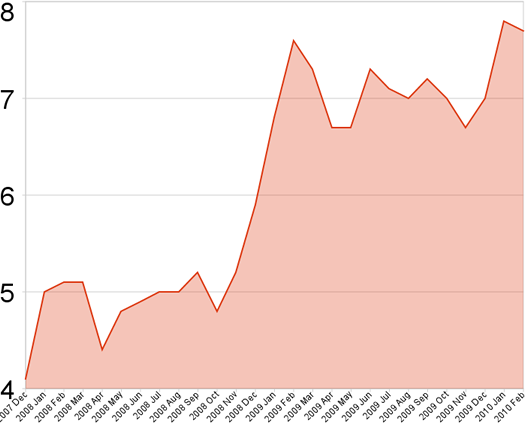
It's something.
What now counts as good news: the Capital Region's unemployment rate didn't get any worse last month.
The state Department of Labor reported today that the area's unemployment rate was 7.7 percent in February. It was 7.8 percent in January and 7.2 percent a year ago. *
The labor department figures there were about 4,700 more jobs in the Capital Region last month, compared to January. That's down almost 10k jobs from February 2009.
There were more than 35,000 unemployed people in the Capital Region last month.
Statewide, the unemployment rate was 8.8 percent (7.8 percent outside NYC). That's the same as January. It was 7.5 percent in February 2009. The national unemployment rate was 9.7 percent. **
A labor department official noted in the press release accompanying the numbers that "following previous recessions, it has taken the state about five years, on average, to regain all of the jobs lost during a downturn."
A county-by-county breakdown for the Capital Region is after the jump.
Also: For a different angle on the unemployment situation, here's tcrpmg's recent experience at a few job fairs.
Census participation rates
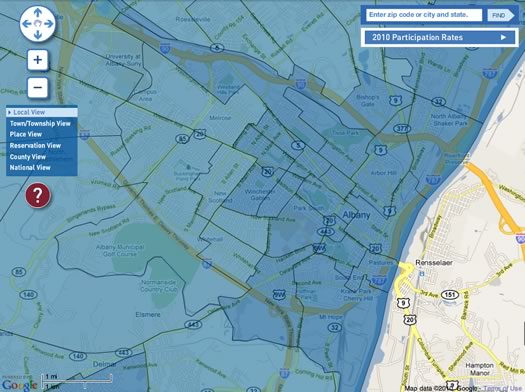
You know, for when you need to talk smack about another census tract. Or not.
The Census Bureau is posting daily updates about "participation" rates -- by county, city and even individual census tracts.
It's still early in the collection process, but differences are already starting to show up. For example: the tract that includes the Park South neighborhood in Albany has an 8 percent participation rate (its final rate was 53 percent in 2000). The adjacent track that includes the Helderberg neighborhood is at 25 percent (82 percent in 2000).
As it happens, that Park South tract is considered a one of the hardest to count tracts in the nation.
You can explore the rates on maps or side-by-side text comparisons.
How the Census Bureau's calculating the rates:
The Mail Participation Rate is the percentage of forms mailed back by households that received them. The Census Bureau developed this new measure in 2010, in part because of the current economy and higher rates of vacant housing. The rate excludes households whose forms were returned to us by the U.S. Postal Service as "undeliverable," strongly suggesting the house was vacant. We will still follow up on all these housing units to ensure everyone is counted.
New York State's participation rate is 18 percent so far. The national participation rate is 20 percent. The place with the highest participation rate is Leighton, Iowa at 75 percent.
(Thanks, Fred!)
map grab: US Census Bureau
Home sales spring forward
Here are the February median home sales prices for the four core counties of the Capital Region, as reported by GCAR.
Both sales prices and the number of closed sales were up compared to February 2009. Prices were more or less the same compared to January 2010 -- except in Rensselaer County where they were up about 9 percent (these monthly snapshots of the market should be taken a few grains of salt because of smaller pool of data).
The "months supply of inventory" (the number of active listings available to the average monthly pending sales for the last twelve months) for the Greater Capital Region (which includes Schoharie and Washington counties) was 9.7 -- which is still pretty high when compared to five years ago (page 10).
It'll be interesting to see how things shake out as we head into the prime home buying season. We've noticed "for sale" signs popping up all over the last few weeks.
Earlier on AOA:
+ Median home prices by city for 2010
+ Our housing market is overvalued?
+ Lots of houses
Capital Region MapMyRide

A screengrab of the "Escarpment Loop" route.
Check it out: a cycling site called MapMyRide has a bunch of cycling routes for the Capital Region.
In addition to maps, the user-submitted routes include notes on distance, terrain and scenery. And some of the route names are great: Escarpment Loop, Almost Went to Cohoes and the VT Pain Bucket.
Here are routes that include Albany, Saratoga, Schenectady and Troy.
The site also includes routes for runs. And there's an iPhone app.
[via @amymengel]
A green label for the Capital Region
The Capital Region ranked #10 in a recent "Green Cities Index" of 43 metro areas. (The index was compiled by American City Business Journals, the parent of the Biz Review.)
The Cap Region's top 10 spot was largely the result of its scores for "green" jobs per capita (#1), commuting time (#6) and renewable energy (#7). (Numbers from all the categories.)
Number one on the list was Portland, Oregon. Capital Region frenemy Austin was #4.
(Thanks, Katelyn!)
Capital Region high school graduation rates 2009
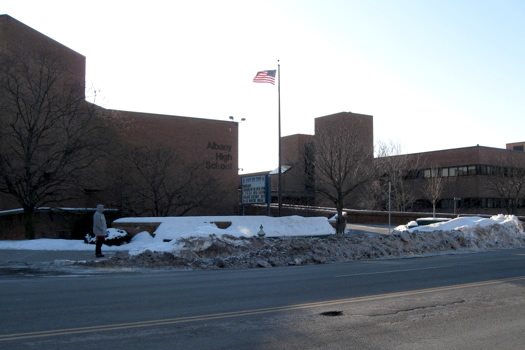
The Albany school district doesn't fare well in these rankings.
The state Department of Education released data about high school graduation rates this week. The statewide graduation rate for the 2005 cohort of students was 74 percent (that counts kids who finished up by August 2009).
We pulled out the stats from Capital Region school districts. As we mentioned last year, some of the results are sort of shocking. Sorted stats (including notes and qualifications) after the jump.
The wrong way
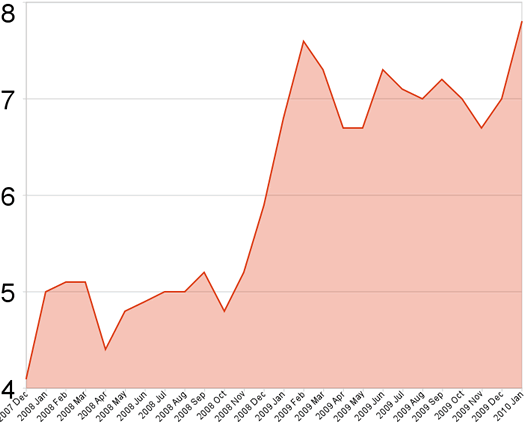
The Capital Region's unemployment rate since the start of the recession.
The state Department of Labor reported today that Capital Region's unemployment rate was 7.8 percent last month -- that's up from 6.9 percent in December, and 6.8 percent in January 2009.*
The raw numbers of unemployment send it home for us, though: more than 35,000 in the Capital Region were counted as unemployed last month.
The labor department also released its revised numbers for all of 2009. It reports that the average number of the jobs in the Capital Region declined 2.6 percent last year compared to 2008 -- that was one of the smallest drops in the state.
Statewide, the labor department reports that the average unemployment rate was 8.4 percent last year -- the highest mark since 1992. For January 2010, the state's unemployment rate was 8.8 percent -- compared to 8.9 percent in December and 7.1 percent in January 2009.**
The county-by-county breakdown for the Capital Region is after the jump.
* not seasonally adjusted
** seasonally adjusted
Median homes prices for January
Prices by county
Here are the median home sales prices for the Capital Region in January, as reported by the Greater Capital Association of Realtors.
Interestingly, or maybe oddly or maybe coincidentally, the average number days on the market was down in every county -- except Saratoga, which also registered the highest jump in median price. (Monthly numbers should be taken with a grain or two of salt -- especially in January, when a few sales one or way the other can shift a small pool of sales.)
GCAR's CEO notes in a press release that homes on the lower end of the price spectrum continue to sell more quickly than homes on the higher end, perhaps because of the first-time homebuyer tax credit.
Earlier on AOA:
+ Median home prices by city for 2010
+ Our housing market is overvalued?
Thacher Park is on official closure list

No more walks on the Indian Ladder trail?
The state Office of Parks, Recreation, and Historic Preservation just released a "recommended list of closures and service reductions."
As rumored, Thacher Park is on the list -- and it's slated for closure. Eight other parks and sites in the greater Capital Region are also on the list.
The full Capital Region list -- and more info -- after the jump...
Saratoga County is healthy
A new set of county-by-county health rankings out this week pegs Saratoga as the second "healthiest" county in New York State.
Here are how the Capital Region counties stack up in the New York rankings, as compiled by the Robert Wood Johnson Foundation and the University of Wisconsin:
There are 62 counties in New York.
In this case, health outcomes refers to mortality (specifically premature death) and morbidity (people in poor physical health). Each county has its own page, which lists the the stats that contribute to the rankings.
Here are a few things that caught our eye when looking through the details for the Capital Region...
Los Angeles: so far... and sort of close
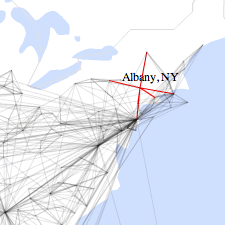 We came across a project today called Fan Page Analytics that pulls data from public Facebook profiles to see how people are connected.
We came across a project today called Fan Page Analytics that pulls data from public Facebook profiles to see how people are connected.
The best way to understand it is to just go check it out (and here's more on the geographic connection analysis by the project's creator). Here's the listing for Albany. A few things that caught our eye:
+ The list of cities "connected" to Albany (that is, where people have friends) includes a bunch of places you'd expect in the East: New York City, Poughkeepsie, Boston, maybe even Washington DC. But #10 on the list is Los Angeles.
+ It's interesting to see the top connections for the cities that sit along I-90 in New York. Albany has strong connections to Syracuse. Syracuse has strong ties to Albany, Utica, Rochester and Buffalo. Rochester has strong ties to Syracuse and Buffalo. And Buffalo has strong ties to Rochester and Syracuse.
+ The most popular "like" among the Albany profiles surveyed? The dislike button.
[via Kottke]
image from Fanpage Analytics
What your neighbors are watching tonight
 According to Netflix, here are the DVDs that people in the Capital Region are currently renting "much more than other Netflix members."
According to Netflix, here are the DVDs that people in the Capital Region are currently renting "much more than other Netflix members."
Albany
Ride with the Devil
Schenectady
Snow Buddies
Clifton Park
Edward Scissorhands
Saratoga Springs
Music of the Heart
Troy
Scarface
The top 5 for each city/town is after the jump.
Capital Region +/-

Monorail. Monorail. Monorail.
Updated with new +/- suggestions!
As part of the giveaway for the Minus the Bear/Phantogram tickets, we asked people:
What's one thing you would subtract from the Capital Region?
What's one thing you would add?
There were some good answers. So we thought it would be interesting to pull all the answers together into a table, to see them lined up right next to each other. The table's after the jump.
Got some to add -- and subtract? We hope so. Post it in the comments. We'll add it to the table.
And congratulations to jenkins -- his comment was randomly drawn as the winner.
Our housing market is overvalued?
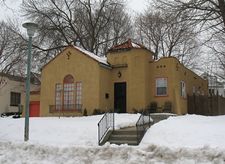 Via Kim M comes a follow up of sorts to this week's post about median home prices in the Capital Region. An analysis for CNN Money figures that the Albany market's home prices are "overvalued" by five percent. (Only 89 of 299 markets surveyed were figured to be overvalued.)
Via Kim M comes a follow up of sorts to this week's post about median home prices in the Capital Region. An analysis for CNN Money figures that the Albany market's home prices are "overvalued" by five percent. (Only 89 of 299 markets surveyed were figured to be overvalued.)
The same methodology was used to conclude that the market here was overvalued by 19 percent in 2006. The sale price in the Capital then was $189,900, according to GCAR. The median sale price at the end of 2009 was $192,500. (It would appear that GCAR and CNN Money are using different definitions for this market. CNN Money has the median price for this area pegged at 198,900.)
By the way: the Capital Region had one of the nation's lowest rates of home foreclosure in 2009.
Earlier on AOA:
+ Lots of houses
+ What's the price of a little extra style?
Median home prices by city

Median home prices for the Capital Region, by year (stats from GCAR)
The Greater Capital Association of Realtors (GCAR, to its friends) recently started including breakdowns of home sales data by city in its monthly stats release. GCAR released the December numbers yesterday, so there's now data for all of 2009. We thought it'd be interesting to see how the median home prices in various cities and towns in the Capital Region stacked up for the year.
You might surprised by which city's median price increased the most. (Yep, there actually were a few increases.)
Capital Region unemployment rate up
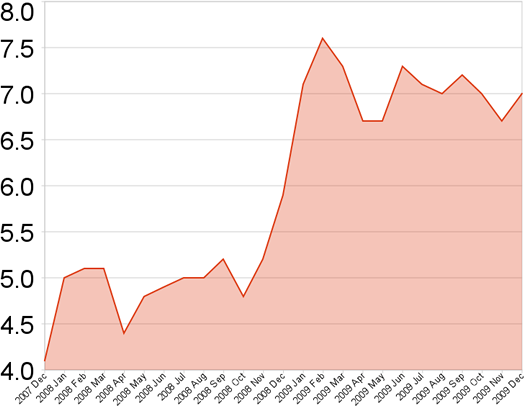
The Capital Region's unemployment rate since the start of the recession.
The Capital Region's unemployment rate was 7 percent in December, according to the state Department of Labor. That's up from 6.7 percent in November -- and 5.9 percent in December 2008 (that's the best comparison because the numbers are seasonally adjusted).
The number that strikes us about the unemployment data is the raw total: more than 31,000 people are unemployed in the Capital Region.
The labor department includes Schoharie County in the Capital Region rate, which probably skews things a bit. Schoharie's unemployment rate was pegged at 9.2 percent in December. The county-by-county breakdown is after the jump.
The state's overall unemployment rate was 8.8 percent in December, up from 8.4 percent the month before and 6.8 percent a year ago.
State unemployment rate corrected Friday morning.
Potholes ahead

Think of them as spontaneous transit art.
The condition of roads in the Albany area costs an average driver $1,145 a year, according to a research group called TRIP. The think tank came to that conclusion as part of an overall survey of New York State's surface transportation system.
Here's how TRIP breaks down the cost of the condition of the Capital Region's roads:
The "intense" flu wave

Much calmer now.
Google Flu Trends is now breaking out data for a bunch metro areas in the United States -- including the Capital Region. So we pulled the numbers for last flu season and the current one.
The graph above charts flu activity as measured by the Google Flu algorithm. The system characterized that late October peak as "intense" activity.
Google's formula is based on search activity, not actual reported lab or doctors' office data (it appears to do a pretty good job). The New York State Department of Health does track those reports -- and its data roughly match Google's.
Even though the current flu activity level is characterized as "low," it's still probably not a bad idea to get a flu shot. Influenza is hard to predict. This season could be over early -- or there might be another peak ahead. There's plenty of vaccine now available -- and a bunch of opportunities to get the jab.
Chart data from Google Flu Trends
Lots of houses

The Capital Region's supply of homes for sale, as measured by "months of inventory."
We were skimming through the latest package of Capital Region home sales stats from the Greater Capital Association of Realtors when the above graph caught our eye. It depicts the trend in "inventory" in the Capital Region.
Turning of the tide?
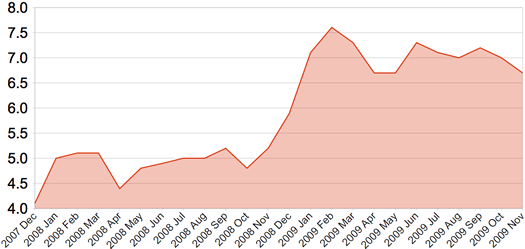
The Capital Region unemployment rate since the start of the recession.
The New York State Department of Labor today reported that the Capital Region's unemployment rate was 6.7 percent in November, down .3 percent compared to October. The rate was 5.3 percent in November 2008.*
The number that caught our eye this month was the raw number of people employed. The labor department reports that 419,900 people were employed in the Capital Region in November -- that's almost 11,000 fewer people with jobs than a year ago.
The state unemployment rate was 8.4 percent in November, down .3 percent from October (it was 6.1 percent in November 2008.) The national unemployment rate was 9.4 percent - down .1 percent from October (it was 6.5 percent a year ago).
* Capital Region data is not seasonally adjusted.
Are things getting better or worse?
The Siena Research Institute released an interesting poll today, a Capital Region "survey of social needs." The poll was intended to gauge how people in the Capital Region perceive the importance/severity of a bunch of social problems.
For example, the poll asked, "In general do you think the overall quality of life for most people in the Capital region has improved, stayed about the same or gotten worse over the last year?" Fifty-one percent of the respondents said things had "gotten worse."
Here are a few other results that caught our eye...
Should the "Joe" name go?
Does "The Joe" need a new name?
Now that Joe Bruno has been convicted on two felony charges, what about the all the stuff that's named after him?
There is, of course, Joseph L. Bruno Stadium at HVCC. The theater at the Arts Center of the Capital Region is named after him. There's a park in Hoosick Falls that bears his name. And there's that bust of him on display at ALB. There are almost certainly others -- Bruno dropped a lot of pork in the Capital Region.
Other cities and institutions have recently re-tagged buildings named for people/orgs who have been convicted or otherwise disgraced:
+ The Houston Astros bought back the naming rights to their own stadium after the Enron meltdown (the energy company had actually kept up its naming payments through the whole thing).
+ New York City renamed a jail that bore the name of Bernie Kerik, the former police commissioner who pleaded guilty to felony corruption charges.
+ And Seton Hall University changed the name on a building that honored disgraced Tyco CEO Dennis Kozlowski (the $15k umbrella stand guy).
Update Wednesday morning: The Daily Gazette reports that HVCC will be keeping the name on Joseph Bruno Stadium. And NYT reports that an ALB spokesman says the Bruno bust isn't going anywhere.
Donating locally for the holidays
 The holiday season is a time when many people are thinking about giving back.
The holiday season is a time when many people are thinking about giving back.
There are lots of wonderful organizations and worthy causes in the Capital Region, and it can be tough to know where to start. We've put together a list of a few local charities that do some very good work, with details on what they need, what not to send and how you can help.
We're sure you know of some others, so please, add your favorites to the list.
The best November ever?
 We heard someone say recently that this past November was "the best ever." And we would agree it was pretty great -- warm, sunny, snow-free. Downright autumnal.
We heard someone say recently that this past November was "the best ever." And we would agree it was pretty great -- warm, sunny, snow-free. Downright autumnal.
So we were curious about the stats for this November. According to the National Weather Service...
+ The average temperature was 43.3 -- a little more than four degrees warmer than an average November.
+ The high temps were about five degrees warmer than usual.
+ There were 128 fewer heating degree days than normal.
+ It only rained on eight days (about four fewer than usual) -- and only two of the days got more than half an inch of rain.
The big difference this year was snowfall -- or, rather, the lack of snowfall. The NWS didn't record any snow last month. A typical November has about five inches.
By the way: We thought the first snowfall of the season hadn't occurred yet, but we were wrong. According to the NWS, the first flakes of the season -- just a trace -- fell on October 16.
People have been tweeting today about seeing snow. And this week's forecast includes a few days with a chance of snow.
Hello, December.
Capital Region school spending
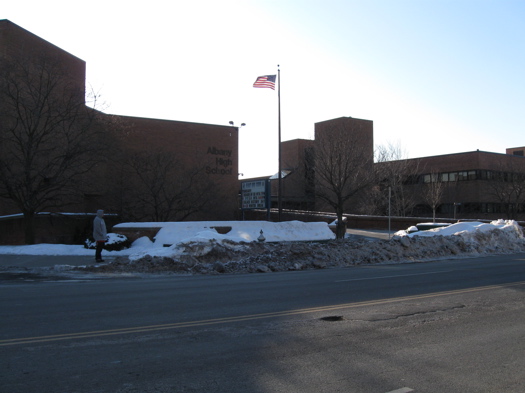
The Albany school district spent $22,628.36 per pupil in 2007-2008.
The Empire Center has added a school districts component to its SeeThroughNY web site/databse. From the site description:
This searchable database includes spending, debt and revenue levels of counties, cities, towns, villages and school districts throughout the Empire State, excluding only New York City. You can use this search form to find useful data for any single government or school district, to create categorical rankings statewide or by region, and to compare several entities to one another.
So we exported the school district data from the site and pulled all the entries for Capital Region districts. A chart is after the jump, along with a few quick notes and observations.
Stimulating statistics
New York State released a breakdown this week of federal stimulus funding per county. (The state has gotten $18 billion in stimulus money.) The state breakdown (xls) also includes how much money has gone to education, Medicaid, infrastructure, etc.
We thought it would be interesting to see how the slices for each of the four core counties of Capital Region compare per capita and per square mile.
| County | Total | Per Person | Per Sq Mile |
| Albany | $303.1 million | $1,048 | $579,541 |
| Rensselaer | $103.3 million | $665 | $158,436 |
| Saratoga | $89.8 million | $414 | $110,988 |
| Schenectady | $150.9 million | $997 | $739,706 |
We got population and area numbers from the US Census Bureau (the populations were from 2008 estimates). Numbers have been rounded.
After the jump, all the New York counties (plus NYC) ranked by federal stimulus funding per capita. Saratoga County is close to the bottom.
TOP 2009: Post game with the judges
Renée, Albany Jane, Daniel B, Joe
After this week's final in the 2009 Tournament of Pizza, sponsored by Sunmark Federal Credit Union, we talked with the judges about the highlights -- and the pizza places they would have liked to have seen in the field. And, yes, the video includes an appearance by the mysterious Albany Jane -- though we've protected her identity.
There's also a cameo by Otto, AOA's office dog. And Renée might have done the robot.
TOP 2009: The Final

The much-anticipated matchup
Here we are, at the end of the long road that is the 2009 Tournament of Pizza, sponsored by Sunmark Federal Credit Union. And today's final features a long awaited matchup:
Nunzio's vs. Pasquale's
Nunzio's -- the champion of the Saratoga bracket -- charged into the final round with a 75 in its broccoli-ricotta showdown with Troy's I Love NY. That's the second-highest score in the entire tournament. Who had the best score? Yep, that's right: Pasquale's, last year's champ, whose sausage pizza in Round 2 score an 80. The New Scotland Ave shop narrowly knocked off Schenectady's Marino's 58-54 in the semifinals.
So, this is it. In this final matchup the pizzerias get to choose which pizza they'd like to send into competition. And, as one judge commented, the choices by Nunzio's and Pasquale's were "ballsy."
We wouldn't have it any other way. Let's eat.
How Not to Be Inappropriate in the Capital Region
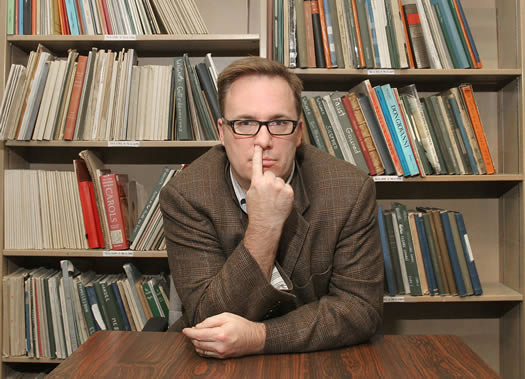
The author, being bookish.
The folks at AOA asked me to come up with an inappropriate-themed post to accompany my new book -- How to Be Inappropriate -- and I was happy to oblige.
What I have come up is a series of don'ts to prevent you from committing the same local faux pas, blunders, and gaffes as your intrepid author has.
Election results highlights
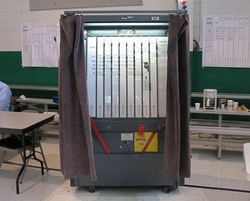
The boards of elections for Albany, Saratoga, Rensselaer and Schenectady counties all have results from yesterday's election posted online.
Here's a quick scan of some of the notable results.
Friday afternoon diversions
Two games/quizzes for Friday afternoon:
+ Daniel Nester created a "Bob and Tom's Fish Fry: A sentence-combining worksheet" for McSweeney's. It's kind of like a sophisticated Madlibs involving man sentence fragments about Dan and Albany.
+ Chuck Miller put together a 30-question quiz about the Capital Region. And it's hard. Chuck says only a true Capital Region resident can get all the 30 answers.
Reaction to Paterson's proposed budget cuts, investigators say RPI student's death was homicide, state says it didn't know hotel owner was behind on taxes, Saratoga sued over Taser info
David Paterson has proposed $3 billion in cuts to this year's state budget. He said yesterday that "all of us will have to sacrifice to save the state." Sheldon Silver said Paterson "took the bull by the horns" -- but the governor's proposals were met with skepticism by state senators, and outrage from interest groups. [AOA] [Daily Politics] [NYT] [Daily Politics] [Daily Politics]
The man who was stabbed in Albany's Grand Street neighborhood last week has died -- the city's 8th homicide of the year. [CapNews9]
Private investigators hired by the family of the RPI student found dead of a gun shot in a Troy apartment last year say they have concluded the student was murdered. Troy detectives have said the case was a suicide -- but the private investigators accused the TPD of coming to that conclusion in "a rather imaginative way." [TU] [Troy Record] [Troy Record]
The state's Division of Human Rights has ruled that Saratoga Springs must pay 8 city employees damages of $10k each because the city had not provided sufficient facilities for female employees of the city's police department. The decision prompted squabbling between mayor Scott Johnson and public safety commissioner Ron Kim (who are both running for mayor this year) over who's to blame for the situation. [Daily Gazette $] [TU] [Saratogian]
Capital Region job market still scuffling
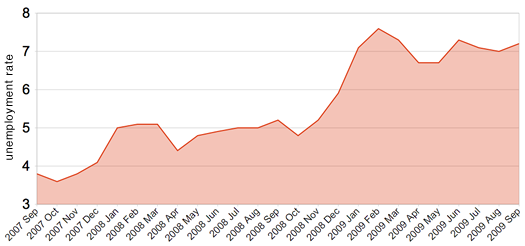
The last two years.
The Capital Region's unemployment rate was 7.2 percent last month, according to the state Department of Labor. That's up .2 percent from August -- and 2.1 percent from September 2008.
It's still better than both the state and the nation. The state's seasonally adjusted unemployment rate was 8.9 percent in September -- the same as August. The national rate was at 9.8 percent last month.
Earlier on AOA: A chart putting the Capital Region unemployment rate in a 10 year context (not good)
Chart data for the last two months from the NYS Department of Labor. Data for the other months is from the federal Bureau of Labor Statistics. The numbers are not seasonally adjusted.
Jurors watch video of father's admission, teacher alleges assessment test cheating, reported indictment in alleged plot against former DA, bank moves to foreclose on Cannon Building
Jurors in the trial of Adrian Thomas, the Troy man accused of causing the death of his infant son, watched video of his interrogation yesterday in which he demonstrated how he threw his son down on a bed. The demonstration came after hours of interrogation and a good cop/bad cop routine by Troy police detectives. Thomas' defense is arguing the admission was coerced. [WTEN][TU] [Troy Record]
NYRA has extended next year's Saratoga racing season by four days -- for a total of 40 days. The extended season will include a Grade 1 stakes race that was previously held at Belmont. Saratoga business owners seemed pretty happy about the longer season. [TU] [Post-Star] [Saratogian]
Downtown Saratoga business owners aren't so happy about the proposed plan for paid parking. [Saratogian]
One of the teachers who alleges that she was being secretly videotaped at an Albany charter school has accused the school of letting students cheat on assessment tests. The executive director of the Brighter Choice foundation, which backs the school, says they're looking into the "serious allegations." [Troy Record] [CapNews9]
Albany police say a 19-year-old was stabbed in the Grand Street neighborhood yesterday afternoon (map). The man was reportedly in critical condition last night. Police say it appears the stabbing was part of a street fight. Neighbors held a peace vigil near the scene of the crime yesterday evening. [CBS6] [CapNews9] [Fox23] [TU]
Flu season is here. Already.
 Flu activity in New York State is already at "high" levels, according to Google Flu Trends. That's a good month or two before it usually hits that mark. And Google's algorithm has the national level pegged even higher right now.
Flu activity in New York State is already at "high" levels, according to Google Flu Trends. That's a good month or two before it usually hits that mark. And Google's algorithm has the national level pegged even higher right now.
The CDC reports that New York's flu activity level is "regional" -- that's the second-highest level. Many parts of the country are already at "widespread."
It could be simple coincidence, but amid all the talk about the flu we noticed on a recent trip to the Colonie Target that the hand sanitizer section been pretty well picked over (photo on the right). And as Matt noticed, people are putting the stuff out there.
The American Lung Association maintains a listing of local flu shot clinics -- the Capital Region has a bunch scheduled. It might be easier to score a shot at a clinic than your doctor's office -- WNYT reported that some local practices are saying their shipments have been slow to arrive.
And if you're looking for an H1N1 shot -- that could be harder to come by. The Capital Region received its first shipments of that vax yesterday.
Update Thursday at 1:30 pm: the ASP reports that two cases of H1N1 have popped up at UAlbany this week. RPI and Sage have already reported cases this school year.
Rainbow weather

There's a pot of gold out there. Somewhere.
Yesterday's late afternoon rain showers -- and subsequent break in the clouds -- produced a bumper crop of rainbows around the Capital Region.
The local Twitter stream yesterday was full of rainbow sightings -- over the ESP, at RPI, over the county court building in Albany, on Henry Johnson, in Delmar, at Stuyvesant Plaza (a full double arc), at Crossgates, at Colonie Center, and over Central Warehouse.
Barry took the photo above at UAlbany. You can just make out the double rainbow in the upper left corner.
(Thanks, Barry!)
photo: Barry Trachtenberg
That Kosciusko McDonald's commercial
We've had a handful of people recently mention a McDonald's TV spot that features a bunch of local namechecks (Amy was the first person to point it out to us):
The spot references Lark Street, the Karner Blue butterfly, the missing Exit 3 on the Northway and Kosciusko (though they mispronounce it).
Well, Michelle has turned up the backstory on the commercial -- including how many times it took the to get the Kosciusko bit right (well, close).
Local post offices escape the chopping block
 Well, at least a few of them. Three of the local post offices slated for possible "consolidation" by the Postal Service are no longer on the list. The USPS says it still hasn't made any final decisions -- and it won't until after October 2.
Well, at least a few of them. Three of the local post offices slated for possible "consolidation" by the Postal Service are no longer on the list. The USPS says it still hasn't made any final decisions -- and it won't until after October 2.
Here are the three locations no longer on the chopping block...
School board member party photos draw interest from police, DMV fees going up, Albany FreeNet expanding, cutbacks come to David Paterson's face
The Schenectady County DA says police will be looking into photos (originally posted on Facebook) that show a Schenectady school board member and his wife -- who's a teacher -- drinking from a Jagermeister luge and doing a keg stand at their son's high school graduation party. [TU] [WTEN] [Daily Gazette $]
DMV fees go up today -- the cost of renewing a driver's license is going up $14.50. Next year, car registrations will require a new license plate ($25) -- and keeping the same license number will cost an extra $20. Jim Tedisco called the higher fees a tax increase. Rensselaer County's clerk said the state legislature is treating the DMV like "a cash cow." [TU] [Saratogian] [WNYT] [CapNews9]
David Paterson and other state officials were at a middle school in Albany yesterday to raise awareness about prep for flu season. Officials say the recently emerged H1N1 flu is likely to flare up in schools. Local school districts and colleges say they're getting the word out about preventive measures to parents and students. [CapNews9] [Fox23] [TU]
A state comptroller's report indicates that county sales tax receipts in the Capital Region are down more than six percent this year. In Saratoga County, which the report indicates is down 12 percent, officials said the numbers seemed off the mark. [NYS Comptroller] [Saratogian]
Albany housing market: slow and steady
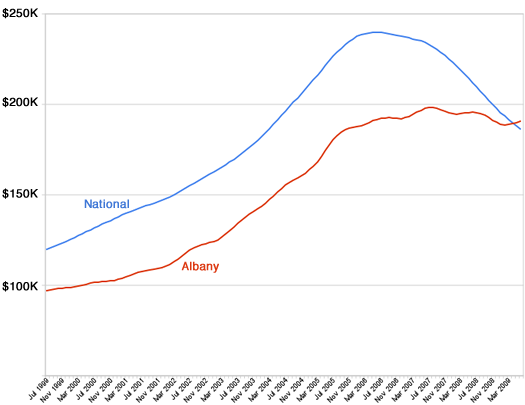
This chart tracks the last 10 years of Zillow's home value index.
The Albany metro area is one of the five best places to buy a home, according to Zillow. A rep for the real estate info site told Good Morning America that Albany is "a good value." And it's a solid market because of government and higher education jobs.
That steadiness might not have looked so great earlier this decade when home values were surging in other parts of the country. But as you can see from the chart above, slow and steady seems to have worked out OK.
For a little bit of perspective, we pulled the numbers on home values from the last 10 years for a handful of metro areas from Zillow and compared them to Albany. The results -- in a big graph -- after the jump.
Possible Capital Region post office closures
 Seven Capital Region post offices could be closed as part of a system-wide consolidation.
Seven Capital Region post offices could be closed as part of a system-wide consolidation.
They're among the 700+ locations nationwide that are on the slate for closing and consolidation. (The full list is posted on the Postal Regulatory Commission's web site -- it appears to be getting hammered by traffic right now.) The USPS is facing a $7 billion loss this year.
After the jump, a list of the local post offices on the list. We also put together a map.
They came from the Capital Region

You know, in addition to her.
Sure, everyone knows that Jimmy Fallon went to St. Rose, and that Rachael Ray grew up near Lake George. But as it happens, this area makes quite a few more cameo appearances in the story of American pop culture.
Here are a few celebs to help you maintain your Capital Region cred the next time your friends from other parts of the country start name dropping.
Man shot to death by Schenectady police, no more Bruno bacon, conflict over dredging dump site, artist accused of stealing his own paintings
Schenectady police say an officer shot and killed a man wielding a butcher knife Saturday afternoon. Schenectady's public safety commissioner says the man moved quickly toward the officer -- and there's "nothing that indicates" the officer did not comply with department's laws and regulations. The Schenectady County DA's office says it will investigate. The officer who fired on the man had been shot in the line of duty ten years ago. Saturday's shooting was the first by an officer in Schenectady since 2002. [Daily Gazette] [CapNews9] [CBS6] [TU] [Daily Gazette] [TU]
A state panel has concluded that the City of Albany's refusal to release "fixed" parking tickets could be a violation of state law. [TU]
With Joe Bruno no longer sending this bacon this way, the Capital Region's haul of state Senate pork is down 76 percent. [TU]
Andrew Cuomo has apparently "begun to embrace the possibility of a run for governor." [NYT]
It sounds like Carolyn Maloney is now leaning against challenging Kirsten Gillibrand in the Senate Democratic primary. [Politico]
A historically wet July

We're now finished talking about the weather.
Update! It's not official yet, but it looks this July will end up being the second wettest month on record in the Capital Region. This past July was the rainiest on record in the Capital Region.
Friday's deluge (2.42 inches) brought the month's total to 9.91 inches. Not only does that set the mark for the rainiest July -- it's also one of the wettest months ever recorded in the Capital Region.
July's total ranks #2 all-time on the list kept by the National Weather Service, which dates back to 1874. Though as commenter Rainman points out, there are records of a handful of even rainier months before that.
Earlier on AOA: A damp decade
(Thanks to jwk and Rainman.)
Data from National Weather Service. Records start in 1874.
Where have we seen this before?
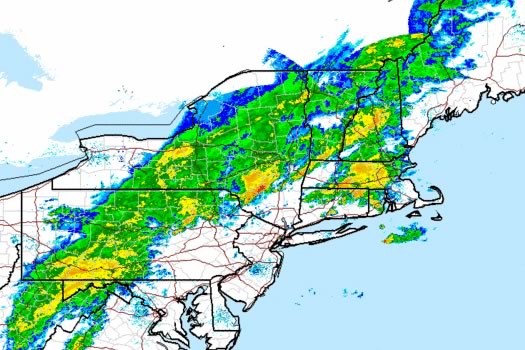
The radar picture at 11:30 on Friday.
It just won't stop. Ack.
There's a flash flood warning for Albany County, Rennselaer County and parts of Saratoga County (including Saratoga Springs and Clifton Park) and Schenectady County (including Schenectady and Rotterdam).
July just might make it into the Top 10 after all.
image: National Weather Service
A damp decade
 The seemingly constant rain this summer prompted us to look up whether July 2009 is shaping up to be a historically wet July. At 7.27 inches of rain so far (as of the end of Wednesday), we're more than 3 inches above the average -- but we're still not quite into the top 10 wettest Albany months on record. (We'd need another .75 inches or so to make the list.)
The seemingly constant rain this summer prompted us to look up whether July 2009 is shaping up to be a historically wet July. At 7.27 inches of rain so far (as of the end of Wednesday), we're more than 3 inches above the average -- but we're still not quite into the top 10 wettest Albany months on record. (We'd need another .75 inches or so to make the list.)
But we came across something interesting while looking up the numbers: a historically wet year has become common during this decade. Check it out...
Ask AOA: Know of a good contractor?
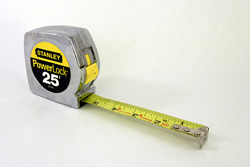 Emails Ari:
Emails Ari:
I'm in the process of buying my first house (woo!) and need to do some cosmetic updates before I move in. I've only been here about a year and have been renting during that time, so I have no idea where I can find good contractors. I turn to the wisdom of the masses at AOA- where can I find reliable and reasonably-priced painters and carpet/tile guys (or gals)?
We'll extend Ari's question to include people who do bathroom/kitchen remodels and other similar projects.
Have a good experience with someone? Please share.
Earlier on AOA: Ask AOA: car mechanics
Photo: Flickr user redjar
Cheap and good?

Who you calling cheap?
Forbes has ranked the Albany metro area the sixth best among "cheap cities."
So, hey, good for the Capital Region. And we agree that are a lot good things about living here. But we're not so sure about the "cheap" designation...
To the suburbs

Where did they go?
The Census Bureau recently released its breakdown of population estimates for 2008. And while it's interesting to see the bureau's best guess about how many people are living in a place right now (well, recently), we figured it'd be more interesting too look at the longer trends.
So we looked up the population stats over the last two decades for a bunch of Capital Region cities and towns.
To the data!
At least we're not ________
 What with the state Senate completely borked and all the seemingly-endless rain, it could be easy to get down on where we live.
What with the state Senate completely borked and all the seemingly-endless rain, it could be easy to get down on where we live.
But things could be worse. Really.
Capital Region high school graduation rates

Albany High School has some room for improvement
The state Department of Education released data about high school graduation rates this week.
We picked through the data to pull out the relevant info about Capital Region schools. Some of the numbers are a little shocking.
Ask AOA: car mechanics
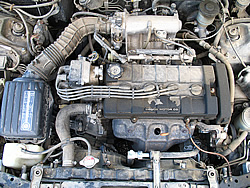 Update: We collected all the recommendations people posted into a list and map.
Update: We collected all the recommendations people posted into a list and map.
Emails Alex:
I've recently started to experience some car trouble. I'm relatively new to the area and none of my friends have been here long enough to recommend a good, independent mechanic. I've overpaid at chain shops for too long and I don't want to go to a dealer--can AOA recommend an honest mechanic!?
Anyone have suggestions?
photo: Flickr user Mess of Pottage
State Senate frozen with no end in sight, local orgs lack pandemic plans, abandoned high-end homes in Saratoga, DEC hoping for hot turtle action
The state Senate is basically frozen right now. Yesterday a judge dismissed the Democrats' suit seeking to void last week's takeover by the Republicans + Pedro Espada. The Republicans claimed victory and tried to go into session -- but with only 31 senators present, they couldn't form a quorum. [NYT] [Daily Politics]
David Paterson again called on the Senate to work out some sort of power sharing deal, perhaps bringing someone such as former chief judge Judith Kaye to preside over the chamber. He also said the line of succession to the governorship is in dispute. [TU]
If the state Senate ever does back into session, Espada is arguing that he should have two votes -- his regular vote plus one as acting lieutenant governor. Apparently there's no precedent for that, though. [NYP]
By the way: the Assembly has been working while all this has been going on. [Daily Politics]
Who has the best weather forecast?

Hmm... is this partly sunny or partly cloudy?
Weather forecasts are everywhere these days: TV, radio, the internet -- even those electronic billboards along I-90 now include forecasts. But how do you know that the forecast you're getting is any good?
There's only one way to find out who really gives the best forecast: put them to a head-to-head test.
Albany and Rensselaer to get buzzed

We're pretty sure this is what the helicopter will look like.
A disaster preparedness drill next week will include a helicopter buzzing downtown Albany and Rensselaer. From the NYS Disaster Preparedness Commission:
Residents in New York State's Capital Region can expect to see a low-flying Bell 412 helicopter flying at altitudes ranging from 150 to 1,000 feet above the ground from Monday, June 1, through next Friday, June 5. The helicopter is owned by the U.S. Department of Energy's National Nuclear Security Administration
The silver and black with blue trim helicopter is flying in support of the Empire 09 Exercise that is taking place primarily in Albany during the same time period. The aircraft will be based out of the Albany International Airport and will fly mostly over downtown Albany, areas of the Hudson River and western Rensselaer County.
The training exercise is reportedly for a "dirty bomb" event in the Capital Region -- and the helicopter will be equipped with a radiological detector. [TU]
photo: Alan Radecki
Three new local blogs to check out
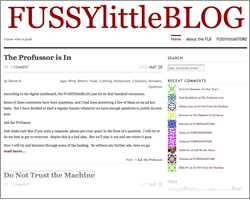 The Capital Region already had a bunch of interesting people who blog, but we wanted to point out a trio of new local blogs that we've been enjoying.
The Capital Region already had a bunch of interesting people who blog, but we wanted to point out a trio of new local blogs that we've been enjoying.
The Capital Region pork report
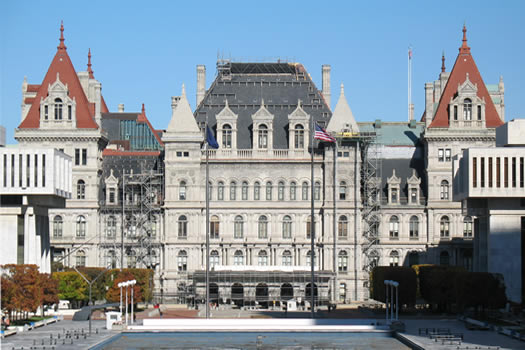
Oink.
The New York State Assembly recently published its list of member items for this budget year. If the phrase "member item" doesn't ring a bell, you might know them by their more common name: pork.
But, really, one person's pork is another's bacon. Thanks to a big help from NYPIRG (see note), a breakdown of the Capital Region's bacon haul -- names, organizations, totals -- is after the jump.
All counted, the Capital Region scored a little more than $1.46 million in Assembly member items this year. The Assembly gave out $85 million total.
518 Day
 Because "number days" are oh-so-popular lately (e.g.: 420, Unix Day), we figured we'd mention that today -- May 18 -- is 518 Day.
Because "number days" are oh-so-popular lately (e.g.: 420, Unix Day), we figured we'd mention that today -- May 18 -- is 518 Day.
So knock one (of whatever) back today in honor of the Capital Region. Yo.
(This probably would have never occurred to us if TJ hadn't pointed it out.)







... said KGB about Drawing: What's something that brought you joy this year?